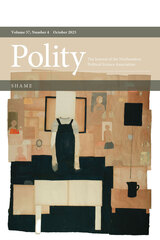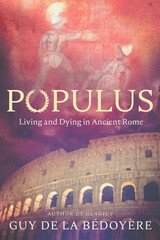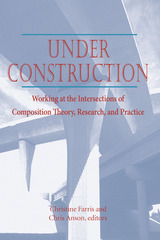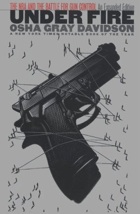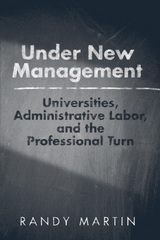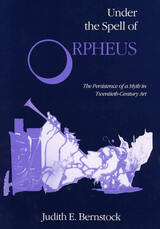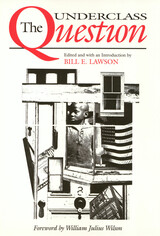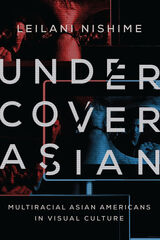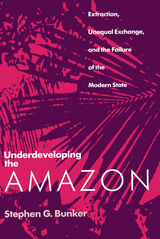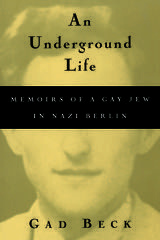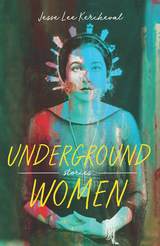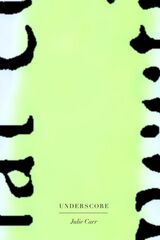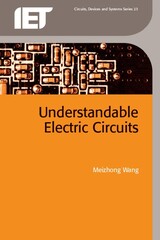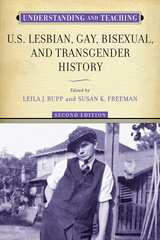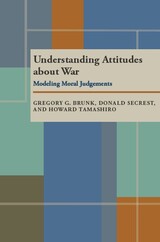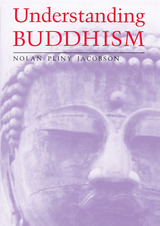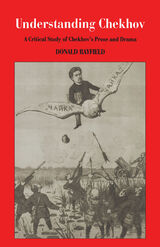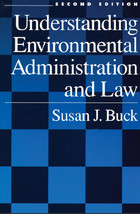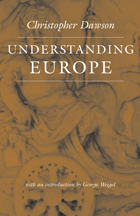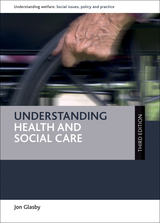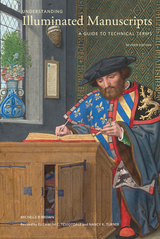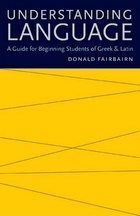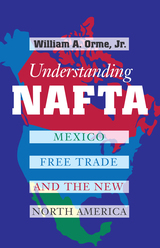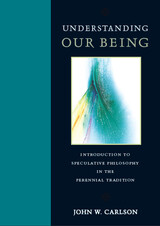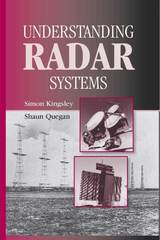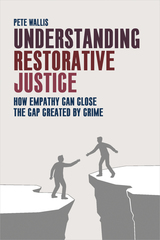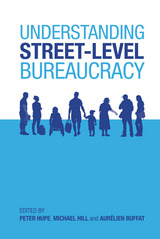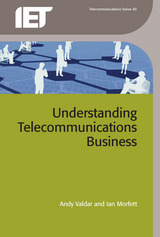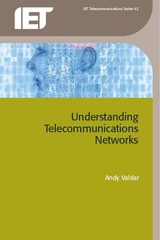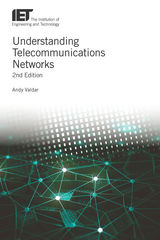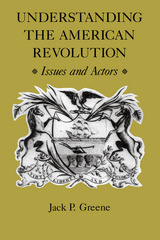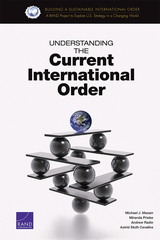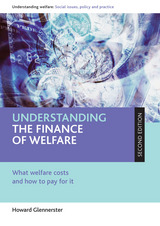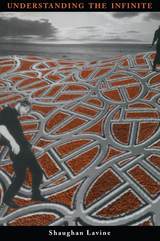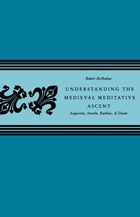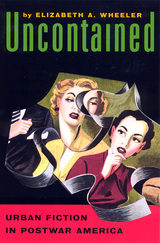 Uncontained: Urban Fiction in Postwar America
Wheeler, Elizabeth A.
Rutgers University Press, 2001 In the postwar era, American urban fiction is dominated by the imagery of containment. Across the fictional landscape, the city is divided into segregated zones, marked by the threat of inevitable violence, and set off from the safety of equally contained suburbs. Mean and dangerous, the city can only be navigated by a solitary expert, alienated and male. In Uncontained, Elizabeth A. Wheeler offers a critique of this familiar story-evident in the noir. narratives of James M. Cain and in work by Ellison, Roth, Salinger, Percy, Capote, and others —and challenges its link to the postwar city. Discussing film, short stories, and novels from a cross-section of American cities, Wheeler integrates these stories of containment into a shared pattern and reads them across a broad spectrum of famous and forgotten works by men and women of various ethnic and literary traditions to reveal a larger vision of postwar America. Knowing that containment is never the entire story, that diversity or trauma always shows itself, she shows how the uncontained has shaped the historical moment. Aware that liberating counterstories do get told, she places them in dialogue with those of the alienated man, the war veteran, Beat hipster, noir detective, and ironic suburbanite — in historical context — and revives the idea of urban space as a place of openness, thereby challenging a literary containment of racial difference, gender, and sexuality. By reading Paule Marshall in tandem with Philip Roth, Wheeler explores the relationships between adjacent neighborhoods and reconnects separate literary and geographic areas. By bringing Ann Bannon's lesbian pulp fiction, Hubert Selby's cult novels, or the work of John Okada, Hisaye Yamamoto, Chester Himes, Gwendolyn Brooks's, Jo Sinclair, and many others to bear on more canonical texts, she offers a more complete understanding of this period of American fiction — one that points toward a city that is open and inclusive. Uncontained suggests that while decline, division, and decay form a major part of the story of mid-century urban America, the postwar city also represents much of what is best about American life. Rather than reproducing the containment of culture, Wheeler places together the wildly disparate to show how we move beyond containment.
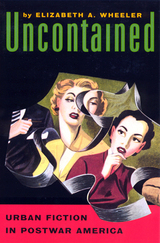 Uncontained: Urban Fiction in Postwar America
Wheeler, Elizabeth A.
Rutgers University Press, 2001 In the postwar era, American urban fiction is dominated by the imagery of containment. Across the fictional landscape, the city is divided into segregated zones, marked by the threat of inevitable violence, and set off from the safety of equally contained suburbs. Mean and dangerous, the city can only be navigated by a solitary expert, alienated and male. In Uncontained, Elizabeth A. Wheeler offers a critique of this familiar story-evident in the noir. narratives of James M. Cain and in work by Ellison, Roth, Salinger, Percy, Capote, and others —and challenges its link to the postwar city. Discussing film, short stories, and novels from a cross-section of American cities, Wheeler integrates these stories of containment into a shared pattern and reads them across a broad spectrum of famous and forgotten works by men and women of various ethnic and literary traditions to reveal a larger vision of postwar America. Knowing that containment is never the entire story, that diversity or trauma always shows itself, she shows how the uncontained has shaped the historical moment. Aware that liberating counterstories do get told, she places them in dialogue with those of the alienated man, the war veteran, Beat hipster, noir detective, and ironic suburbanite — in historical context — and revives the idea of urban space as a place of openness, thereby challenging a literary containment of racial difference, gender, and sexuality. By reading Paule Marshall in tandem with Philip Roth, Wheeler explores the relationships between adjacent neighborhoods and reconnects separate literary and geographic areas. By bringing Ann Bannon's lesbian pulp fiction, Hubert Selby's cult novels, or the work of John Okada, Hisaye Yamamoto, Chester Himes, Gwendolyn Brooks's, Jo Sinclair, and many others to bear on more canonical texts, she offers a more complete understanding of this period of American fiction — one that points toward a city that is open and inclusive. Uncontained suggests that while decline, division, and decay form a major part of the story of mid-century urban America, the postwar city also represents much of what is best about American life. Rather than reproducing the containment of culture, Wheeler places together the wildly disparate to show how we move beyond containment.
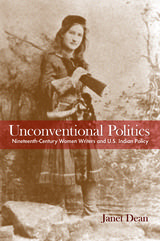 Unconventional Politics: Nineteenth-Century Women Writers and U.S. Indian Policy
Janet Dean
University of Massachusetts Press, 2016 Throughout the nineteenth century, Native and non-Native women writers protested U.S. government actions that threatened indigenous people's existence. The conventional genres they sometimes adopted—the sensationalistic captivity narrative, sentimental Indian lament poetry, didactic assimilation fiction, and the mass-circulated commercial magazine—typically had been used to reinforce the oppressive policies of removal, war, and allotment. But in Unconventional Politics Janet Dean explores how four authors, Sarah Wakefield, Lydia Huntley Sigourney, the Muscogee/Creek S. Alice Callahan, and the Cherokee Ora V. Eddleman, converted these frameworks to serve a politics of dissent. Intervening in current debates in feminist and Native American literary criticism, Dean shows how these women advocated for Native Americans by both politicizing conventional literature and employing literary skill to respond to national policy.
Dean argues that in protesting U.S. Indian policy through popular genres, Wakefield, Sigourney, Callahan, and Eddleman also critiqued cultural protocols and stretched the contours of accepted modes of feminine discourse. Their acts of improvisation and reinvention tell a new story about the development of American women's writing and political expression.
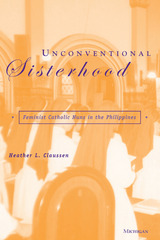 Unconventional Sisterhood: Feminist Catholic Nuns in the Philippines
Heather L. Claussen
University of Michigan Press, 2001 Unconventional Sisterhood is an ethnographic exploration of the ways in which Filipina Missionary Benedictine Sisters are renegotiating traditional understandings of gender, religious responsibility, and national identity in the context of a rapidly globalizing nation. Unlike the popular stereotypes of staid sisters cloaked in rigid religious dogmatism, they are doing so by telling jokes, engaging in eclectic religious rituals, maintaining connections with a local nationalist cult, and committing themselves to a radical and feminist politics.
This work represents an important addition to scholarship on Philippine feminism. It is one of few ethnographies that focuses on female monasticism--of particular cultural importance in the Christian Philippines, where nuns enjoy relatively high social status and freedom from many of the traditional constraints delineating Filipina lives. It is noteworthy as well for its focus on metropolitan Manila--a socially complex, dynamic, diverse, and understudied environment.
Heather L. Claussen is an anthropologist currently living in Santa Cruz, California.
 Unconventional Sisterhood: Feminist Catholic Nuns in the Philippines
Heather L. Claussen
University of Michigan Press
Unconventional Sisterhood is an ethnographic exploration of the ways in which Filipina Missionary Benedictine Sisters are renegotiating traditional understandings of gender, religious responsibility, and national identity in the context of a rapidly globalizing nation. Unlike the popular stereotypes of staid sisters cloaked in rigid religious dogmatism, they are doing so by telling jokes, engaging in eclectic religious rituals, maintaining connections with a local nationalist cult, and committing themselves to a radical and feminist politics.
This work represents an important addition to scholarship on Philippine feminism. It is one of few ethnographies that focuses on female monasticism--of particular cultural importance in the Christian Philippines, where nuns enjoy relatively high social status and freedom from many of the traditional constraints delineating Filipina lives. It is noteworthy as well for its focus on metropolitan Manila--a socially complex, dynamic, diverse, and understudied environment.
Heather L. Claussen is an anthropologist currently living in Santa Cruz, California.
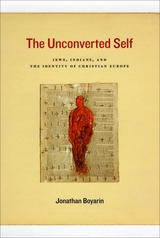 The Unconverted Self: Jews, Indians, and the Identity of Christian Europe
Jonathan Boyarin
University of Chicago Press, 2009 Europe’s formative encounter with its “others” is still widely assumed to have come with its discovery of the peoples of the New World. But, as Jonathan Boyarin argues, long before 1492 Christian Europe imagined itself in distinction to the Jewish difference within. The presence and image of Jews in Europe afforded the Christian majority a foil against which it could refine and maintain its own identity. In fundamental ways this experience, along with the ongoing contest between Christianity and Islam, shaped the rhetoric, attitudes, and policies of Christian colonizers in the New World. The Unconverted Self proposes that questions of difference inside Christian Europe not only are inseparable from the painful legacy of colonialism but also reveal Christian domination to be a fragile construct. Boyarin compares the Christian efforts aimed toward European Jews and toward indigenous peoples of the New World, bringing into focus the intersection of colonial expansion with the Inquisition and adding significant nuance to the entire question of the colonial encounter. Revealing the crucial tension between the Jews as “others within” and the Indians as “others without,” The Unconverted Self is a major reassessment of early modern European identity.
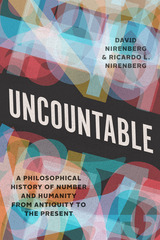 Uncountable: A Philosophical History of Number and Humanity from Antiquity to the Present
David Nirenberg and Ricardo L. Nirenberg
University of Chicago Press, 2021 Ranging from math to literature to philosophy, Uncountable explains how numbers triumphed as the basis of knowledge—and compromise our sense of humanity.
Our knowledge of mathematics has structured much of what we think we know about ourselves as individuals and communities, shaping our psychologies, sociologies, and economies. In pursuit of a more predictable and more controllable cosmos, we have extended mathematical insights and methods to more and more aspects of the world. Today those powers are greater than ever, as computation is applied to virtually every aspect of human activity. Yet, in the process, are we losing sight of the human? When we apply mathematics so broadly, what do we gain and what do we lose, and at what risk to humanity?
These are the questions that David and Ricardo L. Nirenberg ask in Uncountable, a provocative account of how numerical relations became the cornerstone of human claims to knowledge, truth, and certainty. There is a limit to these number-based claims, they argue, which they set out to explore. The Nirenbergs, father and son, bring together their backgrounds in math, history, literature, religion, and philosophy, interweaving scientific experiments with readings of poems, setting crises in mathematics alongside world wars, and putting medieval Muslim and Buddhist philosophers in conversation with Einstein, Schrödinger, and other giants of modern physics. The result is a powerful lesson in what counts as knowledge and its deepest implications for how we live our lives.
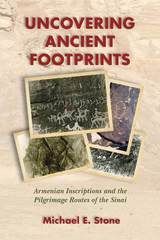 Uncovering Ancient Footprints: Armenian Inscriptions and the Pilgrimage Routes of the Sinai
Michael E. Stone
SBL Press, 2017 Explore pilgrimage routes, epigraphy, and the history of writing with an expert guide
From the late 1970s through 1982, Michael E. Stone conducted a number of expeditions to the Sinai peninsula, searching for ancient inscriptions. In this book Stone describes his search, crowned by the discovery of the most ancient Armenian inscriptions known. Here Stone describes not only the inscriptions discovered along his journeys but also the Sinai, its past and present, its human inhabitants, its flora and fauna, and its history. Though once common, well-informed travel books to the Middle East with a broad academic interest and a specific focus have become rare. Stone’s diary of his expeditions in the Sinai fill this gap with vivid descriptions, poetry, and illustrations.
Features
- An account of five expeditions into the Sinai
- Thirteen poems written by Stone
- Twenty-six figures and five maps
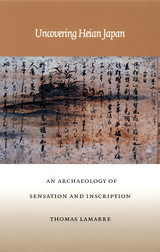 Uncovering Heian Japan: An Archaeology of Sensation and Inscription
Thomas LaMarre
Duke University Press, 2000 The poetry of the Heian court of Japan has typically been linked with the emergence of a distinct Japanese language and culture. This concept of a linguistically homogeneous and ethnically pure “Japaneseness” has been integral to the construction of a modern Japanese nation, especially during periods of western colonial expansion and cultural encroachment. But Thomas LaMarre argues in Uncovering Heian Japan that this need for a cultural unity—a singular Japanese identity—has resulted in an overemphasis of a relatively minor aspect of Heian poetry, obscuring not only its other significant elements but also the porousness of Heian society and the politics of poetic expression.
Combining a pathbreaking visual analysis of the calligraphy with which this poetry was transcribed, a more traditional textual analysis, and a review of the politics of the period, LaMarre presents a dramatically new view of Heian poetry and culture. He challenges the assumption of a cohesive “national imagination,” seeing instead an early Japan that is ethnically diverse, territorially porous, and indifferent to linguistic boundaries. Working through the problems posed by institutionalized notions of nationalism, nativism, and modernism, LaMarre rethinks the theories of scholars such as Suzuki Hideo, Yoshimoto Takaaki, and Komatsu Shigemi, in conjunction with theorists such as Derrida, Karatani, Foucault, and Deleuze. Contesting the notion that speech is central to the formation of community, Uncovering Heian Japan focuses instead on the potential centrality of the more figural operations of poetic practice.
Specialists in Japanese history and culture as well as scholars working in other areas of cultural criticism will find that this book enriches their understanding of an early Japan that has exerted so much influence on later concepts of what it means to be Japanese.
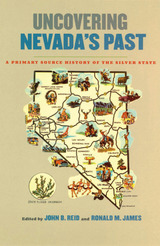 Uncovering Nevada's Past: A Primary Source History of the Silver State
John B. Reid
University of Nevada Press, 2004 Nevada’s relatively brief history has been nonetheless remarkably eventful. From the activities of the first Euro-American explorers to the booms and busts of the mining industry, from the struggles and artistry of the Native Americans to the establishment of liberal divorce laws and such unique industries as legalized gambling and prostitution, from Cold War atomic tests to the civil rights movement, from the arrival of a diverse and rapidly growing urban population to the Sagebrush Rebellion, Nevada has played a part in the nation’s development while following its own ruggedly independent path. In Uncovering Nevada’s Past, historians John B. Reid and Ronald M. James have collected more than fifty major documents and visual images—some never before published—that define Nevada’s colorful and complex development. Here are the words of such literary luminaries as Mark Twain, Sarah Winnemucca, and Arthur Miller; anonymous newspaper articles; public documents including Abraham Lincoln’s proclamation of Nevada statehood and the probate records of murdered Virginia City prostitute Julia Bulette; personal letters; political speeches; and personal accounts of, among other subjects, the construction of Hoover Dam, life in a mining boomtown, racial segregation in Las Vegas, political careers, and atomic testing. Images include photographs of significant Nevada architecture, the masterpieces of renowned Paiute basketmaker Dat-so-la-lee, tree carvings by Basque sheepherders, and tourism promotions. The collection ranges from the earliest descriptions of the region to the current debate on Yucca Mountain. The volume editors have provided an introduction and headnotes that set the documents into their historical and social context. Uncovering Nevada’s Past is a vital, enlightening record of Nevada’s history—in the words of the people who lived and made it—that makes for lively and engaging reading.
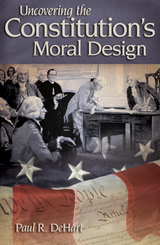 Uncovering the Constitution's Moral Design
Paul R. DeHart
University of Missouri Press, 2007 The U.S. Constitution provides a framework for our laws, but what does it have to say about morality? Paul DeHart ferrets out that document’s implicit moral assumptions, demonstrating that the Constitution presupposes a natural law to which human law must conform. His argument works toward resolving current debates over the Constitution’s normative framework while remaining detached from the social issues that divide today’s political arena.
In critiquing previous attempts at describing and evaluating the Constitution’s normative framework, DeHart demonstrates that the Constitution’s moral framework corresponds largely to classical moral theory. Using the method of Inference to the Best Explanation to ascertain our Constitution’s moral meaning, he challenges the logical coherency of modern moral philosophy, normative positivism, and other theories that the Constitution has been argued to embody, offering instead an innovative methodology that can be applied to uncovering the normative framework of other constitutions as well.
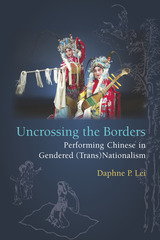 Uncrossing the Borders: Performing Chinese in Gendered (Trans)Nationalism
Daphne P. Lei
University of Michigan Press, 2019 Over many centuries, women on the Chinese stage committed suicide in beautiful and pathetic ways just before crossing the border for an interracial marriage. Uncrossing the Borders asks why this theatrical trope has remained so powerful and attractive. The book analyzes how national, cultural, and ethnic borders are inevitably gendered and incite violence against women in the name of the nation. The book surveys two millennia of historical, literary, dramatic texts, and sociopolitical references to reveal that this type of drama was especially popular when China was under foreign rule, such as in the Yuan (Mongol) and Qing (Manchu) dynasties, and when Chinese male literati felt desperate about their economic and political future, due to the dysfunctional imperial examination system. Daphne P. Lei covers border-crossing Chinese drama in major theatrical genres such as zaju and chuanqi, regional drama such as jingju (Beijing opera) and yueju (Cantonese opera), and modernized operatic and musical forms of such stories today.
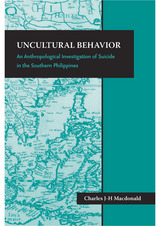 Uncultural Behavior: An Anthropological Investigation of Suicide in the Southern Philippines
Charles J-H. Macdonald
University of Hawaii Press, 2007 Until recently the people of Kulbi-Kenipaqan lived on the fringes of the modern world following traditional customs and beliefs, practicing shifting agriculture, and leading an outwardly peaceful existence in a remote corner of Palawan island. Yet this small community, basically indistinguishable in society and culture from its immediate neighbors to the north, has one of the highest rates of suicide in the world. Why would the comparatively happy and well-off inhabitants of Kulbi fall victim to despair? Uncultural Behavior investigates the mystery of self-inflicted death among this nonviolent and orderly people in the Southern Philippines.
To make sense of such a phenomenon, Charles Macdonald probes the beliefs, customs, and general disposition of this Palawan people, exploring how they live, think, behave, and relate to one another. Early chapters examine group formation and the spatialization of social ties, material culture, marriage, and law, providing an extensive ethnographic account of the Kulbi way of life. The author offers insights into the spiritual world of the community and addresses the local theory of emotions and the words that supply the vocabulary and idiom of indigenous commentaries on suicide. A well-documented case study of a suicide and its aftermath gives readers an idea of how Kulbi people treat suicide and their conflicting views on the subject. Following an analysis of statistical information, the author presents five "profiles," bringing together motivations, actors, and circumstances. He concludes by examining the perspectives of neurobiology and genetics as well as psychology, sociology, and history.
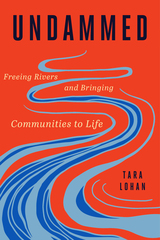 Undammed: Freeing Rivers and Bringing Communities to Life
Tara Lohan
Island Press, 2025 Free-flowing rivers in the United States are an endangered species. With more than 500,000 dams in place, we’ve dammed and diverted almost every major river, straightening curves and blocking passage for fish and other aquatic animals, pushing many to the brink. Now a heartening new movement is helping to demolish harmful or obsolete structures and restore new life to rivers and the communities that depend on them. In doing so, it offers a pathway to undoing environmental harm to nature—and to ourselves.
In Undammed, environmental journalist Tara Lohan takes a clear-eyed look at the unexpected benefits of dam removal after centuries of dam-building. In helping to restore rivers, she argues, we’re protecting our own communities by improving water quality, enhancing public safety, and boosting fish populations that feed people and restore rights for Native American Tribes. Lohan chronicles the removal effort of four dams on the Klamath River in northern California and southern Oregon, the largest dam-removal and river-restoration project in the world. In the Northwest, she walks readers through the politically heated debate over potential removal of dams on the Lower Snake River in Washington to help restore salmon and orcas. And she visits the Kennebec and Penobscot rivers in Maine where time is running out to save Atlantic salmon. In the Southwest, Lohan considers the need to rethink the concrete monoliths on its largest rivers in the face of longer droughts, higher temperatures, and overallocated resources. And in Ohio, she highlights how removing unneeded dams is helping the once lifeless Cuyahoga River bounce back, benefitting urban communities in innumerable, tangible ways. In other efforts across the country, she shows why removing deadbeat and small dams can have big impacts and is helping drive action beyond our borders. In Europe, where river barriers occur almost every half-mile, the US movement is spurring a rival effort to restore natural flow to rivers degraded by obstructions.
Undammed is an inspirational look at our changing relationship with the natural world, showing the cascade of benefits that come when we no longer turn our backs on rivers. And in helping to restore rivers, we’re helping ourselves.
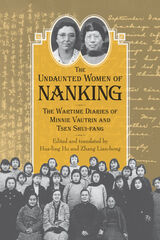 Undaunted Women of Nanking: The Wartime Diaries of Minnie Vautrin and Tsen Shui-fang
Edited and Translated by Hua-ling Hu and Zhang Lian-hong
Southern Illinois University Press, 2010 One of the Chinese American Librarians Association’s Ten Best Books of 2010
During the infamous “Rape of Nanking,” a brutal military occupation of Nanking, China, that began on December 13, 1937, it is estimated that Japanese soldiers killed between 200,000 and 300,000 Chinese and raped between 20,000 and 80,000 women. To shelter civilian refugees, a group of Westerners established a Nanking Safety Zone. Among these humanitarians was Minnie Vautrin, an American missionary and acting president of Ginling College. She and Tsen Shui-fang, her Chinese assistant and a trained nurse, turned the college into a refugee camp, which protected more than 10,000 women and children during the height of the ordeal. The Undaunted Women of Nanking juxtaposes day-by-day the exhausted and terrified women’s wartime diaries, providing vital eyewitness accounts of the Rape of Nanking and a unique focus on the Ginling refugee camp and the sufferings of women and children. Vautrin's diary reveals the humanity and courage of a female missionary in a time of terror. Tsen Shui-fang’s diary, never before published in English and translated here for the first time, is the only known daily account by a Chinese national written during the crisis and not retrospectively. As such, it records a unique perspective: that of a woman grappling with feelings of anger, sorrow, and compassion as she witnesses the atrocities being committed in her war-torn country. Editors Hua-ling Hu and Zhang Lian-hong have added many informative annotations to the diary entries from sources including the proceedings of the Tokyo War Crimes Trial of 1946, Vautrin’s correspondence, John Rabe’s diary, and other historical documents. Also included are biographical sketches of the two women, a note on the diaries, and information about the aftermath of the tragedy, as well as maps and photos—some of which appear in print in this book for the first time.
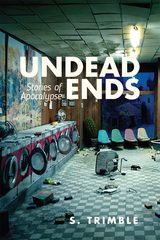 Undead Ends: Stories of Apocalypse
S. Trimble
Rutgers University Press, 2019 Undead Ends is about how we imagine humanness and survival in the aftermath of disaster. This book frames modern British and American apocalypse films as sites of interpretive struggle. It asks what, exactly, is ending? Whose dreams of starting over take center stage, and why? And how do these films, sometimes in spite of themselves, make room to dream of new beginnings that don’t just reboot the world we know? Trimble argues that contemporary apocalypse films aren’t so much envisioning The End of the world as the end of a particular world; not The End of humanness but, rather, the end of Man. Through readings of The Road, I Am Legend, 28 Days Later, 28 Weeks Later, Children of Men, and Beasts of the Southern Wild, this book demonstrates that popular stories of apocalypse can trouble, rather than reproduce, Man’s story of humanness. With some creative re-reading, they can even unfold towards unexpected futures. Mainstream apocalypse films are, in short, an occasion to imagine a world After Man.
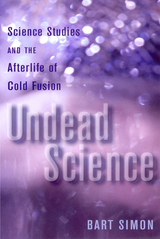 Undead Science: Science Studies and the Afterlife of Cold Fusion
Simon, Bart
Rutgers University Press, 2002 Undead Science examines the story of cold fusion, one of the most publicized scientific controversies of the late twentieth century. In 1989 two Utah-based “discoverers” claimed to have developed an electrochemical process that produced more energy than was required to initiate the process. Finding no other explanation, the researchers described their findings as some kind of nuclear reaction. If they were correct, an important new energy source would have been found. Objections surfaced quickly, and in the year that followed, hundreds of scientists worldwide attempted to reproduce these results. Most, though not all, failed, and the controversy became increasingly antagonistic. By 1990, general scientific opinion favored the skeptics and experimental work went into a steep decline. Nevertheless, many scientists continue to do research in what Bart Simon calls this “undead science.” Simon argues that in spite of widespread skepticism in the scientific community, there has been a continued effort to make sense of the controversial phenomenon. Researchers in well-respected laboratories continue to produce new and rigorous work. In this manner, cold fusion research continues to exist long after the controversy has subsided, even though the existence of cold fusion is circumscribed by the widespread belief that the phenomenon is not real. The survival of cold fusion signals the need for a more complex understanding of the social dynamics of scientific knowledge making, the boundaries between experts, intermediaries, and the lay public, and the conceptualization of failure in the history of science and technology.
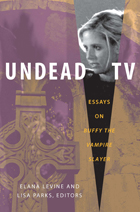 Undead TV: Essays on Buffy the Vampire Slayer
Elana Levine and Lisa Parks, eds.
Duke University Press, 2007 When the final episode of Buffy the Vampire Slayer aired in 2003, fans mourned the death of the hit television series. Yet the show has lived on through syndication, global distribution, DVD release, and merchandising, as well as in the memories of its devoted viewers. Buffy stands out from much entertainment television by offering sharp, provocative commentaries on gender, sexuality, race, ethnicity, and youth. Yet it has also been central to changing trends in television production and reception. As a flagship show for two U.S. “netlets”—the WB and UPN— Buffy helped usher in the “post-network” era, and as the inspiration for an active fan base, it helped drive the proliferation of Web-based fan engagement. In Undead TV, media studies scholars tackle the Buffy phenomenon and its many afterlives in popular culture, the television industry, the Internet, and academic criticism. Contributors engage with critical issues such as stardom, gender identity, spectatorship, fandom, and intertextuality. Collectively, they reveal how a vampire television series set in a sunny California suburb managed to provide some of the most biting social commentaries on the air while exposing the darker side of American life. By offering detailed engagements with Sarah Michelle Gellar’s celebrity image, science-fiction fanzines, international and “youth” audiences, Buffy tie-in books, and Angel’s body, Undead TV shows how this prime-time drama became a prominent marker of industrial, social, and cultural change. Contributors. Ian Calcutt, Cynthia Fuchs, Amelie Hastie, Annette Hill, Mary Celeste Kearney, Elana Levine, Allison McCracken, Jason Middleton, Susan Murray, Lisa Parks
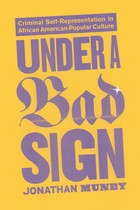 Under a Bad Sign: Criminal Self-Representation in African American Popular Culture
Jonathan Munby
University of Chicago Press, 2011 What accounts for the persistence of the figure of the black criminal in popular culture created by African Americans? Unearthing the overlooked history of art that has often seemed at odds with the politics of civil rights and racial advancement, Under a Bad Sign explores the rationale behind this tradition of criminal self-representation from the Harlem Renaissance to contemporary gangsta culture.
In this lively exploration, Jonathan Munby takes a uniquely broad view, laying bare the way the criminal appears within and moves among literary, musical, and visual arts. Munby traces the legacy of badness in Rudolph Fisher and Chester Himes’s detective fiction and in Claude McKay, Julian Mayfield, and Donald Goines’s urban experience writing. Ranging from Peetie Wheatstraw’s gangster blues to gangsta rap, he also examines criminals in popular songs. Turning to the screen, the underworld films of Oscar Micheaux and Ralph Cooper, the 1970s blaxploitation cycle, and the 1990s hood movie come under his microscope as well. Ultimately, Munby concludes that this tradition has been a misunderstood aspect of African American civic life and that, rather than undermining black culture, it forms a rich and enduring response to being outcast in America.
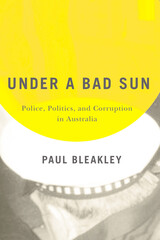 Under a Bad Sun: Police, Politics, and Corruption in Australia
Paul Bleakley
Michigan State University Press, 2021 Why do police officers turn against the people they are hired to protect? This question seems all the more urgent in the wake of recent global protests against police brutality. Historical criminologist Paul Bleakley addresses this by examining a series of intersecting cases of police corruption in Queensland, Australia. The protection and extortion of illegal gambling operators and sex workers were only the most visible features of a decades-long, pervasive culture of corruption in the state’s law enforcement agency. Even more dangerous—and far harder to prosecute—was the corrupt bargain between the police and the state’s conservative government, which gave law enforcement free rein to profit from criminalized vice in return for supporting the government’s repression and persecution of its political enemies, from punk music fans to gay men to left-wing protestors. While intimidating members of the political opposition, the police also protected friends and allies from criminal prosecution, even for offenses as serious as child sex abuse. When journalists and investigators revealed this corrupt bargain in 1987, the premier was forced from office and the police commissioner went to prison. But untangling politics from policing proved—and continues to prove—far more difficult in societies around the world. This true crime story goes beyond the everyday violations of law and ethics to underscore how central honest, equitable policing is to a truly democratic society.
 Under a Black Star: The Maroon Impulse in New Orleans
Amari Johnson
University of Minnesota Press, 2025 Uncovering the spirit of freedom and self-determination in New Orleans In Under a Black Star, Amari Johnson explores what he defines as the “maroon impulse” among the BlackStar Community in the Algiers neighborhood of New Orleans. This community sought autonomy for Black people facing systemic marginalization through denied employment, insufficient education, and a housing crisis following Hurricane Katrina, establishing initiatives such as Kamali Academy, a homeschool collective, and BlackStar Books and Caffé, a bookstore and gathering place. Instead of appealing to the city, they built the community they desired by employing legacies of marronage: disengagement, flight, and reengagement. An active participant in the physical and ideological development of these autonomous spaces, Johnson provides nuanced insights into the community’s work toward liberation and self-determination. Demonstrating that marronage is a cultural tradition throughout the African Diaspora, he focuses on the transtemporal maroon process to show how it is central to the pursuit of autonomy, community, and freedom. From the swamps of southeastern Louisiana, across urban obstacles, and into BlackStar’s creative spaces, Johnson’s path leads him to ask: How did the New Orleans community mobilize the tradition of marronage to create autonomous spaces amid gentrification? What forms might the maroon impulse take in the twenty-first century? This dynamic ethnographic memoir ultimately illuminates marronage as a potent form of liberatory potential, offering strategies for similar communities across the country and around the world.
 Under a Glass Bell
Anaïs Nin
Ohio University Press, 2013 Although Under a Glass Bell is now considered one of Anaïs Nin’s finest collections of stories, it was initially deemed unpublishable. Refusing to give up on her vision, in 1944 Nin founded her own press and brought out the first edition, illustrated with striking black-and-white engravings by her husband, Hugh Guiler. Shortly thereafter, it caught the attention of literary critic Edmund Wilson, who reviewed the collection in the New Yorker. The first printing sold out in three weeks. This new Swallow Press edition includes an introduction by noted modernist scholar Elizabeth Podnieks, as well as editor Gunther Stuhlmann’s erudite but controversial foreword to the 1995 edition. Together, they place the collection in its historical context and sort out the individuals and events recorded in the diary that served as its inspiration. The new Swallow Press edition also restores the thirteen stories to the order Nin specified for the first commercial edition in 1948.
 Under a Pannonian Sky: Ten Women Poets from Hungary
Edited by Ottilie Mulzet
Seagull Books, 2025 A ground-breaking anthology showcasing the voices of ten remarkable Hungarian women poets for English-language readers.
Under a Pannonian Sky is a landmark anthology that brings the voices of ten extraordinary Hungarian women poets to English readers. Edited by award-winning translator Ottilie Mulzet, this collection spans generations, offering a rare glimpse into the rich and complex world of Hungarian poetry. The anthology features renowned poets like Ágnes Nemes Nagy and Zsuzsa Rakovszky, whose works have been celebrated internationally, alongside voices such as Gizella Hervay and Magda Székely, who are introduced in-depth to English readers for the first time. Through original and lyrical language, these poets chronicle the traumas of World War II, the Hungarian Holocaust, and the societal upheavals of the 1989 regime change, exploring themes of identity and resilience. Their poems reflect deeply personal confrontations with their roles as citizens, daughters, mothers, and witnesses to turbulent and often disorienting historical epochs.
Under a Pannonian Sky is an essential collection for readers seeking to discover the richness of Hungarian poetry and its profound engagement with the personal and political landscapes of the twentieth century and beyond.
 Under Briggflatts: A History of Poetry in Great Britain, 1960-1988
Donald Davie
University of Chicago Press, 1989 Under Briggflatts is a history of the last thirty years of British poetry with necessary excursions into other areas: criticism, philosophy, translation, and non-British English poetries. It has grown naturally out of Donald Davie's immediate involvement with new writing as a poet, reviewer, teacher, and reader. He has reassessed the writers who have most engaged his attention, revised his reviews, and supplemented earlier material with much that is new. Under Briggflatts provides a narrative that is remarkable in scope and generous in tone. By combining close readings of specific poems and more general considerations of style, form, and context, Davie's account is characteristically elegant, precise, and uncompromising.
Under Briggflatts is organized in three large chapters, one devoted to each decade. In the 1960s, Davie pays particular attention to the work of Austin Clarke, Hugh MacDiarmid, Norman McCaig, Keith Douglas, Edwin Muir, Basil Bunting (the gurus whose prose writings helped catalyze the traumatic events of 1968), Elaine Feinstein, Sylvia Townsend Warner, Philip Larkin, Charles Tomlinson, Thomas Kinsella, and Ted Hughes. The second chapter follows these figures into the new decade and explores the work of (among others) Thom Gunn, C. H. Sisson, R. S. Thomas, John Betjeman, and such themes as women's poetry, translation, poetic theory, and the later impact of T. S. Eliot and of Edward Thomas. Perhaps the most controversial chapter is the third, in which David—without abandoning the poets already introduced—assesses Geoffrey Hill, Tony Harrison, and Seamus Heaney, and looks too at the recovery of Ivor Gurney's poems, at Ted Hughes as Laureate, the posthumous work of Sylvia Townsend Warner, the burgeoning Hardy industry, and the critical writings of Kenneth Cox.
Under Construction
edited by Christine Farris & Chris M. Anson
Utah State University Press, 1998 Few composition scholars two decades ago would have imagined the rate at which their field is now developing, expanding beyond its boundaries, creating new alliances, and locating new sites for research and generation of knowledge. In their introduction to this volume, Farris and Anson argue that, faced with a welter of competing models, compositionists too quickly dichotomize and dismiss. The contributors to Under Construction, therefore, address themselves to the need for commerce among competing visions of the field. They represent diverse settings and distinct points of view, but their over-riding interest is in promoting a view of the field that values interaction and mutual development above dogmatics and isolation.
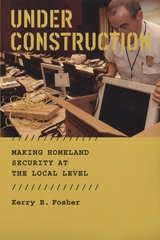 Under Construction: Making Homeland Security at the Local Level
Kerry B. Fosher
University of Chicago Press, 2008 In the aftermath of the 9/11 terrorist attacks, security became the paramount concern of virtually everyone involved in governing the United States. While the public’s most enduring memories of that time involved the actions of the Bush administration or Congress, the day-to-day reality of homeland security was worked out at the local level. Kerry B. Fosher, having begun an anthropological study of counterterrorism in Boston a few months prior to the attacks, thus found herself in a unique position to observe the formation of an immensely important area of government practice. Under Construction goes behind the headlines and beyond official policy to describe the human activities, emotions, relationships, and decisions that shaped the way most Americans experienced homeland security. Fosher’s two years of fieldwork focused on how responders and planners actually worked, illuminating the unofficial strategies that allowed them to resolve conflicts and get things done in the absence of a functioning bureaucracy. Given her unprecedented access, Fosher’s account is an exceptional opportunity to see how seemingly monolithic institutions are constructed, maintained, and potentially transformed by a community of people.
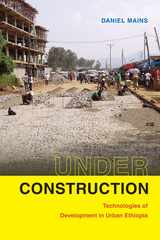 Under Construction: Technologies of Development in Urban Ethiopia
Daniel Mains
Duke University Press, 2019 Over the past decade, Ethiopia has had one of the world's fastest growing economies, largely due to its investments in infrastructure, and it is through building dams, roads, and other infrastructure that the Ethiopian state seeks to become a middle-income country by 2025. Yet most urban Ethiopians struggle to meet their daily needs and actively oppose a ruling party that they associate with corruption and mismanagement. In Under Construction Daniel Mains explores the intersection of development and governance by examining the conflicts surrounding the construction of specific infrastructural technologies: asphalt and cobblestone roads, motorcycle taxis, and hydroelectric dams. These projects serve as sites for nation building and the means for the state to assert its legitimacy. The construction process—as well as Ethiopians' experience of living with the disruption of construction zones—reveals the tension and conflict between the promise of progress and the possibility of failure. Mains demonstrates how infrastructures as both ethnographic sites and as a means of theorizing such concepts as progress, development, and the state offer a valuable contrast to accounts of African abjection and decline.
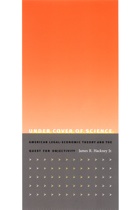 Under Cover of Science: American Legal-Economic Theory and the Quest for Objectivity
James R. Hackney Jr.
Duke University Press, 2007 For more than two decades, the law and economics movement has been one of the most influential and controversial schools of thought in American jurisprudence. In this authoritative intellectual history, James R. Hackney Jr. situates the modern law and economics movement within the trajectory of American jurisprudence from the early days of the Republic to the present. Hackney is particularly interested in the claims of objectivity or empiricism asserted by proponents of law and economics. He argues that the incorporation of economic analysis into legal decision making is not an inherently objective enterprise. Rather, law and economics often cloaks ideological determinations—particularly regarding the distribution of wealth—under the cover of science. Hackney demonstrates how legal-economic thought has been affected by the prevailing philosophical ideas about objectivity, which have in turn evolved in response to groundbreaking scientific discoveries. Thus Hackney’s narrative is a history not only of law and economics but also of select strands of philosophy and science. He traces forward from the seventeenth-century the interaction of legal thinking and economic analysis with ideas about the attainability of certitude. The principal legal-economic theories Hackney examines are those that emerged from classical legal thought, legal realism, law and neoclassical economics, and critical legal studies. He links these theories respectively to formalism, pragmatism, the analytic turn, and neopragmatism/postmodernism, and he explains how each of these schools of philosophical thought was influenced by specific scientific discoveries: Newtonian physics, Darwin’s theory of evolution, Einstein’s theories of relativity, and quantum mechanics. Under Cover of Science challenges claims that the contemporary law and economics movement is an objective endeavor by historicizing ideas about certitude and empiricism and their relation to legal-economic thought.
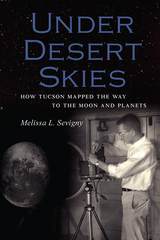 Under Desert Skies: How Tucson Mapped the Way to the Moon and Planets
Melissa L. Sevigny
University of Arizona Press, 2016 President Kennedy’s announcement that an American would walk on the Moon before the end of the 1960s took the scientific world by surprise. The study of the Moon and planets had long fallen out of favor with astronomers: they were the stuff of science fiction, not science.
An upstart planetary laboratory in Tucson would play a vital role in the nation’s grand new venture, and in doing so, it would help create the field of planetary science. Founded by Gerard P. Kuiper in 1960, the Lunar and Planetary Laboratory (LPL) at the University of Arizona broke free from traditional astronomical techniques to embrace a wide range of disciplines necessary to the study of planets, including geology, atmospheric sciences, and the elegant emerging technology of spacecraft. Brash, optimistic young students crafted a unique sense of camaraderie in the fledgling institution. Driven by curiosity and imagination, LPL scientists lived through—and, indeed, made happen—the shattering transition in which Earth’s nearest neighbors became more than simple points of light in the sky.
Under Desert Skies tells the story of how a small corner of Arizona became Earth’s ambassador to space. From early efforts to reach the Moon to the first glimpses of Mars’s bleak horizons and Titan’s swirling atmosphere to the latest ambitious plans to touch an asteroid, LPL’s history encompasses humanity’s unfolding knowledge about our place in the universe.
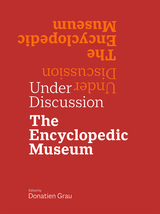 Under Discussion: The Encyclopedic Museum
Donatien Grau
J. Paul Getty Trust, The, 2021 In almost thirty interviews, Donatien Grau probes some of the world’s most prominent thinkers and preeminent arts leaders on the past, present, and future of the encyclopedic museum.
Over the last two decades, the encyclopedic museum has been criticized and praised, constantly discussed, and often in the news. Encyclopedic museums are a phenomenon of Europe and the United States, and their locations and mostly Eurocentric collections have in more recent years drawn attention to what many see as bias. Debates on provenance in general, cultural origins, and restitutions of African heritage have exerted pressure on encyclopedic museums, and indeed on all manner of museums. Is there still a place for an institution dedicated to gathering, preserving, and showcasing all the world’s cultures?
Donatien Grau’s conversations with international arts officials, museum leaders, artists, architects, and journalists go beyond the history of the encyclopedic format and the last decades’ issues that have burdened existing institutions. Are encyclopedic museums still relevant? What can they contribute when the Internet now seems to offer the greater encyclopedia? How important is it for us to have in-person access to objects from all over the world that can directly articulate something to us about humanity? The fresh ideas and nuances of new voices on the core principles important to museums in Dakar, Abu Dhabi, and Mumbai complement some of the world’s arts leaders from European and American institutions—resulting in some revealing and unexpected answers. Every interviewee offers differing views, making for exciting, stimulating reading.
Includes interviews with George Abungu, National Museums of Kenya; Kwame Anthony Appiah, New York University; Homi K. Bhabha, Harvard University; Hamady Bocoum, Musée des Civilisationes Noires, Dakar; Irina Bokova, UNESCO; Partha Chatterjee, Columbia University; Thomas Campbell, Fine Arts Museum of San Francisco; James Cuno, J. Paul Getty Trust; Philippe de Montebello, New York University; Bachir Souleymane Diagne, Columbia University; Kaywin Feldman, National Gallery of Art; Marc Fumaroli, Collège de France; Massimiliano Gioni, New Museum; Michael Govan, Los Angeles County Museum of Art; Camille Henrot, artist; Max Hollein, Metropolitan Museum of Art; Henri Loyrette, Musée du Louvre; Jean Nouvel, architect; Zaki Nusseibeh, United Arab Emirates; Mikhail Piotrovsky, State Hermitage Museum; Grayson Perry, artist; Krzysztof Pomian, École des Hautes Études en Sciences Sociales; Mari Carmen Ramírez, Museum of Fine Arts, Houston; Fiammetta Rocco, The Economist; Sabyasachi Mukherjee, CSMVS Mumbai; Bénédicte Savoy; Collège de France; Kavita Singh, Jawaharlal Nehru University, New Delhi; Amit Sood, Google Arts & Culture.
Under Eastern Eyes: A Comparative History of East European Travel Writing on Europe
Alex Drace-Francis
Central European University Press, 2008 Twelve studies explicitly developed to elaborate on travel writing published in book form by east Europeans travelling in Europe from ca. 1550 to 2000. How did east Europeans have positioned themselves with relation to the notion of Europe, and how has the genre of travel writing served as a means of exploring and disseminating these ideas?
Under Fire: The Nra and the Battle for Gun Control
Osha Gray Davidson
University of Iowa Press, 1998 Originally published in 1993, Under Fire was widely hailed as the first objective examination of the NRA and its efforts to defeat gun control legislation. Now in this expanded edition, Osha Gray Davidson shows how the NRA's extremism has cost the organization both political power and popular support. He offers a well-reasoned and workable approach to gun control, one that will find many supporters even among the NRA membership.
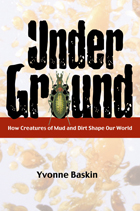 Under Ground: How Creatures of Mud and Dirt Shape Our World
Yvonne Baskin
Island Press, 2005 Let's get dirty. In childhood, the back yard, the flowerbed, the beach, the mucky place where land slips into puddles, lakes, and streams are infinitely fascinating. It is a mistake to leave that "childish" fascination with mud and dirt behind. The soils of the Earth, whether underneath our feet or pressurized beneath tons of ocean water, hold life in abundance. A handful of garden dirt may harbor more species than the entire aboveground Amazon.
The robotic rovers Spirit and Opportunity made headlines as they scraped their way across the Martian landscape, searching for signs of life. But while our eyes have been turned toward the skies, teeming beneath us and largely unexplored lies what Science magazine recently called the true "final frontier." A growing array of scientists is exploring life in soils and sediments, uncovering a living world literally alien to our own senses--and yet one whose integrity turns out to be crucial to life above ground.
Yvonne Baskin takes the reader from the polar desert of Antarctica to the coastal rain forests of Canada, from the rangelands of Yellowstone National Park to the vanishing wetlands of the Mississippi River basin, from Dutch pastures to English sounds, and beyond. She introduces exotic creatures--from bacteria and fungi to microscopic nematode worms, springtails, and mud shrimp--and shows us what scientists are learning about their contribution to sustaining a green and healthy world above ground. She also explores the alarming ways in which air pollution, trawl fishing, timber cutting, introductions of invasive species, wetland destruction, and the like threaten this underground diversity and how their loss, in turn, affects our own well being.
Two-thirds of the world's biological diversity exists in soils and underwater sediments, and yet most of us remain unaware of these tiny multitudes that run the planet beneath the scenes. In Under Ground, Baskin reveals the startling ways in which that life, whether in our own back yards, in fields and forests, or in the furthest reaches of the Earth, is more numerous, significant, and fascinating than we once imagined.
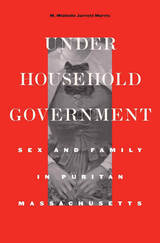 Under Household Government: Sex and Family in Puritan Massachusetts
M. Michelle Jarrett Morris
Harvard University Press, 2012 Seventeenth-century New Englanders were not as busy policing their neighbors’ behavior as Nathaniel Hawthorne or many historians of early America would have us believe. Keeping their own households in line occupied too much of their time. Under Household Government reveals the extent to which family members took on the role of watchdog in matters of sexual indiscretion.
In a society where one’s sister’s husband’s brother’s wife was referred to as “sister,” kinship networks could be immense. When out-of-wedlock pregnancies, paternity suits, and infidelity resulted in legal cases, courtrooms became battlegrounds for warring clans. Families flooded the courts with testimony, sometimes resorting to slander and jury-tampering to defend their kin. Even slaves merited defense as household members—and as valuable property. Servants, on the other hand, could expect to be cast out and left to fend for themselves.
As she elaborates the ways family policing undermined the administration of justice, M. Michelle Jarrett Morris shows how ordinary colonists understood sexual, marital, and familial relationships. Long-buried tales are resurrected here, such as that of Thomas Wilkinson’s (unsuccessful) attempt to exchange cheese for sex with Mary Toothaker, and the discovery of a headless baby along the shore of Boston’s Mill Pond. The Puritans that we meet in Morris’s account are not the cardboard caricatures of myth, but are rendered with both skill and sensitivity. Their stories of love, sex, and betrayal allow us to understand anew the depth and complexity of family life in early New England.
Under New Management: Universities, Administrative Labor, and the Professional Turn
Authored by Randy Martin
Temple University Press, 2012 Faculty members who care about the institutions of higher education where they work are often at odds with university management. In his forceful book, Under New Management, Randy Martin takes a novel, evenhanded approach to this gulf between professors, who feel a loss of autonomy, and administrators. Martin imagines a political future for academic labor based on a critical understanding of the administrative work that faculty already undertake. He considers the differences between self-rule and specialized expertise and provides a case study of a New York City public school to show how kids and families respond to the demands of managerial productivity that is part of preparing students for college. Under New Management also considers changes faced by students, faculty, and administrators in light of this reworked social compact of professionals.
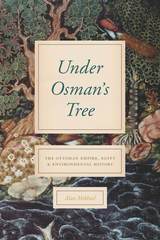 Under Osman's Tree: The Ottoman Empire, Egypt, and Environmental History
Alan Mikhail
University of Chicago Press, 2017 Osman, the founder of the Ottoman Empire, had a dream in which a tree sprouted from his navel. As the tree grew, its shade covered the earth; as Osman’s empire grew, it, too, covered the earth. This is the most widely accepted foundation myth of the longest-lasting empire in the history of Islam, and offers a telling clue to its unique legacy. Underlying every aspect of the Ottoman Empire’s epic history—from its founding around 1300 to its end in the twentieth century—is its successful management of natural resources. Under Osman’s Tree analyzes this rich environmental history to understand the most remarkable qualities of the Ottoman Empire—its longevity, politics, economy, and society.
The early modern Middle East was the world’s most crucial zone of connection and interaction. Accordingly, the Ottoman Empire’s many varied environments affected and were affected by global trade, climate, and disease. From down in the mud of Egypt’s canals to up in the treetops of Anatolia, Alan Mikhail tackles major aspects of the Middle East’s environmental history: natural resource management, climate, human and animal labor, energy, water control, disease, and politics. He also points to some of the ways in which the region’s dominant religious tradition, Islam, has understood and related to the natural world. Marrying environmental and Ottoman history, Under Osman’s Tree offers a bold new interpretation of the past five hundred years of Middle Eastern history.
Under Pressure: A Song by David Bowie and Queen
Max Brzezinski
Duke University Press, 2025 In 1981, David Bowie and Queen both happened to be in Switzerland: They met and made “Under Pressure.” Recorded on a lark, the song broke the path for subsequent pop anthems. In Under Pressure, Max Brzezinski tells the classic track’s story, charting the relationship between pop music, collective politics, and dominant institutions of state, corporations, and civil society. Brzezinski shows that, like all great pop anthems, “Under Pressure” harnesses collective sentiments in order to model new ways of thinking and acting. As we continue to live under the sign of the global oppressive power the song names, analyzes, and attempts to move beyond, we remain, in Bowie and Freddie Mercury’s phrase, under pressure.
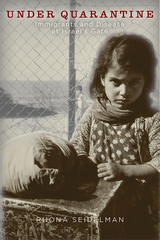 Under Quarantine: Immigrants and Disease at Israel’s Gate
Rhona Seidelman
Rutgers University Press, 2020 Under Quarantine is the riveting story of Shaar Ha’aliya, a central immigrant processing camp opened shortly after Israel became an independent state. This historic gateway for Jewish migration was surrounded by a controversial barbed wire fence. The camp administrators defended this imposing barrier as a necessary quarantine measure - even as detained immigrants regularly defied it by crawling out of the camp and returning at will. Focusing on the conflicts and complications surrounding the medical quarantine, this book brings the history of this place and the remarkable experiences of the immigrants who went through it to life. Evocative and bold, Under Quarantine shows that we cannot fully understand Israel until we understand Shaar Ha’aliya. The gate of arrival for nearly half a million immigrants - a space of homecoming, conflict, exclusion and welcoming - here was the country’s crucible.
 Under Review: Further Writings on Writers, 1946-1990
Anthony Powell
University of Chicago Press, 1994 "A splendid book. I cannot think of one so calculated to delight, intrigue, beguile, and inform. To pick up and browse through it . . . is like meeting some venerable old man of letters comfortably ensconced in his library, only to ready to reveal some pear of humor or wisdom about each of the writers he has chosen to deal with."—Kate Wharton, Evening Standard
"Powell is one of the great novelists of our time, much more interested in other people than in his own views and ideas. The result is that his extraordinary richness of act and detail also embodies a far more arresting and penetrating quantity of critical judgements on books, authors, fashions, developments, than are to be found in the theoretical pronouncement of modern academic criticism."—John Bayley, The Sunday Times
"These delightful reviews could be said to amount to a latter-day Brief Lives."—David Plante, Times Literary Supplement
 Under Sleep
Daniel Hall
University of Chicago Press, 2007 Then You looked up vaguely or you didn’t—even the memory is dying. Then you whole body breathed out, and the argument ended. Heaven surfaced about you like a glass tabletop, hard and cold. Whatever you do don’t turn me into poetry. Sorry: I am done crying about it but I am not done crying. An extended meditation on how death affects those left behind, Under Sleep is a skillfully understated, beautifully rendered elegy for the poet’s partner. Formally inventive and technically sophisticated, Daniel Hall attends to the power of death to haunt every perception. The poet’s voice registers as though he were walking on the bottom of the ocean, in a state of mind somewhere “under sleep,” in a kind of waking dream. In Hall’s hands, isolated moments of perception bloom into truly touching love elegies.
The poems in Under Sleep were written over a period of ten years and, as a result, are densely interconnected, with lines and entire stanzas transplanted between different poems. Using styles ranging from free verse to sonnets, Sapphics, and rhymed haikus, Hall populates the book with literary and historical figures—Baudelaire, Pound, and Casanova—in poems set in China, the Middle East, Death Valley, and Italy. Throughout, the poetry is propelled by tension as the speaker struggles with his own better judgment—and against his lover’s wishes—to turn the loss of the beloved into art. Praise for Daniel Hall “Daniel Hall’s work reminds us that a poet’s sharp-sightedness, the whole business of ‘getting things right,’ is a matter of far more than accuracy. It’s a matter of—inescapably—thanksgiving.”—Brad Leithauser, New York Review of Books
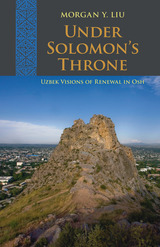 Under Solomon's Throne: Uzbek Visions of Renewal in Osh
Morgan Y. Liu
University of Pittsburgh Press, 2012
Winner of the 2014 Central Eurasian Studies Society Book Award in the Social Sciences.
Under Solomon’s Throne provides a rare ground-level analysis of post-Soviet Central Asia’s social and political paradoxes by focusing on an urban ethnic community: the Uzbeks in Osh, Kyrgyzstan, who have maintained visions of societal renewal throughout economic upheaval, political discrimination, and massive violence.
Morgan Liu illuminates many of the challenges facing Central Asia today by unpacking the predicament of Osh, a city whose experience captures key political and cultural issues of the region as a whole. Situated on the border of Uzbekistan and Kyrgyzstan—newly independent republics that have followed increasingly divergent paths to reform their states and economies—the city is subject to a Kyrgyz government, but the majority of its population are ethnic Uzbeks. Conflict between the two groups led to riots in 1990, and again in 2010, when thousands, mostly ethnic Uzbeks, were killed and nearly half a million more fled across the border into Uzbekistan. While these tragic outbreaks of violence highlight communal tensions amid long-term uncertainty, a close examination of community life in the two decades between reveals the way Osh Uzbeks have created a sense of stability and belonging for themselves while occupying a postcolonial no-man’s-land, tied to two nation-states but not fully accepted by either one.
The first ethnographic monograph based on extensive local-language fieldwork in a Central Asian city, this study examines the culturally specific ways that Osh Uzbeks are making sense of their post-Soviet dilemmas. These practices reveal deep connections with Soviet and Islamic sensibilities and with everyday acts of dwelling in urban neighborhoods. Osh Uzbeks engage the spaces of their city to shape their orientations relative to the wider world, postsocialist transformations, Islamic piety, moral personhood, and effective leadership. Living in the shadow of Solomon’s Throne, the city’s central mountain, they envision and attempt to build a just social order.
 Under: Stories
Glen Pourciau
Four Way Books, 2025 As wryly profound as ever, Glen Pourciau solidifies his reputation as a master of American short fiction with Under, a collection of brief yet meticulously elaborated stories that deconstruct daily living as his characters see it by diving beneath their skin and surveying the electric heat bristling below. He scours their interiors for the granular details of consciousness that accrue to a person's singular point of view, shape patterns of behavior, and culminate in consequential decisions (or equally meaningful inaction). Pourciau's writing thrums with claustrophobic intelligence, untangling the knots of eccentric personalities by observing the trajectory of his subjects' thoughts and tracing them back to the source. Rarely is the root an inciting incident or narrative catalyst, but rather the self-propagating algorithm of paranoia that proves to us we have something to fear precisely because we are afraid. Pourciau's titular story begins with the narrator confessing, "A voice from within is telling me this story. It rises like protruding lumps from nowhere." More often than not, plots that start inside one's head refuse to stay there; soon, psychological disruption asserts itself in the material world, determining a character's lived experience as tangibly as an external force or outside actor. "I've been watching a patch of ground in my backyard that has been upset by something moving up from below," the narrator continues. It's no comfort, actually, that what is emerging never actually emerges; a lack of conclusive evidence means never fully disproving the possibility of the thing, either. "Nothing is buried or rising from below in my backyard. My conscience is clear, guided only by its own instinct," the narrator assures himself to no avail. "This story should be rooted out, destroyed, but talking to it doesn't make it go away. Even when silent, something insidious gnaws within it." Pourciau's ability to illuminate that something insidious is what makes his writing something marvelous. No less instructive or revelatory for their internal accelerants, these stories spotlight the small conflagrations that punctuate even our most ordinary days. In delineating the invisible machinations of each person's mind, they reveal the flammable borders of personal boundaries and the conflicts with colleagues, neighbors, and long-time friends that cast off sparks and set our small lives ablaze.
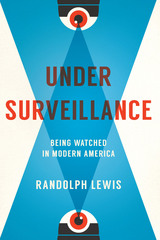 Under Surveillance: Being Watched in Modern America
By Randolph Lewis
University of Texas Press, 2017 Never before has so much been known about so many. CCTV cameras, TSA scanners, NSA databases, big data marketers, predator drones, “stop and frisk” tactics, Facebook algorithms, hidden spyware, and even old-fashioned nosy neighbors—surveillance has become so ubiquitous that we take its presence for granted. While many types of surveillance are pitched as ways to make us safer, almost no one has examined the unintended consequences of living under constant scrutiny and how it changes the way we think and feel about the world. In Under Surveillance, Randolph Lewis offers a highly original look at the emotional, ethical, and aesthetic challenges of living with surveillance in America since 9/11. Taking a broad and humanistic approach, Lewis explores the growth of surveillance in surprising places, such as childhood and nature. He traces the rise of businesses designed to provide surveillance and security, including those that cater to the Bible Belt’s houses of worship. And he peers into the dark side of playful surveillance, such as eBay’s online guide to “Fun with Surveillance Gadgets.” A worried but ultimately genial guide to this landscape, Lewis helps us see the hidden costs of living in a “control society” in which surveillance is deemed essential to governance and business alike. Written accessibly for a general audience, Under Surveillance prompts us to think deeply about what Lewis calls “the soft tissue damage” inflicted by the culture of surveillance.
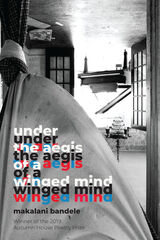 under the aegis of a winged mind
makalani bandele
Autumn House Press, 2020 The poems in under the aegis of a winged mind are inspired by the life and times of the jazz composer and pianist Earl “Bud” Powell. Powell was a leading figure in the development of jazz, but throughout his life, he also faced struggles with police brutality, harassment, drug and alcohol abuse, and mental illness. In this collection, makalani bandele explores Powell’s life through a blend of both formal and free verse persona poems. These poems are multivocal, with the speaker often embodying Powell himself and sometimes a close friend or family member, the spectator of a performance, or a fellow musician.
While the book follows the narrative of Powell’s life, the poems are experimental in form and presentation. Playing with, reinventing, and restructuring poetic form, bandele draws on blues and jazz music theory to serve as a basis for much of the work’s construction. He uses language to recreate the experience of music itself, and his poetry includes a multitude of references and allusion to music lyrics and other poems. As the book recounts Powell’s life, it also explores how Black genius has encountered, struggled against, and developed mechanisms to cope with White supremacy in the United States. under the aegis of a winged mind won the 2019 Autumn House Press Poetry Prize.
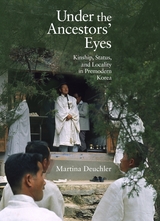 Under the Ancestors' Eyes: Kinship, Status, and Locality in Premodern Korea
Martina Deuchler
Harvard University Press, 2015 Under the Ancestors’ Eyes presents a new approach to Korean social history by focusing on the origin and development of the indigenous descent group. Martina Deuchler maintains that the surprising continuity of the descent-group model gave the ruling elite cohesion and stability and enabled it to retain power from the early Silla (fifth century) to the late nineteenth century. This argument, underpinned by a fresh interpretation of the late-fourteenth-century Koryŏ-Chosŏn transition, illuminates the role of Neo-Confucianism as an ideological and political device through which the elite regained and maintained dominance during the Chosŏn period. Neo-Confucianism as espoused in Korea did not level the social hierarchy but instead tended to sustain the status system. In the late Chosŏn, it also provided ritual models for the lineage-building with which local elites sustained their preeminence vis-à-vis an intrusive state. Though Neo-Confucianism has often been blamed for the rigidity of late Chosŏn society, it was actually the enduring native kinship ideology that preserved the strict social-status system. By utilizing historical and social anthropological methodology and analyzing a wealth of diverse materials, Deuchler highlights Korea’s distinctive elevation of the social over the political.
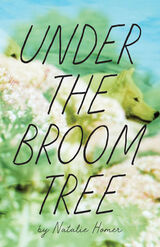 Under the Broom Tree
Natalie Homer
Autumn House Press, 2021 Poems that explore the wilderness in order to find rest and divine providence.
In the story of the prophet Elijah, he must flee his home, and, after an arduous journey, he arrives under a broom tree, where he prays for his own death. But in his sleep, he is touched by an angel who provides food and water. In this moment, the broom tree becomes a symbol for shelter in a barren landscape, a portent of hope and renewal.
Drawing inspiration from this tale, Natalie Homer’s debut poetry collection is a trek through the wildernesses of the heart and of the natural world. Exploring the idea of divine providence, Homer finds seams of light opening between forlorn moments and locates, “Something to run a finger through, / something to shine in the ocher light.” Within these narrow spaces, Homer explores themes of longing, home, family, and self-worth amidst the wondrous backdrop of the American West and the Rust Belt, while integrating a rich mythology of narrative, image, and association. The broom tree, offering the capacity for shade and respite, becomes a source of connection and an inspiration for the collection. It is an invitation to sink deep into the earth and self and feel the roots entwine.
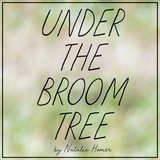 Under the Broom Tree
Natalie Homer
Autumn House Press, 2021 Poems that explore the wilderness in order to find rest and divine providence.
In the story of the prophet Elijah, he must flee his home, and, after an arduous journey, he arrives under a broom tree, where he prays for his own death. But in his sleep, he is touched by an angel who provides food and water. In this moment, the broom tree becomes a symbol for shelter in a barren landscape, a portent of hope and renewal.
Drawing inspiration from this tale, Natalie Homer’s debut poetry collection is a trek through the wildernesses of the heart and of the natural world. Exploring the idea of divine providence, Homer finds seams of light opening between forlorn moments and locates, “Something to run a finger through, / something to shine in the ocher light.” Within these narrow spaces, Homer explores themes of longing, home, family, and self-worth amidst the wondrous backdrop of the American West and the Rust Belt, while integrating a rich mythology of narrative, image, and association. The broom tree, offering the capacity for shade and respite, becomes a source of connection and an inspiration for the collection. It is an invitation to sink deep into the earth and self and feel the roots entwine.
 Under the Campus, the Land: Anishinaabe Futuring, Colonial Non-Memory, and the Origin of the University of Michigan
Andrew Herscher
University of Michigan Press, 2025 In the 1817 Treaty of Fort Meigs, Anishinaabe leaders granted land to a college where their children could be educated. At the time, the colonial settlement of Anishinaabe homelands hardly extended beyond Detroit in what settlers called the “Michigan Territory.” Four days after the Treaty of Fort Meigs was signed, the First College of Michigania was founded to claim the land that the Anishinaabeg had just granted. Four years later, the newly-chartered University of Michigan would claim this land. By the time that the university’s successor moved to Ann Arbor twenty years later, Anishinaabe people had been forced to cede almost all their land in what had become the state of Michigan, now inhabited by almost 200,000 settlers.
Under the Campus, the Land narrates the University of Michigan’s place in both Anishinaabe and settler history, tracing the university’s participation in the colonization of Anishinaabe homelands, Anishinaabe efforts to claim their right to an education, and the university’s history of disavowing, marginalizing, and minimizing its responsibilities and obligations to Anishinaabe people. Continuing the public conversations of the same name on U-M’s campus in 2023, Under the Campus, the Land provides a new perspective on the relationship between universities and settler colonialism in the US. Members of the U-M community, scholars of Midwest history, and those interested in Indigenous studies will find this book compelling.
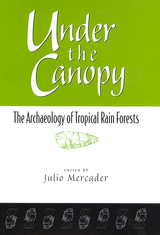 Under the Canopy: The Archaelogy of Tropical Rain Forests
Mercader, Julio
Rutgers University Press, 2002 Did our ancestors live in tropical forests? Although we see the rainforest as a bountiful environment teeming with life forms, most anthropologists and archaeologists have long viewed these areas as too harsh for human occupation during the pre-agricultural stages of hominid development. Under the Canopy turns conventional wisdom on its head by providing a well-documented, geographically diverse overview of Stone Age sites in the wet tropics. New research indicates that, as humanity and its precursors increased their geographical and ecological ranges, rainforests were settled at a much earlier period than had previously been thought. Featuring the work of leading scholars from Australia, Brazil, Canada, Colombia, France, Malaysia, Panama, Spain, and the United States, Under the Canopy creates a new niche in paleolithic studies: the archaeology of tropical rainforests. This book provides the first synthesis of archaeological research in early foraging sites across the rainforest zone, and indicates that tropical forests could harbor important clues to human evolution, origins of modern behavior, cultural diversity, and human impact on tropical ecosystems.
 Under the Counter: Britain's Trade in Hardcore Pornographic 8mm Films
Oliver Carter
Intellect Books, 2022 The first book of its kind to investigate Britain’s trade in illicit pornographic 8mm film.
Prior to 2000, it was a criminal offense to sell hardcore pornography in Britain. Despite this, there was a thriving alternative economy producing and distributing such material “under the counter” of Soho’s bookshops and via mail-order. British entrepreneurs circumvented obscenity laws to satisfy the demand for uncensored adult films and profit from their enterprise, with corrupt members of the Metropolitan Police’s Obscene Publications Squad permitting them to trade.
By the late 1960s, Britain had developed an international reputation for producing “rollers,” short hardcore films distributed on 8mm, which were smuggled out of Britain for sale in Western Europe. Following an exposé by Britain’s tabloid press, a crackdown on police corruption, and several high-profile obscenity trials, the trade was all but decimated, with pornography smuggled in from Europe dominating the market.
Drawing on extensive archival research, including the use of legal records, police files, media reportage, and interviews with those who were involved in the business, Under the Counter tells the story of Britain’s trade in 8mm hardcore pornographic films and its regulation.
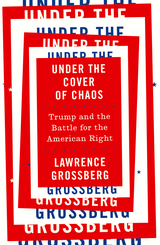 Under the Cover of Chaos: Trump and the Battle for the American Right
Lawrence Grossberg
Pluto Press, 2018 Are Donald Trump's irrationality, cruelty, and bombast symptoms of his personality? Is the chaos surrounding him a sign of his incompetence? Are his populism, illiberalism and nationalism just cynical appeals to existing feelings of abandonment, resentment and rage?
Lawrence Grossberg shows that the truth is bigger and more frightening. Locating Trumpism in the long struggle among traditional conservatism, the new right and the reactionary right, he suggests that the chaos is far more significant and strategic ... and dangerous. Taking the arguments of the reactionary right seriously, he projects a possible, nightmarish future: a cultural nationalism governed by a popular corporatocracy.
He lays bare how contemporary political struggles are being shaped by a changing national landscape of moods and feelings, marked by a growing absolutism of judgement and belief, and new forms of anxiety, alienation and narcissism.s—and lays out a possible nightmare future: a vision of a political system controlled by corporate interests, built on a deliberate dismantling of modern politics.
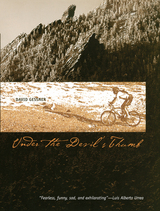 Under the Devil's Thumb
David Gessner
University of Arizona Press, 1999 David Gessner first moved to Colorado in the wake of a bout with cancer. In Under the Devil's Thumb, this young New Englander takes readers on a joyous quest to discover the mysteries of the western landscape and the landscape of the soul as well.
In the West Gessner began to rewrite his life. Under the Devil's Thumb is a story of rugged determination and sweat, as well as humor, adventure and hope. In and around his new hometown of Boulder, Colorado, Gessner hiked hard and ran alongside flooded creeks. He found that the West was a place of stories—stories that grow out of the ground, flow out of the dirt, work their way through one's limbs, and drive people to push their physical limits. Hiking up scree slopes toward the Devil's Thumb, a massive outcrop of orange rock that attracts climbers, hikers, and contemplaters, Gessner reflects on the illness he has so recently survived. He pushes his physical limits, hoping to outrun death, to outrun dread. He finds momentary transcendence in the joys and self-inflicted pain of mountain biking. "Nothing but the hardest ride has the power to flush out worry, mind clutter, and dread." In tranquil moments he seeks a chance to recover an animal self that is strong and powerful enough to conquer mountains, but also still and quiet enough to see things human beings ignore.
In the mountain West, Gessner finds what Wallace Stegner called "the geography of hope." He finds within himself an interior landscape that is healthy and strong. Combining memoir, nature writing, and travel writing, Under the Devil's Thumb is one man's journey deep into a place of healing.
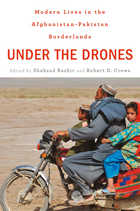 Under the Drones: Modern Lives in the Afghanistan-Pakistan Borderlands
Shahzad Bashir
Harvard University Press, 2012 In the West, media coverage of Afghanistan and Pakistan is framed by military and political concerns, resulting in a simplistic picture of ageless barbarity, terrorist safe havens, and peoples in need of either punishment or salvation. Under the Drones looks beyond this limiting view to investigate real people on the ground, and to analyze the political, social, and economic forces that shape their lives. Understanding the complexity of life along the 1,600-mile border between Afghanistan and Pakistan can help America and its European allies realign their priorities in the region to address genuine problems, rather than fabricated ones.
This volume explodes Western misunderstandings by revealing a land that abounds with human agency, perpetual innovation, and vibrant complexity. Through the work of historians and social scientists, the thirteen essays here explore the real and imagined presence of the Taliban; the animated sociopolitical identities expressed through traditions like Pakistani truck decoration; Sufism’s ambivalent position as an alternative to militancy; the long and contradictory history of Afghan media; and the simultaneous brutality and potential that heroin brings to women in the area.
Moving past shifting conceptions of security, the authors expose the West’s prevailing perspective on the region as strategic, targeted, and alarmingly dehumanizing. Under the Drones is an essential antidote to contemporary media coverage and military concerns.
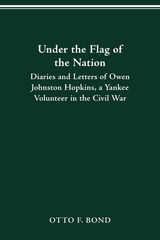 UNDER THE FLAG OF THE NATION: DIARIES AND LETTERS OF OWEN JOHNSTON HOPKINS, A YANKEE VOLUNTEER IN THE CIVIL WAR
Owen Johnston Hopkins
Ohio State University Press, 1998 From these diaries and letters of a soldier in the Union Army emerges a revealing portrait of their author, a man caught up in a life-and-death struggle of national import. Compiled from the diaries kept by Owen Johnston Hopkins while he was on duty with the 42nd and 182nd regiments, Ohio Volunteer Infantry, and from letters to his family and friends, this book gives a clear picture of the motives, attitudes, and sentiments of a Yankee soldier during the Civil War.
Owen Hopkins was a young man brought to maturity by the agony of war, but in spite of the horror of battle and the tedium of life in camp, he maintained a lively sense of humor and a constant devotion to the ideals for which he fought. The Civil War in these pages is a savage, vindictive conflict fought with canister, "minnie balls," grapeshot, the Enfield rifle, and the bayonet. Only seventeen when he enlisted in 1861, Hopkins was a foot soldier and a witness to the action that took place on the field of battle.
A vital part of Hopkins's life in the army was his correspondence with Julia Allison, who lived in his hometown of Bellefontaine. They began writing each other in 1863, and their friendship deepened into love. Each was a fervent patriot, and their shared devotion to their country was a significant fact of their relationship. They were married in 1865.
An epilogue tells what happened to Hopkins after June of 1865: his career, his family, and his death in 1902. Originally published in1961, this work is now available for the first time in paperback.
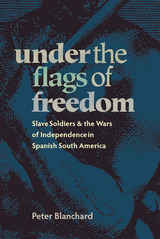 Under the Flags of Freedom: Slave Soldiers and the Wars of Independence in Spanish South America
Peter Blanchard
University of Pittsburgh Press, 2008 During the wars for independence in Spanish South America (1808-1826), thousands of slaves enlisted under the promise of personal freedom and, in some cases, freedom for other family members. Blacks were recruited by opposing sides in these conflicts and their loyalties rested with whomever they believed would emerge victorious. The prospect of freedom was worth risking one's life for, and wars against Spain presented unprecedented opportunities to attain it.
Much hedging over the slavery issue continued, however, even after the patriots came to power. The prospect of abolition threatened existing political, economic, and social structures, and the new leaders would not encroach upon what were still considered the property rights of powerful slave owners. The patriots attacked the institution of slavery in their rhetoric, yet maintained the status quo in the new nations. It was not until a generation later that slavery would be declared illegal in all of Spain's former mainland colonies.
Through extensive archival research, Blanchard assembles an accessible, comprehensive, and broadly based study to investigate this issue from the perspectives of Royalists, patriots, and slaves. He examines the wartime political, ideological, and social dynamics that led to slave recruitment, and the subsequent repercussions in the immediate postindependence era. Under the Flags of Freedom sheds new light on the vital contribution of slaves to the wars for Latin American independence, which, up until now, has been largely ignored in the histories and collective memories of these nations.
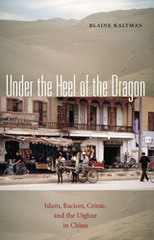 Under the Heel of the Dragon: Islam, Racism, Crime, and the Uighur in China
Blaine Kaltman
Ohio University Press, 2007 The Turkic Muslims known as the Uighur have long faced social and economic disadvantages in China because of their minority status. Under the Heel of the Dragon: Islam, Racism, Crime, and the Uighur in China offers a unique insight into current conflicts resulting from the rise of Islamic fundamentalism and the Chinese government’s oppression of religious minorities, issues that have heightened the degree of polarization between the Uighur and the dominant Chinese ethnic group, the Han. Author Blaine Kaltman’s study is based on in-depth interviews that he conducted in Chinese without the aid of an interpreter or the knowledge of the Chinese government. These riveting conversations expose the thoughts of a wide socioeconomic spectrum of Han and Uighur, revealing their mutual prejudices. The Uighur believe that the Han discriminate against them in almost every aspect of their lives, and this perception of racism motivates Uighur prejudice against the Han. Kaltman reports that criminal activity by Uighur is directed against their perceived oppressors, the Han Chinese. Uighur also resist Han authority by flouting the laws—such as tax and licensing regulations or prohibitions on the use or sale of hashish—that they consider to be imposed on them by an alien regime. Under the Heel of the Dragon offers a unique insight into a misunderstood world and a detailed explanation of the cultural perceptions that drive these misconceptions.
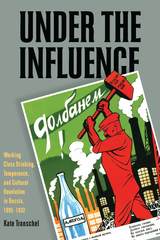 Under the Influence: Working-Class Drinking, Temperance, and Cultural Revolution in Russia, 1895-1932
Kate Transchel
University of Pittsburgh Press, 2006
Under the Influence presents the first investigation of the social, cultural, and political factors that affected drinking and temperance among Russian and Soviet industrial workers from 1895 to 1932. Kate Transchel examines the many meanings of working-class drinking and temperance in a variety of settings, from Moscow to remote provinces, and illuminates the cultural conflicts and class dynamics that were deeply rooted in drinking rituals and the failure of attempted reforms by the Tsarist and Soviet authorities.
As the title suggests, workers were often under the influence of alcohol, but they were also under political influences that defined what it meant to be a Soviet worker. Perhaps more importantly, they were under deeper, prerevolutionary cultural influences that continued to shape lower-class identities after 1917. The more the Soviet state tried to control working-class drinking, the more workers resisted. Radical legislation, massive propaganda, and even coercion were not sufficient to motivate workers to abandon traditional forms of fraternization.
Under the Influence highlights working-class culture and underscores the limitations the Bolsheviks faced in attempting to create a cultural revolution to complete their social and political revolution.
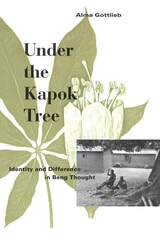 Under the Kapok Tree: Identity and Difference in Beng Thought
Alma Gottlieb
University of Chicago Press, 1996 In this companion volume to Parallel Worlds, Alma Gottlieb
explores ideology and social practices among the Beng people of Côte
d'Ivoire. Employing symbolic and postmodern perspectives, she highlights
the dynamically paired notions of identity and difference, symbolized by
the kapok tree planted at the center of every Beng village.
"This book merits a number of readings. . . . An experiment in
ethnography that future projects might well emulate." —Clarke K. Speed,
American Anthropologist
"[An] evocative, rich ethnography. . . . Gottlieb does anthropology a
real service." —Misty L. Bastian, American Ethnologist
"Richly detailed. . . . This book offers a nuanced descriptive analysis
which commands authority." —Elizabeth Tonkin, Man
"Exemplary. . . . Gottlieb's observations on identity and difference are
not confined to rituals or other special occasions; rather she shows
that these principles emerge with equal force during daily social life."
—Monni Adams, Journal of African Religion
"[An] excellent study." —John McCall, Journal of Folklore
Research
 Under the Knife: Cosmetic Surgery, Boundary Work, and the Pursuit of the Natural Fake
Samantha Kwan and Jennifer Graves
Temple University Press, 2020 Most women who elect to have cosmetic surgery want a “natural” outcome—a discrete alteration of the body that appears unaltered. Under the Knife examines this theme in light of a cultural paradox. Whereas women are encouraged to improve their appearance, there is also a stigma associated with those who do so via surgery.
Samantha Kwan and Jennifer Graves reveal how women negotiate their “unnatural”—but hopefully (in their view) natural-looking—surgically-altered bodies. Based on in-depth interviews with forty-six women who underwent cosmetic surgery to enhance their appearance, the authors investigate motivations for surgery as well as women’s thoughts about looking natural after the procedures. Under the Knife dissects the psychological and physical strategies these women use to manage the expectations, challenges, and disappointments of cosmetic surgery while also addressing issues of agency and empowerment. It shows how different cultural intersections can produce varied goals and values around body improvement.
Under the Knife highlights the role of deep-seated yet contradictory gendered meanings about women’s bodies, passing, and boundary work. The authors also consider traditional notions of femininity and normalcy that trouble women’s struggle to preserve an authentic moral self.
 Under the Mask: A Guide to Feeling Secure and Comfortable During Anesthesia and Surgery
Cottrell, James M.D.
Rutgers University Press, 2001 Every year, about forty million Americans require surgery. Few truly understand what happens to them during the procedure-especially what the anesthesiologist does to ensure their survival and well being. An anesthesiologist disarms your entire nervous system with the most effective drugs for your body chemistry; keeps you alive while you're subjected to manipulations that would otherwise kill you; and ensures your safe return to consciousness. Yet despite their crucial role, anesthesiologists are often the unseen doctors. Under the Mask, written by a compassionate practitioner, demystifies the surgical process with detailed information that will make you a better-informed consumer. Part One describes the development and current scope of anesthesiology, the medications and techniques used, and what the anesthesiologist does both in and outside the operating room. It explains your-the patient's- rights and advises you how to use the preoperative consultation with the anesthesiologist to your best advantage, specifying what information you need provide and what questions you should ask. Part Two details the most common surgical and diagnostic procedures requiring anesthesia or conscious sedation. Using clear language, it explains each procedure, the possible risks, and the choices to make if there is more than one option. It also covers the anesthesiologist's crucial role in controlling pain caused by chronic conditions. The last chapter describes the newest anesthetic and pain control techniques available. The author also helps you understand anesthesiology within the managed care system and explains what you can expect and what to do if you aren't getting what you need. This book enables you to make informed decisions regarding surgical anesthesia and subsequent pain control within the managed care system to protect your well-being and hasten your recovery.
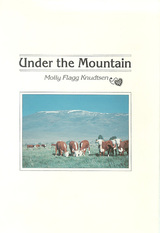 Under The Mountain
Molly Flagg Knudtsen
University of Nevada Press, 1982 This collection of vignettes about life in Central Nevada is much more than a historical document. According to author Molly Knudtsen, “These are the stories neighbors and families tell, where fact grows just a little larger than life. This is the stuff of legend.”The book focuses on a time when splendorous houses decorated the windswept valleys of Central Nevada; where fearless, stouthearted men and women braved the elements to survive and seek their fortune; and when people who loved the land clung to it and gave it a character all its own. These tales capture the spirit and folklore of early-day Central Nevada and illustrate the effect on its present-day inhabitants. Molly Knudtsen shares the experience of riding horseback through some of the great archaeological finds of the valley. She divulges the secret of converting flour, yeast, and potato water into a perfect loaf of bread. And through colorful anecdotes, she passes along the legendary accounts of Colonel Dave Buel.
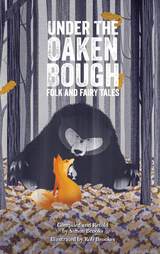 Under the Oaken Bough: Folk and Fairy Tales
Simon Brooks
Parkhurst Brothers, Inc., 2017 Uncommon folktales and a few old favorites revived and retold for young people and tradition keepers. Folk and fairy tales celebrate different cultures and ways to see the world. A collection of the author’s favorite folktales from his professional storytelling repertoire, retold in contemporary jargon for young reader, UNDER THE OAKEN BOUGH is an anthology which breathes new life into the folk and fairy tales of old. Professional storyteller, Simon Brooks, has written the stories he loves to tell in the style he uses on stage, whether at a library, school, college, private event or festival. Each story concludes with brief notes about the tale. This wonderful little book is a must have, not just for young people entering the realm of folk and fairy tales for themselves, but for parents who love to read to their children, teachers and librarians. The book includes a Q & A section with the author, a guide on how to tell stories, suggested reading, and a list of vocabulary words and their meanings. Half of the eighteen stories come from Europe, the remainder from the rest of the world. Some of these stories are old favorites, but inside you will find stories which can be hard to find, and seldom told. Join Simon Under the Oaken Bough and step into another realm, far, far away.
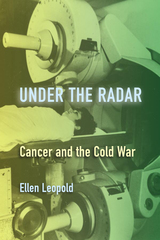 Under the Radar: Cancer and the Cold War
Leopold, Ellen
Rutgers University Press, 2008 At the end of the Second World War, a diagnosis of cancer was a death sentence. Sixty years later, it is considered a chronic disease rather than one that is invariably fatal. Although survival rates have improved, the very word continues to evoke a special terror and guilt, inspiring scientists and politicians to wage war against it. In Under the Radar, Ellen Leopold shows how nearly every aspect of our understanding and discussion of cancer bears the imprint of its Cold War entanglement. The current biases toward individual rather than corporate responsibility for rising incidence rates, research that promotes treatment rather than prevention, and therapies that can be patented and marketed all reflect a largely hidden history shaped by the Cold War. Even the language we use to describe the disease, such as the guiding metaphor for treatment, "fight fire with fire," can be traced back to the middle of the twentieth century. Writing in a lucid style, Leopold documents the military, governmental, industrial, and medical views of radiation and atomic energy to examine the postwar response to cancer through the prism of the Cold War. She explores the role of radiation in cancer therapies today, using case studies and mammogram screening, in particular, to highlight the surprising parallels. Taking into account a wide array of disciplines, this book challenges our understanding of cancer and how we approach its treatment. - Examines the postwar response to cancer through the prism of the Cold War
- Goes beyond medical science to look at the influence of Cold War policies on the way we think about cancer today
- Links the experience of postwar cancer patients with the broader evolution of what have become cancer industries
- Traces the history of human-made radiation as a state-sponsored environmental toxin
 Under the Radar: Tracking Western Radio Listeners in the Soviet Union
R. Eugene Parta
Central European University Press, 2022 Western democracy is currently under attack by a resurgent Russia, weaponizing new technologies and social media. How to respond? During the Cold War, the West fought off similar Soviet propaganda assaults with shortwave radio broadcasts. Founded in 1949, the US-funded Radio Free Europe/Radio Liberty broadcast uncensored information to the Soviet republics in their own languages. About one-third of Soviet urban adults listened to Western radio. The broadcasts played a key role in ending the Cold War and eroding the communist empire. R. Eugene Parta was for many years the director of Soviet Area Audience Research at RFE/RL, charged among others with gathering listener feedback. In this book he relates a remarkable Cold War operation to assess the impact of Western radio broadcasts on Soviet listeners by using a novel survey research approach. Given the impossibility of interviewing Soviet citizens in their own country, it pioneered audacious interview methods in order to fly under the radar and talk to Soviets traveling abroad, ultimately creating a database of 51,000 interviews which offered unparalleled insights into the media habits and mindset of the Soviet public. By recounting how the “impossible” mission was carried out, Under the Radar also shows how the lessons of the past can help counter the threat from a once and current adversary.
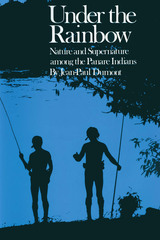 Under the Rainbow: Nature and Supernature among the Panare Indians
By Jean-Paul Dumont
University of Texas Press, 1976 This ethnographic study of the Panare Indians of Venezuela is the first extensive look at a tribe of this region of the Amazonia. It is an important book not only because it delves into the myth-filled Panare culture, but also because the author has used a modified version of the structural analysis of Claude Lévi-Strauss in examining the Panare. Lévi-Strauss applied his method of structural analysis to the mythology of many societies in Amazonia, but never to any single society. Jean-Paul Dumont has filled that gap and has shown how the approach works in practice when applied to the intensive study of a single, small-scale culture. His book significantly expands the discussion of the strengths and weaknesses of the method. The work deals specifically with the implicit mythology of the Panare and is concerned with the symbolic activities manifested in the daily behavior of this group. The analysis of the symbolism, explains Dumont, allows for the discovery of the conceptual system through which the Panare conceive of themselves. The study is organized into two parts: a presentation of the data and an analysis. The presentation includes a geographical and historical account of the Panare and a general ethnological profile. The analysis is organized into the conceptual categories of inhabited space, time, astrosexuality, hearing, and taste. A concluding chapter summarizes the analysis. Under the Rainbow will be of interest and of value not only to anthropologists but also to linguists, philosophers, psychologists, and others interested in the general intellectual movement represented by French structuralism. The fieldwork for Under the Rainbow was conducted in Venezuelan Guiana from September 1967 to July 1969.
 Under the Rattlesnake: Cherokee Health and Resiliency
Edited by Lisa J. Lefler, with a foreword by Susan Leading Fox
University of Alabama Press, 2009 Provides a balanced portrait of Cherokee health issues
For the Cherokee, health is more than the absence of disease; it includes a fully confident sense of a smooth life, peaceful existence, unhurried pace, and easy flow of time. The natural state of the world is to be neutral, balanced, with a similarly gently flowing pattern. States of imbalance, tension, or agitation are indicative of physical, mental, emotional, or spiritual illness and whether caused intentionally through omission or commission, or by outside actions or influences, the result affects and endangers the collective Cherokee. Taking a true anthropological four-field approach, Lefler and her colleagues provide a balanced portrait of Cherokee health issues. Topics covered include: an understanding of the personal and spiritual impact of skeletal research among the Cherokee; the adverse reactions to be expected in well-meaning attempts to practice bioarchaeology; health, diet, and the relationship between diet and disease; linguistic analysis of Cherokee language in historical and contemporary contexts describing the relationship of the people to the cosmos; culturally appropriate holistic approaches to disease prevention and intervention methodologies; and the importance of the sacred feminine and the use of myth and symbolism within this matrilineal culture. All aspects—physical, mental, emotional, and spiritual—figure into the Cherokee concept of good health. By providing insight into the Cherokee perspective on health, wellness, and the end of the life cycle, and by incorporating appropriate protocol and language, this work reveals the necessity of a diversity of approaches in working with all indigenous populations.
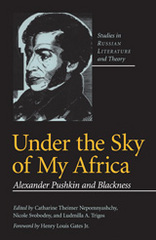 Under the Sky of My Africa: Alexander Pushkin and Blackness
Catherine Nepomnyashchy
Northwestern University Press, 2006 A wide-ranging consideration of the nature and significance of Pushkin's African heritage
Roughly in the year 1705, a young African boy, acquired from the seraglio of the Turkish sultan, was transported to Russia as a gift to Peter the Great. This child, later known as Abram Petrovich Gannibal, was to become Peter's godson and to live to a ripe old age, having attained the rank of general and the status of Russian nobility. More important, he was to become the great-grandfather of Russia's greatest national poet, Alexander Pushkin. It is the contention of the editors of this book, borne out by the essays in the collection, that Pushkin's African ancestry has played the role of a "wild card" of sorts as a formative element in Russian cultural mythology; and that the ways in which Gannibal's legacy has been included in or excluded from Pushkin's biography over the last two hundred years can serve as a shifting marker of Russia's self-definition.
The first single volume in English on this rich topic, Under the Sky of My Africa addresses the wide variety of interests implicated in the question of Pushkin's blackness-race studies, politics, American studies, music, mythopoetic criticism, mainstream Pushkin studies. In essays that are by turns biographical, iconographical, cultural, and sociological in focus, the authors-representing a broad range of disciplines and perspectives-take us from the complex attitudes toward race in Russia during Pushkin's era to the surge of racism in late Soviet and post-Soviet contemporary Russia. In sum, Under the Sky of My Africa provides a wealth of basic material on the subject as well as a series of provocative readings and interpretations that will influence future considerations of Pushkin and race in Russian culture.
 Under the Spell: A Novel
Benjamin Hedin
Northwestern University Press, 2021 Under the Spell is the first novel by Benjamin Hedin, a dazzling new voice in American fiction. Newly widowed Sandra is searching her husband’s email for financial information when she discovers a correspondence between him and a woman named Ryan. Rather than simply sharing the news of the death, Sandra, who is shocked and hungry for details, instead impersonates her husband as she writes back to Ryan. This bold course of action will expose the secrets and solitude within her marriage, prompting her to reconsider everything she once held dear.
Unmoored and seeking connection, Sandra also meets Lee, a single mother with a drinking problem, and begins babysitting her daughter. But Sandra can’t stop herself from continuing the correspondence with Ryan, in the process uncovering more about her husband—and Ryan herself. A novel that forces us to question how much of a person, even those closest to us, remains obscure, Under the Spell reveals the astonishing, transformative power of grief. This compelling study in bereavement joins classics such as Don DeLillo’s The Body Artist and Joan Didion’s The Year of Magical Thinking.
Under the Spell of Orpheus: The Persistence of a Myth in Twentieth-Century Art
Judith E. Bernstock. Foreword by Peter Selz
Southern Illinois University Press, 1991
This comprehensive view of the Orpheus myth in modern art focuses on an extremely rich artistic symbol and cuts through all the clichés to explore truly significant problems of meaning. The author takes a new approach to the iconography of major modern artists by incorporating psychological and literary analysis, as well as biography.
The three parts of the book explore the ways in which artists have identified with different aspects of the often paradoxical Orpheus myth. The first deals with artists such as Paul Klee, Carl Milles, and Barbara Hepworth. In the second, Max Beckmann, Oskar Kokoschka, and Isamu Noguchi are discussed. Artists examined in the final part include Pablo Picasso, Jacques Lipchitz, Ethel Schwabacher, and Cy Twombly. The author documents her argument with more than sixty illustrations.
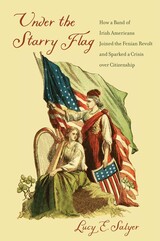 Under the Starry Flag: How a Band of Irish Americans Joined the Fenian Revolt and Sparked a Crisis over Citizenship
Lucy E. Salyer
Harvard University Press, 2018 Winner of the Myrna F. Bernath Book Award
“A stunning accomplishment…As the Trump administration works to expatriate naturalized U.S. citizens, understanding the history of individual rights and state power at the heart of Under the Starry Flag could not be more important.”
—Passport
“A brilliant piece of historical writing as well as a real page-turner. Salyer seamlessly integrates analysis of big, complicated historical questions—allegiance, naturalization, citizenship, politics, diplomacy, race, and gender—into a gripping narrative.”
—Kevin Kenny, author of The American Irish
In 1867 forty Irish American freedom fighters, outfitted with guns and ammunition, sailed to Ireland to join the effort to end British rule. They were arrested for treason as soon as they landed. The Fenians, as they were called, claimed to be American citizens, but British authorities insisted that they remained British subjects. Following the Civil War, the Fenian crisis dramatized the question of whether citizenship should be considered an inalienable right.
This gripping legal saga, a prelude to today’s immigration battles, raises important questions about immigration, citizenship, and who deserves to be protected by the law.
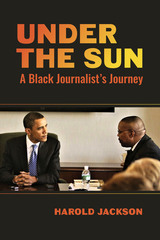 Under the Sun: A Black Journalist's Journey
Harold Jackson
University of Alabama Press, 2025 A determined journalist’s account of rising to Pulitzer Prize–winning heights Under the Sun: A Black Journalist’s Journey is Harold Jackson’s powerful memoir that chronicles his path from a Birmingham, Alabama, housing project in the 1950s and ’60s to becoming a Pulitzer Prize–winning journalist. Growing up in the segregated South, Jackson didn’t see a writing career as feasible, especially with the financial struggles his family faced after his father’s death. However, his freshman English teacher’s encouragement set him on a course that would change his life. Jackson’s journey began in high school, where he became one of the first Black students in the University of Alabama’s summer journalism workshop. It was there that he discovered his unique voice as a writer, setting the stage for a remarkable forty-five-year career as a newspaper writer and editor. Despite the pervasive racial prejudices of the time, Jackson learned to navigate the complexities of being Black in a predominantly white profession. He reflects on the duality of living as a Black person in America, a concept W. E. B. Du Bois described as “double consciousness,” and the ways journalism allowed Jackson to connect with people from all walks of life. Through his work at prominent news venues such as the Birmingham Post-Herald, United Press International, the Philadelphia Inquirer, the Birmingham News, the Baltimore Sun, and the Houston Chronicle, Jackson’s story is not just one of professional success but also of personal growth and understanding. Under the Sun is a testament to his resilience, his ability to see past racial barriers, and his unwavering commitment to giving a voice to those who need it most.
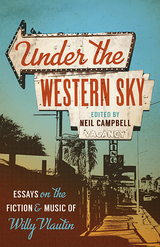 Under the Western Sky: Essays on the Fiction and Music of Willy Vlautin
Neil Campbell
University of Nevada Press, 2018 This original collection of essays by experts in the field weave together the first comprehensive examination of Nevada-born Willy Vlautin’s novels and songs, as well as featuring 11 works of art that accompany his albums and books.
Brutally honest, raw, gritty, down to earth, compassionate and affecting, Willy Vlautin’s writing evokes a power in not only theme, but in methodology. Vlautin’s novels, The Motel Life, Northline, Lean on Pete and The Free (2006-2014) chart the dispossessed lives of young people struggling to survive in difficult economic times and in regions of the U.S. West and Pacific Northwest traditionally viewed as affluent and abundant. Yet as his work shows, are actually highly stratified and deprived.
Likewise, Vlauntin’s songs, penned as lead singer of the Americana band Richmond Fontaine chart a related territory of blue-collar landscapes of the American West and Northwest with a strong emphasis on narrative and affective soundscapes evocative of the similar worlds defined in his novels.
Featuring an interview with Vlautin himself, this edited collection aims to develop the first serious, critical consideration of the important novels and songs of Willy Vlautin by exploring relations between region, music, and writing through the lens of critical regionality and other interdisciplinary, cultural, and theoretical methodologies. In so doing, it will situate his work within its regional frame of the American New West, and particularly the city of Reno, Nevada and the Pacific Northwest, whilst showing how he addresses wider cultural and global issues such as economic change, immigration shifts, gender inequality, and the loss of traditional mythic identities.
The essays take different positions in relation to considerations of both novels and music, looking for links and relations across genres, always mindful of their specificity. Under the Western Sky shows how although apparently rooted in place, Vlautin’s work traces diverse lines of contemporary cultural enquiry, engaging in an effective and troubling examination of regional haunting.
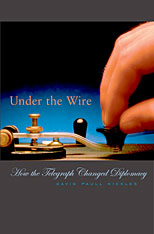 Under the Wire: How the Telegraph Changed Diplomacy
David Paull Nickles
Harvard University Press, 2003 How did the telegraph, a new and revolutionary form of communication, affect diplomats, who tended to resist change? In a study based on impressive multinational research, David Paull Nickles examines the critical impact of the telegraph on the diplomacy of the nineteenth and early twentieth centuries.
Case studies in crisis diplomacy--the War of 1812, the Trent affair during the U.S. Civil War, and the famous 1917 Zimmermann telegram--introduce wide-ranging thematic discussions on the autonomy of diplomats; the effects of increased speed on decision making and public opinion; the neglected role of clerks in diplomacy; and the issues of expense, garbled text, espionage, and technophobia that initially made foreign ministries wary of telegraphy. Ultimately, the introduction of the telegraph contributed to the centralization of foreign ministries and the rising importance of signals intelligence. The faster pace of diplomatic disputes invited more emotional decisions by statesmen, while public opinion often exercised a belligerent influence on crises developing over a shorter time period.
Under the Wire offers a fascinating new perspective on the culture of diplomacy and the social history of technology.
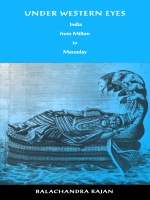 Under Western Eyes: India from Milton to Macaulay
Balachandra Rajan
Duke University Press, 1999 Spanning nearly two and a half centuries of English literature about India, Under Western Eyes traces the development of an imperial discourse that governed the English view of India well into the twentieth century. Narrating this history from its Reformation beginnings to its Victorian consolidation, Balachandra Rajan tracks this imperial presence through a wide range of literary and ideological sites. In so doing, he explores from a postcolonial vantage point collusions of gender, commerce, and empire—while revealing the tensions, self-deceptions, and conflicts at work within the English imperial design.
Rajan begins with the Portuguese poet Camões, whose poem celebrating Vasco da Gama’s passage to India becomes, according to its eighteenth-century English translator, the epic of those who would possess India. He closely examines Milton’s treatment of the Orient and Dryden’s Aureng-Zebe, the first English literary work on an Indian subject. Texts by Shelley, Southey, Mill, and Macaulay, among others, come under careful scrutiny, as does Hegel’s significant impact on English imperial discourse. Comparing the initial English representation of its actions in India (as a matter of commerce, not conquest) and its contemporaneous treatment of Ireland, Rajan exposes contradictions that shed new light on the English construction of a subaltern India.
Undercover Asian: Multiracial Asian Americans in Visual Culture
LeiLani Nishime
University of Illinois Press, 2014 In this first book-length study of media images of multiracial Asian Americans, Leilani Nishime traces the codes that alternatively enable and prevent audiences from recognizing the multiracial status of Asian Americans. Nishime's perceptive readings of popular media--movies, television shows, magazine articles, and artwork--indicate how and why the viewing public often fails to identify multiracial Asian Americans. Using actor Keanu Reeves and the Matrix trilogy, golfer Tiger Woods as examples, Nishime suggests that this failure is tied to gender, sexuality, and post-racial politics. Also considering alternative images such as reality TV star Kimora Lee Simmons, the television show Battlestar Galactica, and the artwork of Kip Fulbeck, this incisive study offers nuanced interpretations that open the door to a new and productive understanding of race in America.
Undercover Reporting: The Truth About Deception
Brooke Kroeger, Foreword by Pete Hamill
Northwestern University Press, 2012 In her provocative book, Brooke Kroeger argues for a reconsideration of the place of oft-maligned journalistic practices. While it may seem paradoxical, much of the valuable journalism in the past century and a half has emerged from undercover investigations that employed subterfuge or deception to expose wrong. Kroeger asserts that undercover work is not a separate world, but rather it embodies a central discipline of good reporting—the ability to extract significant information or to create indelible, real-time descriptions of hard-to-penetrate institutions or social situations that deserve the public’s attention. Together with a companion website that gathers some of the best investigative work of the past century, Undercover Reporting serves as a rallying call for an endangered aspect of the journalistic endeavor.
 Undercurrents: From Oceanographer to University President
John V. Byrne
Oregon State University Press, 2018 Undercurrents recounts the life and career of John Byrne, who started as a geologist at an oil company and retired as president of a major land grant university. He came to Oregon State in 1960 as a faculty member, later becoming department chair, dean, director of the Hatfield Marine Science Center, and vice president for Research and Graduate Studies. Along the way, he took leave from the university to serve the US government, first as a program director for oceanography at the National Science Foundation, and later as the administrator of the National Oceanic and Atmospheric Administration, before returning to OSU in 1984 as its twelfth president.
As president of OSU, John Byrne used the lessons learned in industry and government to guide the university through a period of turbulence caused by severe state budget restrictions. During this period of economic contraction, OSU continued under Byrne’s leadership to grow in programs, facilities, and external funding. Byrne was one of the first to introduce Total Quality Management techniques to higher education. He emphasized the importance of international education and was a supporter of significant academic reform in higher education.
While focusing on his professional career, Byrne’s memoir also shares personal stories of a childhood and youth shaped by the Great Depression and World War II. Undercurrents demonstrates on every page the curiosity, intellect, and humanity that made John Byrne successful as a scientist, educator, and administrator. Anyone pursuing a career in science or academia, and anyone interested in the history and legacy of land grant universities will welcome this richly detailed and warmly written account of Byrne’s career.
Undercut: Cut Glass in Working-Class Life during the Long Gilded Age
Joseph Larnerd
University of Delaware Press How did workers experience cut glass during its cultural heyday? Rather than privilege the stories of factory owners or wealthy consumers, Undercut: Cut Glass in Working-Class Life during the Long Gilded Age refracts the medium’s history through the labors required to make and maintain these dazzling artifacts as well as popular representations of this work, from demonstrations at World's Fairs to images of domestic workers with finished pieces in their charge. Cut glass and the many manifestations of public interest in its labors offered working peoples, too, occasions for self-reflection and, perhaps, self-realization. Foregrounding their lives, Undercut offers a multifaceted social art history of a once-popular genre of decorative art that cuts across class, gender, and race.
 Underdays
Martin Ott
University of Notre Dame Press, 2015 We encounter many voices in life: from friends and family, from media, from co-workers, from other artists. In a highly connected global world, where people and entities are electronically enmeshed, we filter these voices constantly to get to what we determine to be the truth. Taking inspiration from pop culture, politics, art, and social media, Martin Ott mines daily existence as the inspiration and driving force behind Underdays.
Underdays is a dialogue of opposing forces: life/death, love/war, the personal/the political. Ott combines global concerns with personal ones, in conversation between poems or within them, to find meaning in his search for what drives us to love and hate each other. Within many of the poems, a second voice, expressed in italic, hints at an opposing force “under” the surface, or multiple voices in conversation with his older and younger selves—his Underdays—to chart a path forward. What results is a poetic heteroglossia expressing the richness of a complex world.
"In Martin Ott's new book of poems, Underdays, there's nature, children, desire, war, and Los Angeles, but everything is shrouded with the speaker's experiences as an interrogator in the military—an institution that leaves nothing untouched, even Ott's haunting and dark poetry. But more importantly, Ott's poetry is sonically beautiful and written with such a skilled hand—a hand that was meant to write the poetry of a gifted and haunted soul." —Victoria Chang, author of The Boss
"The poems in Martin Ott’s Underdays are in-between—the war and its aftermath, the love affair and its despair. In dense, often hauntingly musical verse, Ott interrogates our wide broken world, from Afghanistan to Los Angeles, with the unity of a singular, relentless voice." —Dan O’Brien, author of War Reporter and Scarsdale
"I so admire the spirit in Underdays that clearly wants to—and does!—make beautiful poems, both in the midst of trouble and OUT of it. Turn the pages, and be met by beguiling surprises: madlibs, the heartfelt voice, jazzy soliloquies as bullets fly, lyric reveries in landscapes of dream. These poems feel pressured into being by all that's fleeting, and reading them, we may feel that toughest of dichotomies dig deeper in: 'the dangers of living, of forgetting.' " —Nance Van Winckel, author of Pacific Walkers
Underdeveloping the Amazon: Extraction, Unequal Exchange, and the Failure of the Modern State
Stephen G. Bunker
University of Chicago Press, 1988 Underdeveloping the Amazon shows how different extractive economies have periodically enriched various dominant classes but progressively impoverished the entire region by disrupting both the Amazon Basin's ecology and human communities. Contending that traditional models of development based almost exclusively on the European and American experience of industrial production cannot apply to a regional economy founded on extraction, Stephen G. Bunker proposes a new model based on the use and depletion of energy values in natural resources as the key to understanding the disruptive forces at work in the Basin.
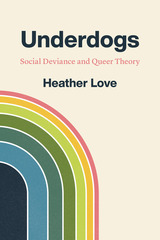 Underdogs: Social Deviance and Queer Theory
Heather Love
University of Chicago Press, 2021 A pathbreaking genealogy of queer theory that traces its roots to an unexpected source: sociological research on marginal communities in the era before Stonewall.
The sociology of “social deviants” flourished in the United States at midcentury, studying the lives of outsiders such as homosexuals, Jews, disabled people, drug addicts, and political radicals. But in the following decades, many of these downcast figures would become the architects of new social movements, activists in revolt against institutions, the state, and social constraint. As queer theory gained prominence as a subfield of the humanities in the late 1980s, it seemed to inherit these radical, activist impulses—challenging not only gender and sexual norms, but also the nature of society itself.
With Underdogs, Heather Love shows that queer theorists inherited as much from sociologists as they did from activists. Through theoretical and archival work, Love traces the connection between midcentury studies of deviance and the antinormative, antiessentialist field of queer theory. While sociologists saw deviance as an inevitable fact of social life, queer theorists embraced it as a rallying cry. A robust interdisciplinary history of the field, Underdogs stages a reencounter with the practices and communities that underwrite radical queer thought.
 Underdogs: The Making of the Modern Marine Corps
Aaron B. O'Connell
Harvard University Press, 2012 The Marine Corps has always considered itself a breed apart. Since 1775, America’s smallest armed service has been suspicious of outsiders and deeply loyal to its traditions. Marines believe in nothing more strongly than the Corps’ uniqueness and superiority, and this undying faith in its own exceptionalism is what has made the Marines one of the sharpest, swiftest tools of American military power. Along with unapologetic self-promotion, a strong sense of identity has enabled the Corps to exert a powerful influence on American politics and culture.
Aaron O’Connell focuses on the period from World War II to Vietnam, when the Marine Corps transformed itself from America’s least respected to its most elite armed force. He describes how the distinctive Marine culture played a role in this ascendancy. Venerating sacrifice and suffering, privileging the collective over the individual, Corps culture was saturated with romantic and religious overtones that had enormous marketing potential in a postwar America energized by new global responsibilities. Capitalizing on this, the Marines curried the favor of the nation’s best reporters, befriended publishers, courted Hollywood and Congress, and built a public relations infrastructure that would eventually brand it as the most prestigious military service in America.
But the Corps’ triumphs did not come without costs, and O’Connell writes of those, too, including a culture of violence that sometimes spread beyond the battlefield. And as he considers how the Corps’ interventions in American politics have ushered in a more militarized approach to national security, O’Connell questions its sustainability.
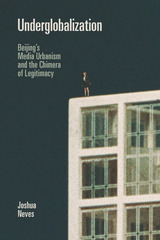 Underglobalization: Beijing's Media Urbanism and the Chimera of Legitimacy
Joshua Neves
Duke University Press, 2020 Despite China's recent emergence as a major global economic and geopolitical power, its association with counterfeit goods and intellectual property piracy has led many in the West to dismiss its urbanization and globalization as suspect or inauthentic. In Underglobalization Joshua Neves examines the cultural politics of the “fake” and how frictions between legality and legitimacy propel dominant models of economic development and political life in contemporary China. Focusing on a wide range of media technologies and practices in Beijing, Neves shows how piracy and fakes are manifestations of what he calls underglobalization—the ways social actors undermine and refuse to implement the specific procedures and protocols required by globalization at different scales. By tracking the rise of fake politics and transformations in political society, in China and globally, Neves demonstrates that they are alternate outcomes of globalizing processes rather than anathema to them.
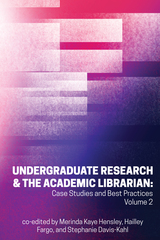 Undergraduate Research & the Academic Librarian: Case Studies and Best Practices, Volume 2
Merinda Kaye Hensley
Association of College & Research Libraries, 2023 “This second volume of Undergraduate Research & the Academic Librarian: Case Studies and Best Practices provides colleges and universities with a set of models that inspire and enrich undergraduate research, demonstrating the contributions of academic librarians to student success.” —From the Foreword by Janice DeCosmo Undergraduate research is a specific pedagogical practice with an impact on teaching and learning, and the definition of what counts as research continues to expand to include different types of projects, mentors, and institutions. Diversity, equity, and inclusion in librarians’ work with students and faculty are present and growing. Collaborations between faculty, librarians, and students are furthering student knowledge in new ways. This community and an awareness of students’ non-academic challenges demonstrate the library’s contribution to students’ overall sense of belonging within their institutions. This second volume of Undergraduate Research & the Academic Librarian—following 2017’s first volume—contains 22 new chapters that explore these expanded definitions of research and the changes wrought in the profession and the world in the intervening years. Five sections examine: - First-Year Undergraduate Research Models
- Cohort-Based Models
- Tutorials, Learning Objects, Services, and Institutional Repositories
- Course-Based Undergraduate Research Collaborations
- Building and Sustaining Programs
Throughout the book you’ll find lesson plans, activities, and strategies for connecting with students, faculty, and undergraduate research coordinators in support of undergraduate engagement and success. Undergraduate Research & the Academic Librarian, Volume 2, captures both the big picture view of undergraduate research as well as the front-line work in the classroom, at the reference desk, and online.
 Underground Asia: Global Revolutionaries and the Assault on Empire
Tim Harper
Harvard University Press, 2020 An Economist Best Book of the Year
A Financial Times Best Book of the Year
A major historian tells the dramatic and untold story of the shadowy networks of revolutionaries across Asia who laid the foundations in the early twentieth century for the end of European imperialism on their continent.
This is the epic tale of how modern Asia emerged out of conflict between imperial powers and a global network of revolutionaries in the turbulent early decades of the twentieth century.
In 1900, European empires had not yet reached their territorial zenith. But a new generation of Asian radicals had already planted the seeds of their destruction. They gained new energy and recruits after the First World War and especially the Bolshevik Revolution, which sparked utopian visions of a free and communist world order led by the peoples of Asia. Aided by the new technologies of cheap printing presses and international travel, they built clandestine webs of resistance from imperial capitals to the front lines of insurgency that stretched from Calcutta and Bombay to Batavia, Hanoi, and Shanghai. Tim Harper takes us into the heart of this shadowy world by following the interconnected lives of the most remarkable of these Marxists, anarchists, and nationalists, including the Bengali radical M. N. Roy, the iconic Vietnamese leader Ho Chi Minh, and the enigmatic Indonesian communist Tan Malaka. He recreates the extraordinary milieu of stowaways, false identities, secret codes, cheap firearms, and conspiracies in which they worked. He shows how they fought with subterfuge, violence, and persuasion, all the while struggling to stay one step ahead of imperial authorities.
Underground Asia shows for the first time how Asia’s national liberation movements crucially depended on global action. And it reveals how the consequences of the revolutionaries’ struggle, for better or worse, shape Asia’s destiny to this day.
Previous praise for Tim Harper
Praise for Forgotten Wars:
“[A] compelling book.”—Philip Delves Broughton, Wall Street Journal
“Lucid…majestic.”—Peter Preston, The Observer
“Authoritative.”—Pankaj Mishra, New Yorker
Praise for Forgotten Armies:
“Panoramic… Vivid.”—Benjamin Schwarz, New York Times Book Review
“A spectacular book.”—Martin Jacques, The Guardian
 Underground Asia: Global Revolutionaries and the Assault on Empire
Tim Harper
Harvard University Press, 2021 Cundill Prize Finalist
An Economist Best Book of the Year
A Financial Times Best Book of the Year
“Superbly original…Breaks new ground by showing how a collective consciousness emerged among revolutionaries.”
—The Economist
“A clearly written, brilliantly researched examination of the people and movements that shaped Asia’s course in the 20th century and continue to influence the continent today.”
—Walter Russell Mead, Wall Street Journal
“The most gripping work of history I have ever read. It is a truly profound meditation on the struggles for freedom that shaped modern Asia…a flat out literary masterpiece.”
—Sunil Amrith, author of Unruly Waters
European empires had not yet reached their zenith when Asian radicals planted the seeds of their destruction. They gained energy and recruits after the Bolshevik Revolution, which sparked visions of a free and radically equal world. Thanks to cheap printing presses and the new possibility of international travel, these utopian revolutionaries built clandestine webs of resistance from London and Paris to Calcutta, Bombay, Hanoi, and Shanghai. Tim Harper takes us into this shadowy world, following the interconnected lives of Asian Marxists, anarchists, and nationalists such as M. N. Roy, Ho Chi Minh, and Tan Malaka.
Underground Asia shows for the first time how these national liberation movements crucially depended on global action and reveals how these insurgencies shape the region to this day.
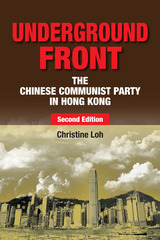 Underground Front: The Chinese Communist Party in Hong Kong, Second Edition
Christine Loh
Hong Kong University Press, 2019 Underground Front is a pioneering examination of the role that the Chinese Communist Party has played in Hong Kong since the creation of the party in 1921, through to the present day. The second edition goes into greater depth on the party’s view on “one country, two systems”, “patriotism”, and “elections”. The introduction has been extensively revised and the concluding chapter has been completely rewritten in order to give a thorough account of the post-1997 governance and political system in Hong Kong, and where challenges lie. Christine Loh endeavours to keep the data and the materials up to date and to include the discussion of some recent events in Hong Kong. The appendices on the key targets of the party’s united front activities also make the book an especially useful read for all who are interested in Hong Kong history and politics, and the history of modern China.
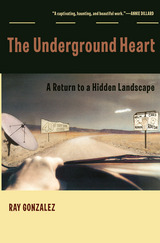 The Underground Heart: A Return to a Hidden Landscape
Ray Gonzalez
University of Arizona Press, 2002 Returning home after a long absence is not always easy. For Ray Gonzalez, it is more than a visit; it is a journey to the underground heart. He has lived in other parts of the country for more than twenty years, but this award-winning poet now returns to the desert Southwest—a native son playing tourist—in order to unearth the hidden landscapes of family and race.
As Gonzalez drives the highways of New Mexico and west Texas, he shows us a border culture rejuvenated by tourist and trade dollars, one that will surprise readers for whom the border means only illegal immigration, NAFTA, and the drug trade. Played out against a soundtrack of the Allman Brothers and The Doors, The Underground Heart takes readers on a trip through a seemingly barren landscape that teems with life and stories. Gonzalez witnesses Minnesotans experiencing culture shock while attending a college football game in El Paso; he finds a proliferation of Pancho Villa death masks housed at different museums; he revisits Carlsbad Caverns, discovering unsuspected beauty beneath the desert's desolation; and he takes us shopping at El Mercado—where tourists can buy everything from black velvet paintings of Elvis (or Jesus, or JFK) to Mexican flag underwear.
From "nuclear tourism" in New Mexico to "heritage tourism" in the restored missions of San Antonio, Gonzalez goes behind the slogans of The Land of Enchantment and The Lone Star State to uncover a totally different Southwest. Here are tourist centers that give a distorted view of southwestern life to outsiders, who leave their dollars in museum gift shops and go home weighed down with pounds of Indian jewelry around their necks. Here border history is the story of one culture overlaid on another, re-forming itself into a whole new civilization on the banks of the Rio Grande.
The Underground Heart is a book brimming with subtle ironies and insights both quiet and complex—one which recognizes that sometimes one must go away and grow older to finally recognize home as a life-giving, spiritually sustaining place. As Gonzalez rediscovers the land of his past, he comes to understand the hyper, bilingual atmosphere of its future. And in the Southwest he describes, readers may catch a glimpse of their own hidden landscapes of home.
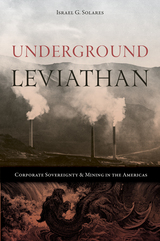 Underground Leviathan: Corporate Sovereignty and Mining in the Americas
Israel G. Solares
University of Nevada Press, 2024 Underground Leviathan explores the emergence, dynamics, and lasting impacts of a mining firm, the United States Company. Through its exercise of sovereign power across the borders of North America in the early twentieth century, the transnational US Company shaped the business, environmental, political, and scientific landscape. Between its initial incorporation in Maine in 1906 and its final demise in the 1980s, the mining company held properties in Utah, Colorado, California, Nevada, Alaska, Mexico, and Canada. The firm was a prototypical management-ruled corporation, which strategically planned and manipulated the technological, production, economic, urban, environmental, political, and cultural activities wherever it operated, all while shaping social actors internationally, including managers, engineers, workers, neighbors, and farmers.
Author Israel G. Solares examines how the twentieth century multinational firm established and articulated multinational corporate sovereignty in ways that reflect other multinational titans, like the East Asian Trade companies, and presages the digital giants and space corporations of the twenty-first century. Bridging the domineering practices used during the colonization of Southern Asia with the futuristic colonies on the Moon, Underground Leviathan documents the cost of a corporation’s unyielding desire to consume the secrets at the center of the Earth.
An Underground Life: Memoirs of a Gay Jew in Nazi Berlin
Gad Beck; written with Frank Heibert, translated by Allison Brown
University of Wisconsin Press, 2000 That a Jew living in Nazi Berlin survived the Holocaust at all is surprising. That he was a homosexual and a teenage leader in the resistance and yet survived is amazing. But that he endured the ongoing horror with an open heart, with love and without vitriol, and has written about it so beautifully is truly miraculous. This is Gad Beck’s story.
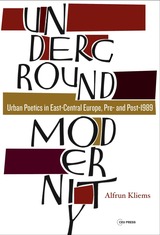 Underground Modernity: Urban Poetics in East-Central Europe, Pre- and Post-1989
Alfrun Kliems
Central European University Press, 2021 The literary scholar Alfrun Kliems explores the aesthetic strategies of Eastern European underground literature, art, film and music in the decades before and after the fall of communism, ranging from the ‘father’ of Prague Underground, Egon Bondy, to the neo-Dada Club of Polish Losers in Berlin. The works she considers are "underground" in the sense that they were produced illegally, or were received as subversive after the regimes had fallen. Her study challenges common notions of ‘Underground’ as an umbrella term for nonconformism. Rather, it depicts it as a sociopoetic reflection of modernity, intimately linked to urban settings, with tropes and aesthetic procedures related to Surrealism, Dadaism, Expressionism, and, above all, pop and counterculture. The author discusses these commonalities and distinctions in Czech, Polish, Slovak, Ukrainian, Russian, and German authors, musicians, and filmmakers. She identifies intertextual relations across languages and generations, and situates her findings in a transatlantic context (including the Beat Generation, Susan Sontag, Neil Young) and the historical framework of Romanticism and modernity (including Baudelaire and Brecht). Despite this wide brief, the book never loses sight of its core message: Underground is no arbitrary expression of discontent, but rather the result of a fundamental conflict at the socio-philosophical roots of modernity.
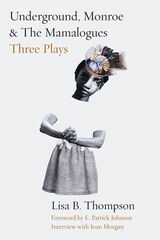 Underground, Monroe, and The Mamalogues: Three Plays
Lisa B. Thompson; Foreword by E. Patrick Johnson; Interview with Joan Morgan
Northwestern University Press, 2020 This book features new plays by Lisa B. Thompson, author of Single Black Female. In these three plays, the black feminist playwright and scholar thoughtfully explores themes such as the black family, motherhood, migration, racial violence, and trauma and its effect on black people from the early twentieth century to the present. The works showcase Thompson’s subversive humor and engagement with black history and culture through the lens of the black middle class.
The thriller Underground explores the challenges of radical black politics among the black middle class in the post-Obama era. Monroe, a period drama about the Great Migration, depicts the impact of a lynching on a family and community in 1940s Louisiana. The Mamalogues, a satirical comedy, focuses on three middle-class black single mothers as they lean in, stress out, and guide precocious black children from diapers to college in a dangerous world. This collection will be compelling to readers interested in African American studies; drama, theater, and performance; feminist and gender studies; popular culture and media studies; and American studies.
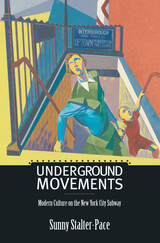 Underground Movements: Modern Culture on the New York City Subway
Sunny Stalter-Pace
University of Massachusetts Press, 2013 For more than a century the New York City subway system has been a vital part of the city's identity, even as judgments of its value have varied. It has been celebrated as the technological embodiment of the American melting pot and reviled as a blighted urban netherworld. Underground Movements explores the many meanings of the subway by looking back at the era when it first ascended to cultural prominence, from its opening in 1904 through the mid-1960s. Sunny Stalter-Pace analyzes a broad range of texts written during this period—news articles, modernist poetry, ethnic plays, migration narratives, as well as canonical works by authors such as Hart Crane, William Carlos Williams, and Ralph Ellison—to illustrate the subway's central importance as a site of abstract connection, both between different parts of the city and between city dwellers who ride the train together.
Writers and artists took up questions that originated in the sphere of urban planning to explore how underground movement changed the ways people understand the city. Modern poets envisioned the subway as a space of literary innovation; playwrights and fiction writers used it to gauge the consequences of migration and immigration; and essayists found that it underscored the fragile relationship between urban development and memory. Even today, the symbolic associations forged by these early texts continue to influence understanding of the cultural significance of the subway and the city it connects.
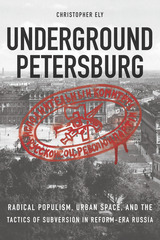 Underground Petersburg: Radical Populism, Urban Space, and the Tactics of Subversion in Reform-Era Russia
Christopher Ely
Northern Illinois University Press, 2016 Although the radical populist movement that arose in Russia during the reign of Tsar Alexander II has been well documented, this important study opens with questions that haven’t yet been addressed: How did Russian radical populists manage to carry out a three-year campaign of revolutionary violence, killing or wounding scores of people, including top government officials, and eventually taking the life of the tsar himself? And how did this all occur under the noses of the tsar’s political police, who deployed vast resources and huge numbers of officials in an exhaustive effort to stop the killing?
In Underground Petersburg, Christopher Ely argues that the most powerful weapon of populist terrorism was the revolutionary underground it created. Attempts to convey populist ideals in the public sphere met with resistance at every turn. When methods such as propaganda campaigns and street demonstrations failed, populists created a sophisticated urban underground. Linked to the newly discovered weapon of terrorist violence, this base of operations allowed them to live undetected in the midst of the city, produce their own weaponry, and attempt to ignite an insurrection through violent attacks—putting terrorism on the map as a technique of political rebellion.
Accessible to non-specialists, this insightful study reinterprets radical populism, clarifying its crucial place in Russian history and elucidating its contribution to the history of terrorism. Underground Petersburg will appeal to scholars and students of Russia, as well as those interested in terrorism and insurrectionary movements, urban studies, and the sociology of subcultures.
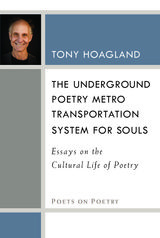 The Underground Poetry Metro Transportation System for Souls: Essays on the Cultural Life of Poetry
Tony Hoagland
University of Michigan Press, 2019 The Underground Poetry Metro Transportation System for Souls collects 16 essays by late Tony Hoagland. Gathered by Hoagland himself into a volume for the Poets on Poetry series, these pieces grapple with an expansive range of poetic and cultural concerns—and the surprising and necessary knowledge to be found where they cross paths. His trademark humor and irony, at once approachable, thoughtful, and sophisticated, lead the way toward clear-eyed, sometimes difficult, considerations of contemporary American culture. Through his curiosity, he elevates the seemingly quotidian into a profound subject worthy of close consideration. Hoagland’s generosity of spirit imbues his work with empathy for experiences beyond his own, and his honesty allows him to turn a critical eye on himself and to acknowledge the limits of his understanding. This collection will be rewarding not just for readers of contemporary poetry, but for anyone who wants to step back, take a look at our American reality, and know we’ll be okay.
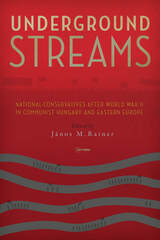 Underground Streams: National-Conservatives after World War II in Communist Hungary and Eastern Europe
János M. Rainer
Central European University Press, 2023 The authors of this edited volume address the hidden attraction that existed between the extremes of left and right, and of internationalism and nationalism under the decades of communist dictatorship in Eastern Europe. One might suppose that under the suppressive regimes based on leftist ideology and internationalism their right-wing opponents would have been defeated and ultimately removed. These essays, on the other hand, recount the itinerary of survival and revival of "right-wing" thought and activities under communist dictatorship. Resistance and accommodation are explored in the various phases from the Stalinist era to the demise of the Soviet Bloc, with the continuity provided by tacit or concealed right-wing discourses receiving particular consideration. The Eastern European right, both in its conservative and fascist version, centered on nationalism, a legitimizing factor that increased with the downfall of the regimes, and the authors thus accord nationalism special attention. Two documentary sources for these essays that stand out are files of the security services and the exceptionally rich Oral History Archive compiled by the 1956 Institute in Budapest, Hungary.
Underground Women
Jesse Lee Kercheval
University of Wisconsin Press, 2019 A newlywed gazes upon the wreckage of the Titanic. A young woman becomes the protégé of a Parisian hotelier. An old woman meets an angel in a ghost town. Underground Women is a compilation of short stories by multitalented writer Jesse Lee Kercheval. The heart of the volume is a reissue of narratives first published as the The Dogeater, winner of the AWP Short Fiction Award in 1987. With arresting imagery and heart-wrenching storylines, Kercheval’s work uses humor and imagination to weave together themes of loss, dignity, tenacity, and acceptance. These surreal and powerful vignettes will resonate with readers today as much as they did when first published.
Underlife
January Gill O'Neil
CavanKerry Press, 2009 The dynamics of race, family, motherhood, career, sex and ultimately, transformation are explored in this debut collection. Underlife represents the wilderness of thought and emotion hidden away from the external world. Through O’Neil’s narratives we see our lives as if for the first time.
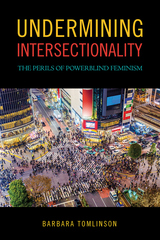 Undermining Intersectionality: The Perils of Powerblind Feminism
Barbara Tomlinson
Temple University Press, 2019 In this provocative book, esteemed scholar Barbara Tomlinson asserts that intersectionality—the idea that categories such as gender, race, and class create overlapping systemsof oppression—is consistently misinterpreted in feminist argument. Despite becoming a central theme in feminist scholarship and activism, Tomlinson believes dominant feminism has failed to fully understand the concept. Undermining Intersectionality reveals that this apparent paradox is the result of the disturbing racial politics underlying more than two decades of widely-cited critiques of intersectionality produced by prominent white feminist scholars who have been insufficiently attentive to racial dynamics. As such, feminist critiques of intersectionality repeatedly reinforce racial hierarchies, undermining academic feminism’s supposed commitment to social justice. Tomlinson offers a persuasive analysis of the rhetorics and conventions of argument used in these critiques to demonstrate their systematic reliance on “powerblind” discursive practices. Undermining Intersectionality concludes by presenting suggestions about concrete steps feminist researchers, readers, authors, and editors can take to promote more productive and principled engagements with intersectional thinking.
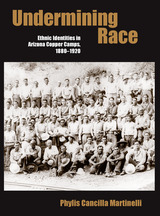 Undermining Race: Ethnic Identities in Arizona Copper Camps, 1880–1920
Phylis Cancilla Martinelli
University of Arizona Press, 2009 Undermining Race rewrites the history of race, immigration, and labor in the copper industry in Arizona. The book focuses on the case of Italian immigrants in their relationships with Anglo, Mexican, and Spanish miners (and at times with blacks, Asian Americans, and Native Americans), requiring a reinterpretation of the way race was formed and figured across place and time.
Phylis Martinelli argues that the case of Italians in Arizona provides insight into “in between” racial and ethnic categories, demonstrating that the categorizing of Italians varied from camp to camp depending on local conditions—such as management practices in structuring labor markets and workers’ housing, and the choices made by immigrants in forging communities of language and mutual support. Italians—even light-skinned northern Italians—were not considered completely “white” in Arizona at this historical moment, yet neither were they consistently racialized as non-white, and tactics used to control them ranged from micro to macro level violence.
To make her argument, Martinelli looks closely at two “white camps” in Globe and Bisbee and at the Mexican camp of Clifton-Morenci. Comparing and contrasting the placement of Italians in these three camps shows how the usual binary system of race relations became complicated, which in turn affected the existing race-based labor hierarchy, especially during strikes. The book provides additional case studies to argue that the biracial stratification system in the United States was in fact triracial at times. According to Martinelli, this system determined the nature of the associations among laborers as well as the way Americans came to construct “whiteness.”
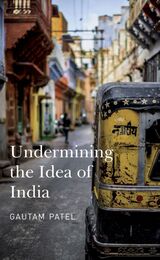 Undermining the Idea of India
Gautam Patel
Seagull Books, 2022 A searing manifesto for troubled times in India.
“India is improbable. By any measure of logic or reason, it should not be. Not in this form. And yet it is.”
With this provocation, Justice Gautam Patel of the Bombay High Court sketches the exoskeleton of this improbability—the “Constitutional” idea of India. Justice Patel argues that the devolution of power is necessary for the survival of any liberal democracy, maintaining the idea that “the right to choose one’s own government is the right to dissent.” Decrying the portrayal of politics as sport, Patel elucidates the strategies and tactics used by “nimble” governments to enforce a culture of “broad-spectrum illiberalism.” A champion of transparency in the judiciary, Patel argues that the Internet and the judiciary must serve as beacons in this age of precarity. A timely text that comes at a juncture where liberal democracies across the world are facing existential threats, Undermining the Idea of India is a searing manifesto for our troubled times.
Underscore
Julie Carr
Omnidawn, 2024 Tender lyric poetry dedicated to two of the poet’s most influential late teachers.
Julie Carr’s most intimate book to date, Underscore, is dedicated to two of Carr’s foundational teachers, the dancer Nancy Stark Smith and the poet Jean Valentine, both of whom died in 2020. Elegiac and tender—at times erotic at other times bitter—these poems remain deeply invested in human relationships amid a life whose backdrop is human suffering.
Reaching toward the “ghost companions in the thicket” and to the beloveds who still “pulse with activity,” Underscore’s sonically intricate poems express a longing for dynamic forces of intra-action, a sense of expanded encounter, and what Stark Smith called “overlapping kinespheres.”
 The Undersea Network
Nicole Starosielski
Duke University Press, 2015 In our "wireless" world it is easy to take the importance of the undersea cable systems for granted, but the stakes of their successful operation are huge, as they are responsible for carrying almost all transoceanic Internet traffic. In The Undersea Network Nicole Starosielski follows these cables from the ocean depths to their landing zones on the sandy beaches of the South Pacific, bringing them to the surface of media scholarship and making visible the materiality of the wired network. In doing so, she charts the cable network's cultural, historical, geographic and environmental dimensions. Starosielski argues that the environments the cables occupy are historical and political realms, where the network and the connections it enables are made possible by the deliberate negotiation and manipulation of technology, culture, politics and geography. Accompanying the book is an interactive digital mapping project, where readers can trace cable routes, view photographs and archival materials, and read stories about the island cable hubs.
Understandable Electric Circuits
Meizhong Wang
The Institution of Engineering and Technology, 2010 There are many 'Electric Circuits' books on the market but this unique Understandable Electric Circuits book provides an understandable and effective introduction to the fundamentals of DC/AC circuits. It covers current, voltage, power, resistors, capacitors, inductors, impedance, admittance, dependent/independent sources, the basic circuit laws/rules (Ohm's law, KVL/KCL, voltage/current divider rules), series/parallel and wye/ delta circuits, methods of DC/AC analysis (branch current and mesh/node analysis), the network theorems (superposition, Thevenin's/Norton's theorems, maximum power transfer, Millman's and substitution theorems), transient analysis, RLC circuits and resonance, mutual inductance, transformers, and more.
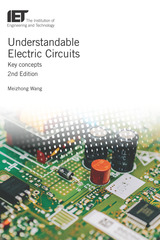 Understandable Electric Circuits: Key concepts
Meizhong Wang
The Institution of Engineering and Technology, 2019 In this digital age, as the role of electronic circuits becomes ever broader and more complex, a thorough understanding of the key concepts of circuits is a great advantage. This book offers a thorough reference guide to the theory, elements and design of basic electric circuits, providing a solid foundation for those who plan to move into the field of electronics engineering, and essential information for anyone who uses electric circuitry in their profession or research. The book is designed to be accessible to newcomers to the field while also providing a useful review for more advanced readers. It has been extensively revised and expanded for this new edition to provide a clear source of information on this complex topic. Materials are presented visually with less text and more outlines so that readers can quickly get to the heart of each topic, making studying and reviewing more effective.
Understandable Electronic Devices: Key concepts and circuit design
Meizhong Wang
The Institution of Engineering and Technology, 2022 An electronic device is a physical component of an electronic circuit or system, which is used to affect electrons and their associated fields in accordance with the function of that system. Such systems have a very broad range of applications, the main ones being, Industrial automation and motion control, information processing, telecommunication, and signal processing.
 Understanding Affirmative Action: Politics, Discrimination, and the Search for Justice
J. Edward Kellough
Georgetown University Press, 2006 For some time, the United States has been engaged in a national debate over affirmative action policy. A policy that began with the idea of creating a level playing field for minorities has sparked controversy in the workplace, in higher education, and elsewhere. After forty years, the debate still continues and the issues are as complex as ever. While most Americans are familiar with the term, they may not fully understand what affirmative action is and why it has become such a divisive issue. With this concise and up-to-date introduction, J. Edward Kellough brings together historical, philosophical, and legal analyses to fully inform participants and observers of this debate. Aiming to promote a more thorough knowledge of the issues involved, this book covers the history, legal status, controversies, and impact of affirmative action in both the private and public sectors—and in education as well as employment. In addition, Kellough shows how the development and implementation of affirmative action policies have been significantly influenced by the nature and operation of our political institutions. Highlighting key landmarks in legislation and court decisions, he explains such concepts as "disparate impact," "diversity management," "strict scrutiny," and "representative bureaucracy." Understanding Affirmative Action probes the rationale for affirmative action, the different arguments against it, and the known impact it has had. Kellough concludes with a consideration of whether or not affirmative action will remain a useful tool for combating discrimination in the years to come. Not just for students in public administration and public policy, this handy volume will be a valuable resource for public administrators, human resource managers, and ordinary citizens looking for a balanced treatment of a controversial policy.
Understanding Al Qaeda: Changing War and Global Politics
Mohammad-Mahmoud Ould Mohamedou
Pluto Press, 2011 This book controversially argues that Al Qaeda has clear aims, and that the only way to defeat it is to engage with its arguments in a serious way.
Since the publication of the first edition in 2006, Mohamedou has brought the text right up-to-date. Starting with Al Qaeda's creation almost twenty years ago, and sketching its global mutation, Mohamedou explains that there is a cogent strategy to Al Qaeda's actions. He shows that the 'war on terror' is failing, only serving to recruit more terrorists to Al Qaeda's cause. He also puts forward a case for how the international community can best respond.
Arguing that it is dangerous to dismiss Al Qaeda as illogical and irrational, this incisive and original book is important for policy-makers and ideal for undergraduates in international relations, Middle East studies and peace/conflict studies.
 Understanding ALBA: Progress, Problems, and Prospects of Alternative Regionalism in Latin America and the Caribbean
Edited by Asa K. Cusack
University of London Press, 2018 This collection analyses the impact and influence of the Bolivarian Alliance for the Peoples of Our America (ALBA), whose vision of alternative regionalism has spearheaded Latin America and the Caribbean’s collective challenge to neoliberal globalisation in the twenty-first century. The volume’s comprehensive coverage incorporates insights from the domestic level in Nicaragua, the Anglophone Caribbean, and especially Venezuela, while also exploring ALBA’s key regional economic and social-policy initiatives and its place in the wider international relations of Latin American and the Caribbean. Moving beyond normative debates about the project’s desirability and descriptive accounts of its initiatives, this volume provides critical analyses that consider equally ALBA’s progress, problems, and prospects. In tackling many of the key questions about the past and future of ALBA it reveals a frequently misunderstood organisation whose impacts have been significant but whose failings also jeopardise the project’s long-term sustainability. This timely volume helps us to understand the dynamics shaping the region at a time when its global relevance has never been greater.
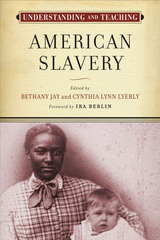 Understanding and Teaching American Slavery
Edited by Bethany Jay and Cynthia Lynn Lyerly, Foreword by Ira Berlin
University of Wisconsin Press, 2016 Perhaps no topic in U.S. history is as emotionally fraught as the nation’s centuries-long entanglement with slavery. How can teachers get students to understand the racist underpinnings of that institution—and to acknowledge its legacies in contemporary America? How can they overcome students’ shame, anger, guilt, or denial? How can they incorporate into the classroom important primary sources that may contain obsolete and racist terms, images, and ideas? This book, designed for college and high school teachers, is a critical resource for understanding and teaching this challenging topic in all its complexity.
Opening with Ira Berlin’s reflections on ten elements that are essential to include in any course on this topic, Understanding and Teaching American Slavery offers practical advice for teaching specific content, utilizing sources, and getting students to think critically. Contributors address, among other topics, slavery and the nation’s founders, the diverse experiences of the enslaved, slavery’s role in the Civil War, and the relationship between slavery and the northern economy. Other chapters offer ideas for teaching through slave narratives, runaway ads, spirituals, films, and material culture. Taken together, the essays in the volume help instructors tackle problems, discover opportunities, and guide students in grappling with the ugliest truths of America’s past.
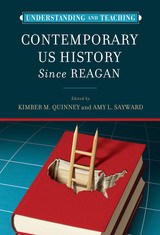 Understanding and Teaching Contemporary US History since Reagan
Kimber M. Quinney Amy L. Sayward
University of Wisconsin Press, 2022 Understanding and Teaching Contemporary US History since Reagan is designed for teachers looking for new perspectives on teaching the recent past, the period of US history often given the least attention in classrooms. Less of a traditional textbook than a pedagogical Swiss Army knife, the volume offers a diversity of voices and approaches to teaching a field that, by its very nature, invites vigorous debate and puts generational differences in stark relief. Older history is likely to feel removed from the lived experiences of both teachers and students, allowing for a certain dispassion of perspective. By contrast, contemporary history creates unique challenges, as individual teachers and students may think they know “what really happened” by virtue of their personal experiences.
The volume addresses a wide swath of topics, from social movements around identity and representation to the Supreme Court, law enforcement, migration, climate change, and international relations. Emphasizing critical thinking and primary-source analysis, it will aid teachers in creating an invigorating and democratizing classroom experience. Intended for use in both secondary and postsecondary classrooms, the book’s structure allows for a variety of applications and invites a broad audience.
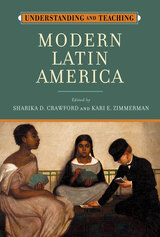 Understanding and Teaching Modern Latin America
Edited by Sharika D. Crawford and Kari E. Zimmerman
University of Wisconsin Press, 2026 Understanding and Teaching Modern Latin America combines engaging, clearly written overviews of key themes with fresh and well-tested classroom approaches for teaching today’s students about a complex historical subject. This volume comprises an introduction and sixteen chapters divided into three parts, including a reflection from a senior professor about the ways in which teaching Latin American history have changed over the past few decades, as public calls to internationalize high school and college students have led to the growth of world history courses. Chapters explore a wide range of themes—including slavery, revolution, race, labor, gender, and the environment. This volume also offers innovative and practical teaching strategies, from using maps to incorporating food, to enrich any K–16 curriculum. By presenting multiple viewpoints, this book functions as a springboard for instructors hoping to encourage students to negotiate the various contradictions in historical study.
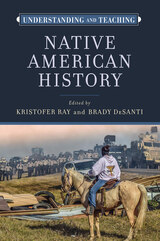 Understanding and Teaching Native American History
Edited by Kristofer Ray and Brady DeSanti
University of Wisconsin Press, 2023 Understanding and Teaching Native American History is a timely and urgently needed remedy to a long-standing gap in history instruction. While the past three decades have seen burgeoning scholarship in Indigenous studies, comparatively little of that has trickled into classrooms. This volume is designed to help teachers effectively integrate Indigenous history and culture into their lessons, providing richly researched content and resources across the chronological and geographical landscape of what is now known as North America.
Despite the availability of new scholarship, many teachers struggle with contextualizing Indigenous history and experience. Native peoples frequently find themselves relegated to historical descriptions, merely a foil to the European settlers who are the protagonists in the dominant North American narrative. This book offers a way forward, an alternative framing of the story that highlights the ongoing integral role of Native peoples via broad coverage in a variety of topics including the historical, political, and cultural.
With its scope and clarity of vision, suggestions for navigating sensitive topics, and a multitude of innovative approaches authored by contributors from multidisciplinary backgrounds, Understanding and Teaching Native American History will also find use in methods and other graduate courses. Nearly a decade in the conception and making, this is a groundbreaking source for both beginning and veteran instructors.
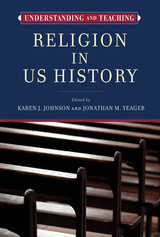 Understanding and Teaching Religion in US History
Edited by Karen J. Johnson and Jonathan M. Yeager
University of Wisconsin Press, 2024 Religion is deeply embedded in American history, and one cannot understand American history’s broad dynamics without accounting for it. Without detailing the history of religions, teachers cannot properly explain key themes in US survey courses, such as politics, social dynamics, immigration and colonization, gender, race, or class. From early Native American beliefs and practices, to European explorations of the New World, to the most recent presidential elections, religion has been a significant feature of the American story. In Understanding and Teaching Religion in US History, a diverse group of eminent historians and history teachers provide a practical tool for teachers looking to improve history instruction at the upper-level secondary and undergraduate level.
This book offers a breadth of voices and approaches to teaching this crucial part of US history. Religion can be a delicate topic, especially in public education, and many students and teachers bring strongly held views and identities to their understanding of the past. The editors and contributors aim to help the reader see religion in fresh ways, to present sources and perspectives that may be unfamiliar, and to suggest practical interventions in the classroom that teachers can use immediately.
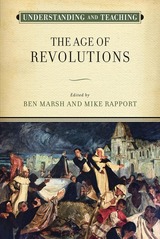 Understanding and Teaching the Age of Revolutions
Edited by Ben Marsh and Mike Rapport
University of Wisconsin Press, 2017 To learn about the "Age of Revolutions" in Europe and the Americas is to engage with the emergence of the modern world. In the late eighteenth and early nineteenth centuries, nations were founded, old empires collapsed, and new ones arose. Struggles for emancipation—whether from royal authority, colonial rule, slavery, or patriarchy—inspired both hopes and fears. This book, designed for university and secondary school teachers, provides up-to-date content and perspectives, classroom-tested techniques, innovative ideas, and an exciting variety of pathways to introduce students to this complex era of history.
The volume includes chapters on sources and methods for stimulating student debate and learning, including Tom Paine's Common Sense, the Haitian Declaration of Independence, and other key documents; role-playing games; visual arts and culture; and music, including opera and popular songs. Other chapters delve into specific themes, including revolution and riot, revolutionary terror, enlightenment, gender, slavery, nationalism, environment and climate, and the roles of politically excluded groups. Collectively, the contributions ensure a broad Atlantic scope, discussing the revolutions in Britain's North American colonies, Haiti, and Latin America, and European revolutions including France, Belgium, and the Netherlands.
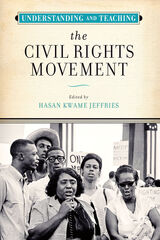 Understanding and Teaching the Civil Rights Movement
Hasan Kwame Jeffries
University of Wisconsin Press, 2019 The civil rights movement transformed the United States in such fundamental ways that exploring it in the classroom can pose real challenges for instructors and students alike. Speaking to the critical pedagogical need to teach civil rights history accurately and effectively, this volume goes beyond the usual focus on iconic leaders of the 1950s and 1960s to examine the broadly configured origins, evolution, and outcomes of African Americans' struggle for freedom. Essays provide strategies for teaching famous and forgotten civil rights people and places, suggestions for using music and movies, frameworks for teaching self-defense and activism outside the South, a curriculum guide for examining the Black Panther Party, and more.
Books in the popular Harvey Goldberg Series provide high school and introductory college-level instructors with ample resources and strategies for better engaging students in critical, thought-provoking topics. By allowing for the implementation of a more nuanced curriculum, this is history instruction at its best. Understanding and Teaching the Civil Rights Movement will transform how the United States civil rights movement is taught.
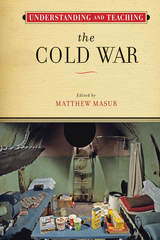 Understanding and Teaching the Cold War
Edited by Matthew Masur
University of Wisconsin Press, 2016 For nearly a half century, from 1945 to 1991, the United States and the Soviet Union maneuvered to achieve global hegemony. Each forged political alliances, doled out foreign aid, mounted cultural campaigns, and launched covert operations. The Cold War also deeply affected the domestic politics, cultures, and economic policies of the two superpowers, their client states, and other nations throughout the world.
Teaching the Cold War is both necessary and challenging. Understanding and Teaching the Cold War is designed to help collegiate and high school teachers navigate the complexity of the topic, integrate up-to-date research and concepts into their classes, and use strategies and tools that make this important history meaningful to students.
The volume opens with Matthew Masur’s overview of models for approaching the subject, whether in survey courses or seminars. Two prominent historians, Carole Fink and Warren Cohen, offer accounts of their experience as longtime scholars and teachers of the Cold War from European and Asian perspectives. Sixteen essays dig into themes including the origins and end of the conflict, nuclear weapons, diplomacy, propaganda, fear, popular culture, and civil rights, as well as the Cold War in Eastern Europe, Western Europe, East Asia, Africa, Latin America, and the nonaligned nations. A final section provides practical advice for using relevant, accessible primary sources to implement the teaching ideas suggested in this book.
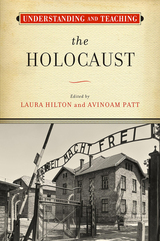 Understanding and Teaching the Holocaust
Edited by Laura Hilton and Avinoam Patt
University of Wisconsin Press, 2022 Few topics in modern history draw the attention that the Holocaust does. The Shoah has become synonymous with unspeakable atrocity and unbearable suffering. Yet it has also been used to teach tolerance, empathy, resistance, and hope. Understanding and Teaching the Holocaust provides a starting point for teachers in many disciplines to illuminate this crucial event in world history for students. Using a vast array of source materials—from literature and film to survivor testimonies and interviews—the contributors demonstrate how to guide students through these sensitive and painful subjects within their specific historical and social contexts.
Each chapter provides pedagogical case studies for teaching content such as antisemitism, resistance and rescue, and the postwar lives of displaced persons. It will transform how students learn about the Holocaust and the circumstances surrounding it.
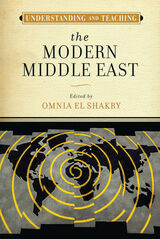 Understanding and Teaching the Modern Middle East
Edited by Omnia El Shakry
University of Wisconsin Press, 2020 Many students learn about the Middle East through a sprinkling of information and generalizations deriving largely from media treatments of current events. This scattershot approach can propagate bias and misconceptions that inhibit students’ abilities to examine this vitally important part of the world. Understanding and Teaching the Modern Middle East moves away from the Orientalist frameworks that have dominated the West’s understanding of the region, offering a range of fresh interpretations and approaches for teachers. The volume brings together experts on the rich intellectual, cultural, social, and political history of the Middle East, providing necessary historical context to familiarize teachers with the latest scholarship. Each chapter includes easy- to-explore sources to supplement any curriculum, focusing on valuable and controversial themes that may prove pedagogically challenging, including colonization and decolonization, the 1979 Iranian revolution, and the US-led “war on terror.” By presenting multiple viewpoints, the book will function as a springboard for instructors hoping to encourage students to negotiate the various contradictions in historical study.
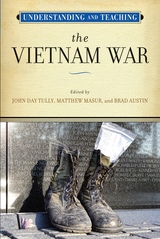 Understanding and Teaching the Vietnam War
Edited by John Day Tully, Matthew Masur, and Brad Austin
University of Wisconsin Press, 2013 Just as the Vietnam War presented the United States with a series of challenges, it presents a unique challenge to teachers at all levels. The war had a deep and lasting impact on American culture, politics, and foreign policy. Still fraught with controversy, this crucial chapter of the American experience is as rich in teachable moments as it is riddled with potential pitfalls—especially for students a generation or more removed from the events themselves. Addressing this challenge, Understanding and Teaching the Vietnam War offers a wealth of resources for teachers at the secondary and university levels. An introductory section features essays by eminent Vietnam War scholars George Herring and Marilyn Young, who reflect on teaching developments since their first pioneering classes on the Vietnam War in the early 1970s. A methods section includes essays that address specific methods and materials and discuss the use of music and film, the White House tapes, oral histories, the Internet, and other multimedia to infuse fresh and innovative dimensions to teaching the war. A topical section offers essays that highlight creative and effective ways to teach important topics, drawing on recently available primary sources and exploring the war's most critical aspects—the Cold War, decolonization, Vietnamese perspectives, the French in Vietnam, the role of the Hmong, and the Tet Offensive. Every essay in the volume offers classroom-tested pedagogical strategies and detailed practical advice. Taken as a whole, Understanding and Teaching the Vietnam War will help teachers at all levels navigate through cultural touchstones, myths, political debates, and the myriad trouble spots enmeshed within the national memory of one of the most significant moments in American history.
Honorable Mention, Franklin Buchanan Prize for Curricular Materials, Association for Asian Studies and the Committee for Teaching about Asia
Understanding and Teaching U.S. Lesbian, Gay, Bisexual, and Transgender History
Edited by Leila J. Rupp and Susan K. Freeman
University of Wisconsin Press, 2017 Taking into account recent historic changes, this second edition updates the essays on the Supreme Court, same-sex marriage, the Right, and trans history. Authors of several other essays have taken the opportunity to add new material and references where warranted.
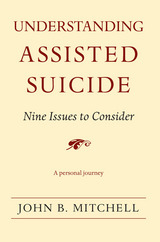 Understanding Assisted Suicide: Nine Issues to Consider
John B. Mitchell
University of Michigan Press, 2007 Assisted suicide remains one of the most emotionally charged and controversial topics—and the issue isn’t going away any time soon. As the baby boomer generation ages, many of us will watch as our parents—and ourselves—grow older, and wonder at the decisions that lie ahead. Understanding Assisted Suicide provides both a fresh take on this important topic and the framework for intelligent participation in the discussion. Uniquely, the author frames the issue using his own experience watching both his parents die, which led him to ask fundamental questions about death, dying, religion, and the role of medicine and technology in alleviating human suffering. In concerns about assisted suicide, each person’s “big picture” has largely been created out of picking and choosing from nine separate snapshot albums. Understanding this offers a perspective for quickly determining the sources of another’s opinion on assisted suicide, as well as the issues they are not considering. Most importantly, Understanding Assisted Suicide offers a clear, easy-to-traverse landscape over which those who are sincerely looking for their own answers can navigate. The “nine-issue structure” allows both careful exploration of separate issues and a view of the full spectrum of ideas involved.
Understanding Attitudes About War
Gregory G. Brunk
University of Pittsburgh Press, 1996
Choice 1997 Outstanding Academic Book
Why have some traditional cold warriors opposed involvement in Iraq and the former Yugoslavia, while many vocal critics of the Vietnam war supported the use of U.S. forces in Somalia, Haiti, and the Balkans? What do these debates tell us about American attitudes toward the use of military force to achieve foreign policy goals? The authors examine the ethical and moral underpinnings of U.S. international relations by exploring the attitudes of decision makers and foreign policy elites toward war. Their unique contribution is to bring together the various doctrines in the literature and to characterize them using behavioral methodologies, in an attempt to bring normative questions back into the mainstream of political science.
Understanding Buddhism
Nolan Pliny Jacobson
Southern Illinois University Press, 1986 Jacobson presents Buddhism unencumbered by Western categories and concepts, free from the cognitive bias, from the concept-oriented, definition-minded preoccupations inherited from the ancient Greeks. It is an interpretation of the central ideas that have characterized all forms of Buddhism for 25 centuries.
Understanding Business Contracts in China, 1949–1963
Richard M. Pfeffer
Harvard University Press, 1973 Richard Pfeffer, a political scientist, lawyer, and student of China, compares the Chinese theory of business contracts with those theories prevalent in the West, especially England and the United States. His book raises some central issues in the study of contracts.
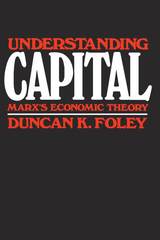 Understanding Capital: Marx’s Economic Theory
Duncan K. Foley
Harvard University Press, 1986 Understanding Capital is a brilliantly lucid introduction to Marxist economic theory. Duncan Foley builds an understanding of the theory systematically, from first principles through the definition of central concepts to the development of important applications. All of the topics in the three volumes of Capital are included, providing the reader with a complete view of Marxist economics.
Foley begins with a helpful discussion of philosophical problems readers often encounter in tackling Marx, including questions of epistemology, explanation, prediction, determinism, and dialectics. In an original extension of theory, he develops the often neglected concept of the circuit of capital to analyze Marx’s theory of the reproduction of capital. He also takes up central problems in the capitalist economy: equalization of the rates of profit (the “transformation problem”); productive and unproductive labor and the division of surplus value; and the falling rate of profit. He concludes with a discussion of the theory of capitalist crisis and of the relation of Marx’s critique of capitalism to his conception of socialism.
Through a careful treatment of the theory of money in relation to the labor theory of value, Foley clarifies the relation of prices to value and of Marx’s categories of analysis to conventional business and national income accounts, enabling readers to use Marx’s theory as a tool for the analysis of practical problems. The text is closely keyed throughout to the relevant chapters in Capital and includes suggestions for further reading on the topics discussed.
 Understanding Capitalism: Critical Analysis From Karl Marx to Amartya Sen
Douglas Dowd
Pluto Press, 2002 Understanding Capitalism combines the essays of seven leading economists, including Robin Hahnel and John Bellamy Foster, in a critical assessment of the relationship between economic thought and the dominance of capitalism. With analyses of economists ranging from Karl Marx to Amartya Sen, the book traces the growth of the capitalist system over the past two hundred years and how economic theory has, in fact, become capitalist ideology. Relating socio-economic and analytical histories to present-day economic policy, this is a thoroughly accessible work which makes an ideal introduction to the key thinkers in economic thought past and present.
Major economists and economic schools of thought are discussed in a chapter-by-chapter guide that covers Marx, Veblen, Gramsci, post-Keynesian theory, US institutionalists, Sweezy and the Monopoly Capital school, and recent Nobel Prize winner Amartya Sen. Contributors include Michael Lebowitz, Carl Boggs, Michael Keaney, Frederic Lee, John Bellamy Foster and Robin Hahnel, with an introduction by the editor, Douglas Dowd.
Understanding Chekhov: A Critical Study Of Chekhov'S Prose And Drama
Donald Rayfield
University of Wisconsin Press, 1999 Of all Russian writers, Chekhov is one of the best liked and most easily appreciated. Yet he is also one of the most elusive. Here Donald Rayfield reveals the layers of meaning on which the great dramatist's stories and plays are built. He examines his brief twenty-year creative life, from medical student supplementing his income by writing comic stories to his rapid rise as the father of twentieth-century drama and narrative prose. Understanding Chekhov is enriched by revelations from previously unexplored archival material, which deepen our understanding of Chekhov's sources, preoccupations, philosophy, and his relations with theater, with fellow writers, and with contemporary ideas.
 Understanding Chimpanzees
Paul Heltne
Harvard University Press, 1989 Thanks to classic studies such as Jane Goodall's The Chimpanzees of Gombe, we know a great deal about our closest primate relative, but much remains to be discovered about these endlessly fascinating family members. Even their genus name, Pan, taken from the Greek god who represented the spirit of nature, aptly characterizes their elusiveness, for, like nature, chimpanzee behavior is a "giant jigsaw puzzle," as Goodall puts it. This book, a definitive summary of current knowledge about chimpanzees and bonobos, is a significant step toward solving the puzzle.
Virtually every major chimpanzee specialist from around the world--Japan, the Netherlands, Great Britain, Africa, the United States--has contributed to this landmark volume. It contains important contributions by Japanese researchers who have been working in Africa for as many years as Goodall and whose work is not readily accessible in the West.
Understanding Chimpanzees examines a wide range of topics, including social behavior and ecology in the field, the rich variety of cultural traditions between one population and another in Africa and elsewhere, behavior in captivity, and the incredible cognitive abilities of chimpanzees in language acquisition laboratories. Of special interest is the strong coverage of bonobos (pygmy chimpanzees). The authors also concentrate on conveying a better appreciation of chimpanzee intelligence through the description of various ongoing investigations, particularly ones that examine signing interactions, vocabulary testing and modulation, and symbol acquisition.
In addition to the Foreword, Jane Goodall contributes a review of her own work at Gombe, her proposal for a "ChimpanZoo" project, and an update on the status of conservation in Tanzania. The book contains a major section on chimpanzee conservation in captivityand in the wild, documenting the threat to chimpanzee habitat and survival.
This work draws from a broad range of disciplines, including ethology, psychology, anatomy, biology, anthropology, conservation, and ecology and will attract readers pursuing ideas in all these fields. Over 100 photographs and drawings illustrate the text, which has been carefully assembled and edited by Paul G. Heltne, Director of the Chicago Academy of Sciences, and Linda A. Marquardt, the editor of Science Learning in the Informal Setting.
 Understanding Contemporary Ireland
Edited by Brendan Bartley and Rob Kitchin
Pluto Press, 2006 This book provides a detailed, student-friendly overview of Ireland in the twenty-first century and the remarkable economic and social transformations that have occurred since the late 1980s.
The "Celtic Tiger" phenomenon has made Ireland the focus of much attention in recent years. Other countries have openly declared that they want to follow the Irish economic and social model. Yet there is no book that gives a comprehensive, spatially-informed analysis of the Irish experience. This book fills that gap.
Divided into four parts—planning and development, the economy, the political landscape, and population and social issues—the chapters provide an explanation of a particular aspect of Ireland and Irish life accompanied by illustrative material. In particular, the authors reveal how the transformations that have occurred are uneven and unequal in their effects across the country and highlight the challenges now facing Irish society and policy-makers.
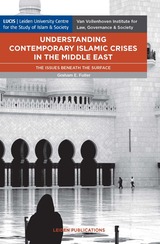 Understanding Contemporary Islamic Crises in the Middle East: The Issues Beneath the Surface
Graham E. Fuller
Leiden University Press, 2017 "Over the past decade the Middle East has undergone huge geopolitical shifts, including widespread war and violence, the collapse of numerous regimes, a changing American role, a restored Russian presence, and the emergence of ISIS. In this book Graham Fuller addresses the character of these shifts and how they will shape the future of this tumultuous region as well as the role of major outside powers. Fuller firstly focuses on Shari’a law and its appropriate role, if any, in the politics and governance of the Muslim world, thereby further exploring why identity may be the most important factor in examining Middle East politics today. Next he addresses the current Shi’ite-Sunni conflict, not simply by scrutinizing the essentially theological approach found in most Western analysis but also through better understanding the many more extra-religious factors behind the scenes. Finally the author claims that the appearance of ISIS has stretched the perennial phenomenon of Political Islam to the extreme. What, then, does ISIS imply for the future of the Middle East and for Islamist movements in general, not to mention for Muslims’ understanding of Islam itself?"
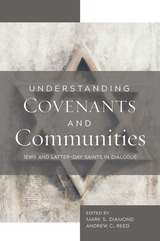 Understanding Covenants and Communities: Jews and Latter-Day Saints in Dialogue
Mark Diamond
Central Conference of American Rabbis, 2020 A joint publication between CCAR Press and Brigham Young University.
Interfaith dialogues of understanding are valuable both for challenging individuals to articulate their beliefs and practices in a careful way and for deepening connections between people of different faiths. The Jewish and Latter-day Saint communities have at times been at odds, yet they share a number of significant historical and communal bonds. Understanding Covenants and Communities comes out of the Jewish--Latter-day Saint Academic Dialogue Project, a groundbreaking interfaith encounter between these two religious communities. The fruit of five conferences held semiannually since 2016, the volume addresses such themes as theological foundations, sacred scriptures, lived experience and worship, and culture and politics. Readers will emerge with a deeper understanding of the Jewish and Latter-day Saint traditions and how the two faith communities can engage in a meaningful dialogue.
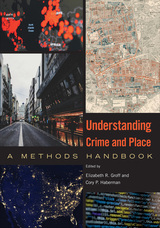 Understanding Crime and Place: A Methods Handbook
Edited by Elizabeth R. Groff and Cory P. Haberman
Temple University Press, 2023 Place has become both a major field of criminological study as well as an important area for policy development. Capturing state of the art crime and place research methods and analysis, Understanding Crime and Place is a comprehensive Handbook focused on the specific skills researchers need. The editors and contributors are scholars who have been fundamental in introducing or developing a particular method for crime and place research. Understanding Crime and Place is organized around the scientific process, introducing major crime and place theories and concepts, discussions of data and data collection, core spatial data concepts, as well as statistical and computational techniques for analyzing spatial data and place-based evaluation. The lessons in the book are supplemented by additional instructions, examples, problems, and datasets available for download. Conducting place-based research is an emerging field that requires a wide range of cutting-edge methods and analysis techniques that are only beginning to be widely taught in criminology. Understanding Crime and Place bridges that gap, formalizes the discipline, and promotes an even greater use of place-based research.
Contributors: Martin A. Andresen, Matthew P J Ashby, Eric Beauregard, Wim Bernasco, Daniel Birks, Hervé Borrion, Kate Bowers, Anthony A. Braga, Tom Brenneman, David Buil-Gil, Meagan Cahill, Stefano Caneppele, Julien Chopin, Jeffrey E. Clutter, Toby Davies, Hashem Dehghanniri, Jillian Shafer Desmond, Beidi Dong, John E. Eck, Miriam Esteve, Timothy C. Hart, Georgia Hassall, David N. Hatten, Julie Hibdon, James Hunter, Shane D. Johnson, Samuel Langton, YongJei Lee, Ned Levine, Brian Lockwood, Dominique Lord, Nick Malleson, Dennis Mares, David Mazeika, Lorraine Mazerolle, Asier Moneva, Andrew Newton, Bradley J. O’Guinn, Ajima Olaghere, Graham C. Ousey, Ken Pease, Eric L. Piza, Jerry Ratcliffe, Caterina G. Roman, Stijn Ruiter, Reka Solymosi, Evan T. Sorg, Wouter Steenbeek, Hannah Steinman, Ralph B. Taylor, Marie Skubak Tillyer, Lisa Tompson, Brandon Turchan, David Weisburd, Brandon C. Welsh, Clair White, Douglas J. Wiebe, Pamela Wilcox, David B. Wilson, Alese Wooditch, Kathryn Wuschke, Sue-Ming Yang, and the editors.
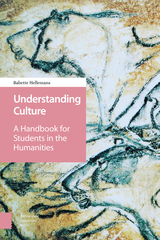 Understanding Culture: A Handbook for Students in the Humanities
Babette Hellemans
Amsterdam University Press, 2017 This pioneering textbook explores the theoretical background of cultural variety, both in past and present. How is it possible to study 'culture' when the topic covers the arts, literature, movies, history, sociology, anthropology and gender studies? 'Understanding Culture' examines the evolution of a concept with varying meanings depending on changing norms. Offering a long-duration analysis of the relationship between culture and nature, this book looks at the origins of studying culture from an international perspective.
Using examples from the several scholarly traditions in the practice of studying culture, the book is a key introduction to the area. It identifies the history of interpreting culture as a meeting point between the long-standing historical investigation of 'humanism' and 'postmodernism' and is a comprehensive resource for those who wish to further their engagement with culture as both a historical and contemporary phenomenon.
 Understanding Cyber Conflict: Fourteen Analogies
George Perkovich and Ariel E. Levite, Editors
Georgetown University Press Cyber weapons and the possibility of cyber conflict—including interference in foreign political campaigns, industrial sabotage, attacks on infrastructure, and combined military campaigns—require policymakers, scholars, and citizens to rethink twenty-first-century warfare. Yet because cyber capabilities are so new and continually developing, there is little agreement about how they will be deployed, how effective they can be, and how they can be managed. Written by leading scholars, the fourteen case studies in this volume will help policymakers, scholars, and students make sense of contemporary cyber conflict through historical analogies to past military-technological problems. The chapters are divided into three groups. The first—What Are Cyber Weapons Like?—examines the characteristics of cyber capabilities and how their use for intelligence gathering, signaling, and precision striking compares with earlier technologies for such missions. The second section—What Might Cyber Wars Be Like?—explores how lessons from several wars since the early nineteenth century, including the World Wars, could apply—or not—to cyber conflict in the twenty-first century. The final section—What Is Preventing and/or Managing Cyber Conflict Like?—offers lessons from past cases of managing threatening actors and technologies.
 Understanding Dante
John A. Scott
University of Notre Dame Press, 2004 "This is the summa of a lifetime's work on Dante by one of the leading Dantisti in the English-speaking world. Written in perfectly lucid, often vigorous prose, it is a nearly perfect assessment of the status quaestionis in Dante studies." —Piero Boitani, University of Rome, "La Sapienza"
"Dante and Shakespeare divide the modern world between them; there is no third." Understanding Dante attempts to explain and justify T. S. Eliot's bold claim. John Scott offers readers at all levels a critical overview of Dante's writings: five chapters deal with his New Life of love and poetry (Vita Nova), the Banquet of knowledge (Convivio), his Latin treatise on language and poetics (De Vulgari Eloquentia), Italian lyrics (Rime), and his blueprint for world government (Monarchia). The next five chapters concentrate on Dante's masterpiece, the Comedy: its structure, Dante's worldview (still relevant today), and the Comedy examined as a poem. Much has been written on Dante's moral, political, and religious ideas; important as these are, however, such discussions are perforce limited. It is above all as a work of poetry that the Divine Comedy maintains its appeal and fascination to readers of all backgrounds and beliefs.
Firmly grounded in the latest advances of Dante scholarship, Understanding Dante offers an original and uniquely detailed, global analysis of Dante as poet of the Comedy that will be welcomed by those who read the poem in translation as well as by those who study the original Italian text. At the same time, Scott–s book will be welcome for its rich and insightful analysis of the whole corpus of Dante's writings, as well as Scott’s mastery of the vast sea of critical literature in various languages. Scott bridges the gap that often exists between Dante studies in English-speaking countries and the great tradition of Dante scholarship in the poet's homeland. No work in English about the great Italian poet can rival Understanding Dante's scope in both depth and breadth of close reading and critical vision.
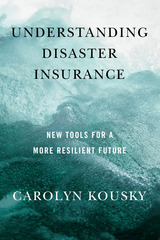 Understanding Disaster Insurance: New Tools for a More Resilient Future
Carolyn Kousky
Island Press, 2022 The frequency and intensity of natural disasters—such as wildfires, hurricanes, floods, and storms—is on the rise, threatening our way of life and our livelihoods. Managing this growing risk will be central to economic and social progress in the coming decades. Insurance, an often confusing and unpopular tool, will be critical to successfully emerging from the effects of these crises. Its traditional role is to protect us from unforeseen and unanticipated risk, but as currently structured, insurance cannot adequately respond to these types of threats. How can we improve insurance to provide consistent and sufficient help following all disasters? How do we use insurance not just to help us recover, but also to help us prevent disasters in the first place? And how can insurance help us achieve broader social and environmental goals?
Understanding Disaster Insurance provides an accessible introduction to the complexities—and exciting possibilities—of risk transfer markets in the U.S. and around the world. Carolyn Kousky, a leading researcher on disaster risk and insurance, explains how traditional insurance markets came to be structured and why they fall short in meeting the needs of a world coping with climate change. She then offers realistic, yet hopeful, examples of new approaches. With examples ranging from individual entrepreneurs to multi-country collaborations, she shows how innovative thinking and creative applications of insurance-based mechanisms can improve recovery outcomes for people and their communities. She also explores the role of insurance in supporting policy goals beyond disaster recovery, such as nature-positive approaches for larger environmental impact. The book holds up the possibility that new risk transfer markets, brought to scale, could help create more equitable and sustainable economies.
Insurance and risk transfer markets can be a powerful tool for adapting to climate change, yet they are frequently misunderstood. Many find insurance confusing or even problematic and ineffective. Understanding Disaster Insurance is a useful guidebook for policymakers, innovators, students, and other decision makers working to secure a resilient future—and anyone affected by wind, fire, rain, or flood.
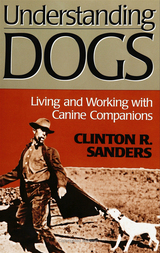 Understanding Dogs
Clinton R. Sanders
Temple University Press, 1999 Can people have authentic social relationships with speechless animals? What does your dog mean to you, your understanding of yourself, and your perceived and actual relationships with other s and the world? What do you mean to your dog?
In Understanding Dogs, sociologist and faithful dog companion Clinton R. Sanders explores the day-to-day experiences of living and working with domestic dogs. Based on a decade of research in veterinary offices and hospitals, dog guide training schools, and obediences classes -- and colored with his personal experiences and observations at and outside home with his own canine companions -- Sanders's book examines how everyday dog owners come to know their animal companions as thinking, emotional, and responsive individuals.
Linking animal companionship with social as well as personal identity, Understanding Dogs uses detailed ethnographic data in viewing human and animal efforts to understand, manipulate, care for, and interact with each other. From nineteenth-century disapproval of what was seen as irresponsibly indulgent pet ownership among the poor to Bill Clinton's caring and fun-loving image and populist connection to the "common person" as achieved through his labrador companion Buddy, Sanders looks at how dogs serve not only as social facilitators but also as adornments to social identity. He also reveals how, while we often strive to teach and shape our dogs' behavior, dogs often teach us to appreciate with more awareness a nourishing meal, physical warmth, a walk in the woods, and the simple joys of the immediate moment.
Sanders devotes chapters to the specialized work of guide dog trainers; the problems and joys experienced by guide dog owners; the day-to-day work of veterinarians dealing with the healing, death, and euthanizing of their animal patients; and the everyday interactions, assumptions, and approaches of people who choose, for various reasons and in various ways, to spend their lives in the company of dogs.
Understanding Dogs will interest those who live and work with animals as well as those studying the sociology of human-animal interactions.
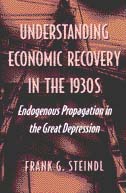 Understanding Economic Recovery in the 1930s: Endogenous Propagation in the Great Depression
Frank G. Steindl
University of Michigan Press, 2003 Although much has been published about the economic downturn that began in mid-1929, very little has been written about the recovery from this cataclysmic period. Long, tortuous, and uneven as it was, there was indeed a recovery. In this important book, Steindl explores the much-neglected topic of the recovery, concentrating in particular on the macroeconomic developments responsible for the move back to a pre-Depression level economy.
Providing strong evidence for the role of the quantity of money in the revitalization, the author ultimately concludes that the seemingly robust monetary explanation of the recovery is deficient, as is any that relies principally on aggregate demand impulses. An accurate understanding of this phenomenon must account for the inherent tendency of the economy to revert to its long-run high employment trend.
Frank G. Steindl is Regents Professor of Economics and Ardmore Professor of Business Administration, Oklahoma State University.
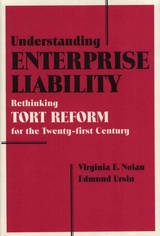 Understanding Enterprise Liability: Rethinking Tort Reform for the Twenty-First Century
Virginia Nolan and Edmund Ursin
Temple University Press, 1994 In recent years critics have assailed the cost, inefficiency, and unfairness of American tort law, including products liability and medical malpractice. Yet victims of accidental injury who look to the tort system for deserved compensation often find it a formidable obstacle. Those who seek to reform tort law find legislatures, particularly the United States Congress, paralyzed by the clash of powerful special interest groups. Understanding Enterprise Liability sheds new light on the raging tort reform debate by challenging its fundamental assumptions. Offering historical insights and fresh perspectives on the politics and possibilities for sensible reform, Virginia Nolan and Edmund Ursin pragmatically assess alternative routes to a workable, balanced, and equitable system of compensation for personal injury. They offer a specific proposal, based on the precedent of strict products liability that incorporates the insights of no-fault compensation plan scholarship to create an enterprise liability doctrine that should appeal to courts and to tort reformers.
Understanding Environmental Administration and Law
Susan J. Buck
Island Press, 1996 More than any other field of public administration, environmental administration is defined by its legal content. Federal legislation has a direct and immediate impact on state and federal bureaucrats, and citizen groups must constantly adjust to changing standards for environmental protection and regulation. In Understanding Environmental Administration and Law, Susan J. Buck examines the use of environmental law by exploring the policy process through which such law is made, the political environment in which it is applied, and the statutory and case laws that are critical to working within the regulatory system. The book provides an analytic framework for the legal context of environmental administration and familiarizes readers with the development and implementation of the federal regulatory structure. A revised and expanded edition of this book was published by Island Press in 1996.
 Understanding Environmental Administration and Law
Susan J. Buck; Foreword by R.W. Behan
Island Press, 1991 More than any other field of public administration, environmental administration is defined by its legal content. Federal legislation has a direct and immediate impact on state and federal bureaucrats, and citizen groups must constantly adjust to changing standards for environmental protection and regulation. In Understanding Environmental Administration and Law, Susan J. Buck examines the use of environmental law by exploring the policy process through which such law is made, the political environment in which it is applied, and the statutory and case laws that are critical to working within the regulatory system. The book provides an analytic framework for the legal context of environmental administration and familiarizes readers with the development and implementation of the federal regulatory structure. A revised and expanded edition of this book was published by Island Press in 1996.
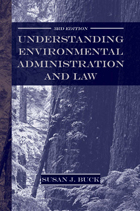 Understanding Environmental Administration and Law, 3rd Edition
Susan J. Buck
Island Press, 2006 Understanding Environmental Administration and Law provides an engaging, introductory overview of environmental policy. Author Susan J. Buck explores the process through which policy is made, the political environment in which it is applied, and the statutory and case laws that are critical to working within the regulatory system. This revised and expanded third edition adds case studies that help bring the subject to life and includes new material on: - the Bush Administration and its approach to administering environmental laws
- the continuing evolution of environmentalism and the changing role of environmental regulation in the United States
- the development and implementation of environmental agreements at the international level
- the impacts and implications of globalization
Understanding Environmental Administration and Law provides a framework for understanding the law as a managerial tool.
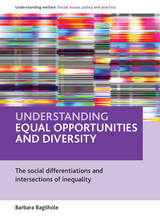 Understanding equal opportunities and diversity: The social differentiations and intersections of inequality
Barbara Bagihole
Bristol University Press, 2009 This is a seminal time for Equal Opportunities and Diversity (EO&D) in the UK: the three existing Equality Commissions have been amalgamated into the Commission for Equality and Human Rights and a new Single Equality Act was published in 2010. The concepts of EO&D now incorporate gender, ethnicity, disability, sexual orientation, religion and belief and age inequalities. For the future, the problems of separate and relative deprivation, and conflicting experiences and interests, must be tackled, both between and within different categories of disadvantage. These different, complex and sometimes contradictory strands in legislation, policy and practice need to be analysed and understood in order to facilitate genuine social change. This book challenges the official discourse that shapes the debates on EO&D at national, regional and European level. The book will be a key text for students and researchers of EO&D in criminology, social policy, sociology, women's studies, gender studies, public administration, business studies, economics and management and industrial relations, at both undergraduate and postgraduate courses. It will also be of interest to EO&D professionals and policy makers in public and private sector organisations.
Understanding Europe (The Works of Christopher Dawson)
Christopher Dawson
Catholic University of America Press, 2009 In Understanding Europe, Dawson expresses a desire for Europe to rediscover and renew its foundational Christian sources in order to recover a deeper sense of integrity.
 Understanding Film: Marxist Perspectives
Edited by Mike Wayne
Pluto Press, 2005 "Marxism and Film share at least one thing in common: they are both interested in the masses."
From the introduction
Film remains one of the most dominant cultural forms in the world today. Crossing classes and cultures, it permeates many aspects of our consciousness. In film, perhaps more than any other medium, we can read the politics of time and place, past and present. The history of Marxism has intersected with film in many ways and this book is a timely reminder of the fruits of that intersection, in film theory and film practice. Marxist film theory returns to film studies some of the key concepts which make possible a truly radical, political understanding of the medium and its place both within capitalism and against it. This book shows how questions of ideology, technology and industry must be situated in relation to class – a category which academia is distinctly uncomfortable with. It explores the work of some of the key theorists who have influenced our understanding of film, such as Adorno, Althusser, Benjamin, Brecht, Gramsci, Jameson and others. It shows how films must be situated in their social and historical contexts, whether Hollywood, Russian, Cuban, Chinese or North Korean cinema. The authors explore the political contradictions and tensions within dominant cinema and discuss how Marxist filmmakers have pushed the medium in new and exciting directions.
 Understanding Global Trade
Elhanan Helpman
Harvard University Press, 2011 Global trade is of vital interest to citizens as well as policymakers, yet it is widely misunderstood. This compact exposition of the market forces underlying international commerce addresses both of these concerned groups, as well as the needs of students and scholars. Although it contains no equations, it is almost mathematical in its elegance, precision, and power of expression.
Understanding Global Trade provides a thorough explanation of what shapes the international organization of production and distribution and the resulting trade flows. It reviews the evolution of knowledge in this field from Adam Smith to today as a process of theoretical modeling, accumulation of new empirical data, and then revision of analytical frameworks in response to evidence and changing circumstances. It explains the sources of comparative advantage and how they lead countries to specialize in making products which they then sell to other countries. While foreign trade contributes to the overall welfare of a nation, it also creates winners and losers, and Helpman describes mechanisms through which trade affects a country's income distribution.
The book provides a clear and original account of the revolutions in trade theory of the 1980s and the most recent decade. It shows how scholars shifted the analysis of trade flows from the sectoral level to the business-firm level, to elucidate the growing roles of multinational corporations, offshoring, and outsourcing in the international division of labor. Helpman’s explanation of the latest research findings is essential for an understanding of world affairs.
Understanding Health and Social Care
Jon Glasby
Bristol University Press, 2017 Austerity measures have substantially changed the landscape for social and health care in the United Kingdom. Fully updated to reflect key developments under the Coalition and subsequent governments, this third edition of Understanding Health and Social Care provides a current guide to the increasingly important partnership between health and social care workers. Jon Glasby combines practical information about welfare systems with key theoretical material to present a complete picture of these overlapping fields with respect to a range of adult service user groups. Drawing on user-focused case studies and reinforcing his lessons with reflective exercises and suggestions for further reading, he looks at key themes such as partnership working and integrated care, independent living and disability, discrimination, user involvement, and support for caregivers.
Understanding Illuminated Manuscripts: A Guide to Technical Terms, Revised Edition
Michelle Brown
J. Paul Getty Trust, The, 2018 What is a historiated initial? What are canon tables? What is a drollery? This revised edition of Understanding Illuminated Manuscripts: A Guide to Technical Terms offers definitions of the key elements of illuminated manuscripts, demystifying the techniques, processes, materials, nomenclature, and styles used in the making of these precious books.
Updated to reflect current research and technologies, this beautifully illustrated guide includes images of important manuscript illuminations from the collection of the J. Paul Getty Museum and beyond. Concise, readable explanations of the technical terms most frequently encountered in manuscript studies make this portable volume an essential resource for students, scholars, and readers who wish a deeper understanding and enjoyment of illuminated manuscripts and medieval book production.
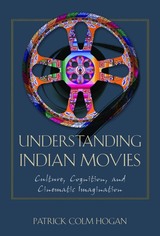 Understanding Indian Movies: Culture, Cognition, and Cinematic Imagination
By Patrick Colm Hogan
University of Texas Press, 2008 Indian movies are among the most popular in the world. However, despite increased availability and study, these films remain misunderstood and underappreciated in much of the English-speaking world, in part for cultural reasons. In this book, Patrick Colm Hogan sets out through close analysis and explication of culturally particular information about Indian history, Hindu metaphysics, Islamic spirituality, Sanskrit aesthetics, and other Indian traditions to provide necessary cultural contexts for understanding Indian films. Hogan analyzes eleven important films, using them as the focus to explore the topics of plot, theme, emotion, sound, and visual style in Indian cinema. These films draw on a wide range of South Asian cultural traditions and are representative of the greater whole of Indian cinema. By learning to interpret these examples with the tools Hogan provides, the reader will be able to take these skills and apply them to other Indian films. But this study is not simply culturalist. Hogan also takes up key principles from cognitive neuroscience to illustrate that all cultures share perceptual, cognitive, and emotional elements that, when properly interpreted, can help to bridge gaps between seemingly disparate societies. Hogan locates the specificity of Indian culture in relation to human universals, and illustrates this cultural-cognitive synthesis through his detailed interpretations of these films. This book will help both scholars and general readers to better understand and appreciate Indian cinema.
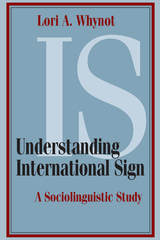 Understanding International Sign: A Sociolinguistic Study
Lori A. Whynot
Gallaudet University Press, 2016 In Understanding International Sign, Lori A. Whynot examines International Sign (IS) to determine the extent to which signers from different countries comprehend it. She focuses exclusively on expository lecture IS used in conference settings and presents the first empirical research on its effectiveness for communicating rich information to diverse audience members.
International Sign is regarded as a lingua franca that is employed by deaf people to communicate with other deaf people who do not share the same conventionalized local sign language. Contrary to widely-held belief, sign languages are not composed of a unified system of universal gestures—rather, they are distinctly different, and most are mutually unintelligible from one another. The phenomenon of IS has emerged through increased global interaction during recent decades, driven by a rise in the number of international conferences and events and by new technologies that allow for enhanced global communication. IS is gaining acceptance for providing communicative access to conference audience members who do not have knowledge of the designated conference languages, and it is being recruited for use due to the prohibitive expense of providing interpreting services in numerous different sign languages. However, it is not known how well audience members understand IS, and it may actually limit equal access to the interpreted information.
Whynot compares IS to native sign languages and analyzes the distribution of linguistic elements in the IS lexicon and their combined effect on comprehension. Her findings indicate that audiences with diverse sign languages understand much less of IS presentations than has been previously assumed. Whynot’s research has crucial implications for expository IS usage, training, and interpreting, and it sheds light on the strengths and weaknesses inherent in cross-linguistic, signed contact settings.
 Understanding Korean Webtoon Culture: Transmedia Storytelling, Digital Platforms, and Genres
Dal Yong Jin
Harvard University Press, 2022 Webtoons—a form of comic that are typically published digitally in chapter form—are the latest manifestation of the Korean Wave of popular culture that has increasingly caught on across the globe, especially among youth. Originally distributed via the Internet, they are now increasingly distributed through smartphones to ravenous readers in Korea and around the world.
The rise of webtoons has fundamentally altered the Korean cultural market due to the growth of transmedia storytelling—the flow of a story from the original text to various other media platforms, such as films, television, and digital games—and the convergence of cultural content and digital technologies. Fans can enjoy this content anytime and anywhere, either purely as webtoons or as webtoon-based big-screen culture.
Understanding Korean Webtoon Culture analyzes webtoons through the lens of emerging digital cultures and discusses relevant cultural perspectives by combining two different, yet connected approaches, political economy and cultural studies. The book demonstrates the dynamics between structural forces and textual engagement in global media flows, and it illuminates snack-culture and binge-reading as two new forms of digital culture that webtoon platforms capitalize on to capture people’s shifting media consumption.
 Understanding Korean Webtoon Culture: Transmedia Storytelling, Digital Platforms, and Genres
Dal Yong Jin
Harvard University Press, 2022 Webtoons—a form of comic that are typically published digitally in chapter form—are the latest manifestation of the Korean Wave of popular culture that has increasingly caught on across the globe, especially among youth. Originally distributed via the Internet, they are now increasingly distributed through smartphones to ravenous readers in Korea and around the world.
The rise of webtoons has fundamentally altered the Korean cultural market due to the growth of transmedia storytelling—the flow of a story from the original text to various other media platforms, such as films, television, and digital games—and the convergence of cultural content and digital technologies. Fans can enjoy this content anytime and anywhere, either purely as webtoons or as webtoon-based big-screen culture.
Understanding Korean Webtoon Culture analyzes webtoons through the lens of emerging digital cultures and discusses relevant cultural perspectives by combining two different, yet connected approaches, political economy and cultural studies. The book demonstrates the dynamics between structural forces and textual engagement in global media flows, and it illuminates snack-culture and binge-reading as two new forms of digital culture that webtoon platforms capitalize on to capture people’s shifting media consumption.
Understanding Kubrick's 2001: A Space Odyssey: Representation and Interpretation
Edited by James Fenwick
Intellect Books, 2018 Scholars have been studying the films of Stanley Kubrick for decades. This book, however, breaks new ground by bringing together recent empirical approaches to Kubrick with earlier, formalist approaches to arrive at a broader understanding of the ways in which Kubrick’s methods were developed to create the unique aesthetic creation that is 2001: A Space Odyssey. As the fiftieth anniversary of the film nears, the contributors explore its still striking design, vision, and philosophical structure, offering new insights and analyses that will give even dedicated Kubrick fans new ways of thinking about the director and his masterpiece.
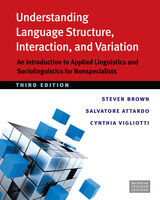 Understanding Language Structure, Interaction, and Variation, Third Ed.: An Introduction to Applied Linguistics and Sociolinguistics for Nonspecialists
Steven Brown, Salvatore Attardo, and Cynthia Vigliotti
University of Michigan Press, 2014 Understanding Language Structure, Interaction, and Variation is an introduction to the study of language and applied linguistics for students who have had a minimum of exposure to the discipline of linguistics. Using clear, easy-to-understand explanations and examples, this text avoids the in-depth theoretical coverage found in texts written for those who specialize in linguistics or SLA. As a result, this book is perfect for students whose chosen fields require them to be acquainted with the ways language works--such as future teachers, psychologists, sociologists, and anthropologists--but who do not intend to become linguists. The text is also suitable for English or ESL/EFL teachers who need a reference volume about various aspects of language, particularly as it applies to teaching. Each chapter includes research projects and further readings. The third edition of Understanding Language Structure, Interaction, and Variation features a new design and reorganization. All content has been significantly revised and updated. Each chapter also debunks a common language myth and now incorporates exercises that, for prior editions, appeared in a supplementary workbook. Extra practice for students is available online, as is additional materials for teachers. (There is no workbook for the third edition.)
Understanding "Les Fleurs du Mal": Critical Readings
William J. Thompson
Vanderbilt University Press, 1997 Surprisingly, there are few book-length studies available that approach the poems in Charles Baudelaireís collection on an individual basis. Understanding "Les Fleurs du Mal" fills this gap by providing students and serious readers with clear, scholarly "explications" to many of the most widely read of Baudelaire's poems.
 Understanding Long-Run Economic Growth: Geography, Institutions, and the Knowledge Economy
Edited by Dora L. Costa and Naomi R. Lamoreaux
University of Chicago Press, 2011 The conditions for sustainable growth and development are among the most debated topics in economics, and the consensus is that institutions matter greatly in explaining why some economies are more successful than others over time. Probing the long-term effects of early colonial differences on immigration policy, land distribution, and financial development in a variety of settings, Understanding Long-Run Economic Growth explores the relationship between economic conditions, growth, and inequality, with a focus on how the monopolization of resources by the political elite limits incentives for ordinary people to invest in human capital or technological discovery. Among the topics discussed are the development of credit markets in France, the evolution of transportation companies in the United Kingdom and the United States, and the organization of innovation in the United States.
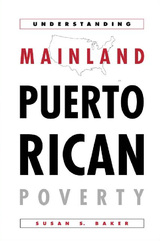 Understanding Mainland Puerto Rican Pov
Susan Baker
Temple University Press, 2002 For too long the study of impoverished Puerto Ricans living in the fifty states has been undermined by the use of broad generalizations. Puerto Ricans have been statistically grouped with all Latinos, studied with models developed for understanding African-American life, and written about as if New York's Puerto Rican community was the only such community worthy of detailed study. This book changes all that. In this important new work, Susan Baker looks beyond the traditional models and rewrites the origins, current state, and reasons behind Puerto Rican poverty.The book tells the story of how Puerto Ricans have left the Rustbelt cities to return to the island or to seek job opportunities elsewhere. Those left behind are predominantly poor women with dependents who live in segregated neighborhoods with little chance of finding low-skilled jobs because of competition from non-citizen, non-politicized workers.In her alternative explanation, the author presents data from across the country and puts forth an explanation that is grounded in Puerto Rican history and sensitive not only to the interconnectedness of the island and mainland population, but also the increasing distress faced by Puerto Rican women and the sad truth that Puerto Rican citizenship in this country is a second class one.
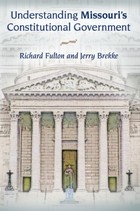 Understanding Missouri's Constitutional Government
Richard Fulton and Jerry Brekke
University of Missouri Press, 2010 In the study of American government, analysis of state governments is often neglected in favor of concentration on the national system. Certainly in-depth knowledge of our country’s constitutional structure is critical to an understanding of American government, but this continuing inattention to the complexities of state governments has left a hole in the literature available to help us understand the role state governments play in the federal system. State constitutions served as guides for the construction of the U.S. Constitution, but they have their own character and significance. As such, it is imperative that teachers, students, and historians fully understand the creation, administration, and adjudication of state governments. Understanding Missouri’s Constitutional Government presents a case study in the foundations of state governments. The book provides a sweeping look at the constitutional foundations of the processes of Missouri government. Authors Richard Fulton and Jerry Brekke place Missouri within the context of our larger federal system while using the state’s constitution as a touchstone for the discussion of each element of state government. Understanding Missouri’s Constitutional Government has a dual framework specifically designed to enhance the reader’s learning experience. First, the essential elements of government outlined in the constitution are introduced, and then analysis and interpretation of each of the document’s articles is covered. This organization permits readers to build an understanding of a particular element—for example, the legislature—by learning its fundamental organization, processes, and purposes in a straightforward manner. After gaining that primary perspective, the reader can use the formal analysis in the second section to explore interpretations of each article. Not only helpful to the general reader, this two-part structure makes the text especially useful in courses on American government, state and local governments, and particularly Missouri government and constitution.
In short, Understanding Missouri’s Constitutional Government is an approachable, valuable exposition on Missouri government as reflected in the day-to-day operations outlined in the Missouri constitution. It fills a significant gap in the literature on the interpretation, use, and operation of state constitutions. Since Missouri law dictates that all levels of education should teach government and constitution at the national and state levels, this book will be an indispensable resource for educators while serving as a valuable reference for journalists and public officials in the state.
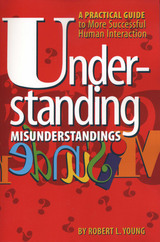 Understanding Misunderstandings: A Practical Guide to More Successful Human Interaction
By Robert L. Young
University of Texas Press, 1999 Have you ever meant one thing, but said another? Reacted angrily when no offense was intended? Wished that the earth would open up and swallow you? Understanding Misunderstandings will help you get out and stay out of these difficulties. Robert L. Young explains why many common types of misunderstandings arise and how they can be avoided or corrected. In the first part of the book, he breaks the process of misunderstanding down into stages, showing how it can occur when we misspeak, mishear, misinterpret, or react in inappropriate ways. In the second part, he expertly analyzes the kinds of misunderstandings that can arise from differences in culture, social class, race and ethnicity, and gender. Real-life examples illustrate many of the problems and solutions he describes. Because misunderstanding can destroy friendships and marriages, wreck careers, and lead to clashes between whole segments of society, understanding and diffusing it is of the utmost importance. This reader-friendly book provides the practical guidance to do just that. Educators, business people, psychologists, parents—in fact, everyone who interacts with other people—will benefit from it.
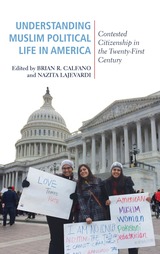 Understanding Muslim Political Life in America: Contested Citizenship in the Twenty-First Century
Brian R. Calfano
Temple University Press, 2019 “Muslim Americans are at a political crossroads,” write editors Brian Calfano and Nazita Lajevardi. Whereas Muslims are now widely incorporated in American public life, there are increasing social and political pressures that disenfranchise them or prevent them from realizing the American Dream. Understanding Muslim Political Life in America brings clarity to the social, religious, and political dynamics that this diverse religious community faces. In this timely volume, leading scholars cover a variety of topics assessing the Muslim American experience in the post-9/11 and pre-Trump era, including law enforcement; identity labels used in Muslim surveys; the role of gender relations; recognition; and how discrimination, tolerance, and politics impact American Muslims. Understanding Muslim Political Life in America offers an update and reappraisal of what we know about Muslims in American political life. The editors and contributors also consider future directions and important methodological questions for research in Muslim American scholarship. Contributors include Matt A. Barreto, Alejandro Beutel, Tony Carey, Youssef Chouhoud, Karam Dana, Oz Dincer, Rachel Gillum, Kerem Ozan Kalkan, Anwar Manje, Valerie Martinez-Ebers, Dani McLaughlan, Melissa R. Michelson, Yusuf Sarfati, Ahmet Tekelioglu, Marianne Marar Yacobian, and the editors.
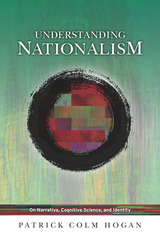 Understanding Nationalism: On Narrative, Cognitive Science, and Identity
Patrick Colm Hogan
Ohio State University Press, 2009 From the rise of Nazism to the conflict in Kashmir in 2008, nationalism has been one of the most potent forces in modern history. Yet the motivational power of nationalism is still not well understood. In Understanding Nationalism: On Narrative, Cognitive Science, and Identity, Patrick Colm Hogan begins with empirical research on the cognitive psychology of group relations to isolate varieties of identification, arguing that other treatments of nationalism confuse distinct types of identity formation. Synthesizing different strands of this research, Hogan articulates a motivational groundwork for nationalist thought and action. Understanding Nationalism goes on to elaborate a cognitive poetics of national imagination, most importantly, narrative structure. Hogan focuses particularly on three complex narrative prototypes that are prominent in human thought and action cross-culturally and trans-historically. He argues that our ideas and feelings about what nations are and what they should be are fundamentally organized and oriented by these prototypes. He develops this hypothesis through detailed analyses of national writings from Whitman to George W. Bush, from Hitler to Gandhi. Hogan’s book alters and expands our comprehension of nationalism generally—its cognitive structures, its emotional operations. It deepens our understanding of the particular, important works he analyzes. Finally, it extends our conception of the cognitive scope and political consequence of narrative.
Understanding Poverty
Sheldon H. Danziger
Harvard University Press, 2001 In spite of an unprecedented period of growth and prosperity, the poverty rate in the United States remains high relative to the levels of the early 1970s and relative to those in many industrialized countries today. Understanding Poverty brings the problem of poverty in America to the fore, focusing on its nature and extent at the dawn of the twenty-first century.
Looking back over the four decades since the nation declared war on poverty, the authors ask how the poor have fared in the market economy, what government programs have and have not accomplished, and what remains to be done. They help us understand how changes in the way the labor market operates, in family structure, and in social welfare, health, and education policies have affected trends in poverty. Most significantly, they offer suggestions for changes in programs and policies that hold real promise for reducing poverty and income inequality.
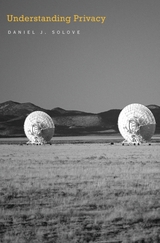 Understanding Privacy
Daniel J. Solove
Harvard University Press, 2010 Privacy is one of the most important concepts of our time, yet it is also one of the most elusive. As rapidly changing technology makes information increasingly available, scholars, activists, and policymakers have struggled to define privacy, with many conceding that the task is virtually impossible.
In this concise and lucid book, Daniel J. Solove offers a comprehensive overview of the difficulties involved in discussions of privacy and ultimately provides a provocative resolution. He argues that no single definition can be workable, but rather that there are multiple forms of privacy, related to one another by family resemblances. His theory bridges cultural differences and addresses historical changes in views on privacy. Drawing on a broad array of interdisciplinary sources, Solove sets forth a framework for understanding privacy that provides clear, practical guidance for engaging with relevant issues.
Understanding Privacy will be an essential introduction to long-standing debates and an invaluable resource for crafting laws and policies about surveillance, data mining, identity theft, state involvement in reproductive and marital decisions, and other pressing contemporary matters concerning privacy.
Understanding Processes of Ethnic Concentration and Dispersal
Jennifer Leigh McGarrigle
Amsterdam University Press, 2004 The arts and sciences have evolved primarily through specialization and broadening of scope. Stepping outside of one’s established discipline, however, involves a danger of "shallowness," even if the primary challenge was a "deep" integration problem. All too often, current ways of defining academic disciplines and fields of research fail to do justice to new approaches—a problem this volume tackles as it debates the possible futures of scholarship and academia.
Understanding Radar Systems
Simon Kingsley
The Institution of Engineering and Technology, 1999 What is radar? What systems are currently in use? How do they work? Understanding Radar Systems provides engineers and scientists with answers to these critical questions, focusing on actual radar systems in use today. It's the perfect resource for those just entering the field or a quick refresher for experienced practitioners. The book leads readers through the specialized language and calculations that comprise the complex world of modern radar engineering as seen in dozens of state-of-the-art radar systems. The authors stress practical concepts that apply to all radar, keeping math to a minimum. Most of the book is based on real radar systems rather than theoretical studies. The result is a valuable, easy-to-use guide that makes the difficult parts of the field easier and helps readers do performance calculations quickly and easily.
Understanding Restorative Justice: How Empathy Can Close the Gap Created by Crime
Pete Wallis
Bristol University Press, 2014 This book offers a clear and detailed introduction to the ways that restorative justice can be used to nurture empathy, exploring such key themes as responsibility, shame, forgiveness, and closure. It uses numerous case studies to explore the timeline of restorative justice, from an initial offense, through the criminal justice process, then into the heart of the restorative meeting and beyond. It will serve as the perfect introduction for those new to restorative justice, as well as a best practices guide for acting practitioners.
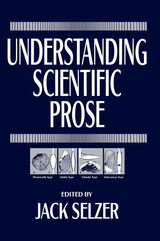 Understanding Scientific Prose
Edited by Jack Selzer
University of Wisconsin Press, 1993 Examining science as a rhetorical enterprise, this book seizes upon one scientific essay—"The Spandrels of San Marco and the Panglossian Paradigm: A Critique of the Adaptationist Programme"—and probes it from many angles. Written by prominent evolutionary theorists Stephen Jay Gould and Richard C. Lewontin and first published in the Proceedings of the Royal Society of London in 1979, the "Spandrels" article is both serious science and vivid prose. Applying methods inspired by Louis Althusser, Michel Foucault, Jacques Derrida, Ferdinand de Saussure, and others, the contributors employ a range of interpretive strategies. Stephen Jay Gould adds his own comments, and the full text of the essay "Spandrels" is reproduced as an appendix. Applying methods inspired by Louis Althusser, Michel Foucault, Jacques Derrida, Ferdinand de Saussure, and others, the contributors employ a range of interpretive strategies. Stephen Jay Gould adds his own comments, and the full text of the essay "Spandrels" is reproduced as an appendix.
 Understanding Self-Help/Mutual-Aid: Experiential Learning in the Commons
Thomasina Jo Borkman
Rutgers University Press, 1999 Self-help groups have encountered fierce criticism as places where individuals join to share personal problems and to engage in therapeutic intervention without the aid of skilled professionals. These groups have flourished since the 1970s and continue to serve more people than professional therapy. Yet these groups have been criticized as fostering a culture of whiners and victims, and not using professional help as needed. Thomasina Jo Borkman debunks this commonly held assessment, and also examines the reasons for these groups’ enduring popularity since the 1960s—more people attend these meetings (word?) than see professional therapists. What accounts for their success and popularity? Understanding Self-Help / Mutual-Aid Groups is the first book to describe three stages of individual and group evolution that is part of this organization’s very structure; it also reconceptualizes participants’ interactions with professionals. The group as a whole, Borkman posits, draws on the life experiences of its membes to foster nurturing, support, and transformation through a “circle of sharing.” Groups create more positive and less stigmatizing “meaning perspectives” of the members’ problems than is available from professionals or lay folk culture.
Understanding Street-Level Bureaucracy
Edited by Peter Hupe, Michael Hill, and Aurélien Buffat
Bristol University Press, 2015 This book draws together internationally acclaimed scholars from across the world to address the roles of public officials whose jobs involve dealing directly with the public. Covering a broad range of jobs, including the delivery of benefits and services, the regulation of social and economic behavior, and the expression and maintenance of public values, the book presents in-depth discussions of different approaches, the possibilities for discretionary autonomy, and directions for further research in the field.
Understanding Telecommunications Business
Andy Valdar
The Institution of Engineering and Technology, 2015 We all enjoy the benefits of the 'information age' but we may not be aware of the range of technologies and infrastructure that underpins the Internet and the services that it supports. There are many companies involved in the business of providing and operating such resources. This book attempts to explain the complex interplay between the companies, how their businesses operate, and how they seek to make a profit.
Understanding Telecommunications Networks
Andy Valdar
The Institution of Engineering and Technology, 2006 This book explains how telecommunications networks work. It uses straightforward language supported by copious block-schematic diagrams so that non-engineers and engineers alike can learn about the principles of fixed and mobile telecommunications networks carrying voice and data. The book covers all aspects of today's networks, including how they are planned, formed and operated, plus next generation networks and how they will be implemented.
Understanding Telecommunications Networks
Andy Valdar
The Institution of Engineering and Technology, 2017 A telecommunications network is an electronic system of links, nodes and the controls that govern their operations to allow voice and data transfer among users and devices. Examples of telecommunications networks are the telephone networks, computer networks and the Internet. Understanding Telecommunications Networks provides a comprehensive explanation of how various systems and technologies link together to construct fixed and mobile telecommunications networks and provide services. It uses straightforward language supported by block-schematic diagrams so that non-engineers and engineers alike can learn about the principles.
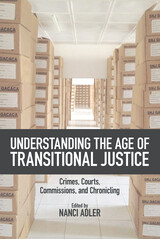 Understanding the Age of Transitional Justice: Crimes, Courts, Commissions, and Chronicling
Adler, Nanci
Rutgers University Press, 2018 Since the 1980s, an array of legal and non-legal practices—labeled Transitional Justice—has been developed to support post-repressive, post-authoritarian, and post-conflict societies in dealing with their traumatic past. In Understanding the Age of Transitional Justice, the contributors analyze the processes, products, and efficacy of a number of transitional justice mechanisms and look at how genocide, mass political violence, and historical injustices are being institutionally addressed. They invite readers to speculate on what (else) the transcripts produced by these institutions tell us about the past and the present, calling attention to the influence of implicit history conveyed in the narratives that have gained an audience through international criminal tribunals, trials, and truth commissions. Nanci Adler has gathered leading specialists to scrutinize the responses to and effects of violent pasts that provide new perspectives for understanding and applying transitional justice mechanisms in an effort to stop the recycling of old repressions into new ones.
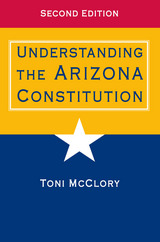 Understanding the Arizona Constitution
Toni McClory
University of Arizona Press, 2010 Arizona became the nation’s 48th state in 1912 and since that time the Arizona constitution has served as the template by which the state is governed. Toni McClory’s Understanding the Arizona Constitution has offered insight into the inner workings and interpretations of the document—and the government that it established—for almost a decade.
Since the book’s first publication, significant constitutional changes have occurred, some even altering the very structure of state government itself. There have been dramatic veto battles, protracted budget wars, and other interbranch conflicts that have generated landmark constitutional rulings from the state courts. The new edition of this handy reference addresses many of the latest issues, including legislative term limits, Arizona’s new redistricting system, educational issues, like the controversial school voucher program, and the influence of special-interest money in the legislature. A total of 63 propositions have reached the ballot, spawning heated controversies over same-sex marriage, immigration, and other hot-button social issues.
This book is the definitive guide to Arizona government and serves as a solid introductory text for classes on the Arizona Constitution. Extensive endnotes make it a useful reference for professionals within the government. Finally, it serves as a tool for any engaged citizen looking for information about online government resources, administrative rules, and voter rights. Comprehensive and clearly written, this book belongs on every Arizonan’s bookshelf.
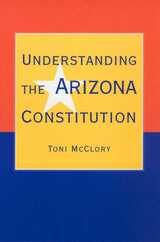 Understanding the Arizona Constitution
Toni McClory
University of Arizona Press, 2001
An authoritative guide to Arizona government— written in plain language!
How do laws make their way through the state legislature?
What are the specific powers of the governor?
How do the courts make public policy?
Can citizens change the constitution?A leading lawyer and college educator who was an assistant attorney general through six governors, Toni McClory has written a definitive guide to Arizona government that is as comprehensive as it is easy to understand. It provides a thorough explanation of the state's constitution and shows the impact that its unique features have had on the everyday operation of the state's political system.Thoroughly up to date and clearly written, this book belongs on every Arizonan's shelf. Much of the information it contains is based on original research compiled by the author from primary sources and draws on her direct experience with government processes, officials, and events.• For concerned citizens, it offers topics of special interest to voters—including facts about initiatives and referenda and a chapter on local government—and contains references to online government resources.
• For lawyers and business people, it makes available a brief yet sophisticated synopsis of state government along with a wealth of citations and supporting detail.
• For students and teachers, it offers an exceptionally readable introductory text that relies heavily on primary sources and features "pro and con" passages-examining both sides of important issues-that are designed to stimulate critical thinking.From administrative rules to water law, Understanding the Arizona Constitution is your complete guide to the inner workings of the state. It is an essential reference for today's citizens and tomorrow's leaders.
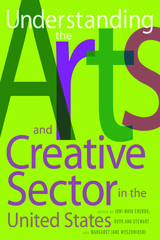 Understanding the Arts and Creative Sector in the United States
Cherbo, Joni Maya
Rutgers University Press, 2008 The arts and creative sector is one of the nation's broadest, most important, and least understood social and economic assets, encompassing both nonprofit arts and cultural organizations, for-profit creative companies, such as advertising agencies, film producers, and commercial publishers, and community-based artistic activities. The thirteen essays in this timely book demonstrate why interest in the arts and creative sector has accelerated in recent years, and the myriad ways that the arts are crucial to the social and national agenda and the critical issues and policies that relate to their practice. Leading experts in the field show, for example, how arts and cultural policies are used to enhance urban revitalization, to encourage civic engagement, to foster new forms of historic preservation, to define national identity, to advance economic development, and to regulate international trade in cultural goods and services.
Illuminating key issues and reflecting the rapid growth of the field of arts and cultural policy, this book will be of interest to students at both the undergraduate and graduate levels, to arts educators and management professionals, government agency and foundation officials, and researchers and academics in the cultural policy field.
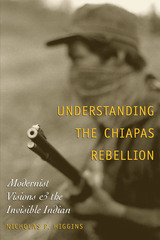 Understanding the Chiapas Rebellion: Modernist Visions and the Invisible Indian
By Nicholas P. Higgins
University of Texas Press, 2004 To many observers in the late 1980s and early 1990s, Mexico appeared to be a modern nation-state at last assuming an international role through its participation in NAFTA and the OECD (Organization of Economic Cooperation and Development). Then came the Zapatista revolt on New Year's Day 1994. Wearing ski masks and demanding not power but a new understanding of the indigenous peoples of Mexico, Subcomandante Marcos and his followers launched what may be the first "post" or "counter" modern revolution, one that challenges the very concept of the modern nation-state and its vision of a fully assimilated citizenry. This book offers a new way of understanding the Zapatista conflict as a counteraction to the forces of modernity and globalization that have rendered indigenous peoples virtually invisible throughout the world. Placing the conflict within a broad sociopolitical and historical context, Nicholas Higgins traces the relations between Maya Indians and the Mexican state from the conquest to the present—which reveals a centuries-long contest over the Maya people's identity and place within Mexico. His incisive analysis of this contest clearly explains how the notions of "modernity" and even of "the state" require the assimilation of indigenous peoples. With this understanding, Higgins argues, the Zapatista uprising becomes neither surprising nor unpredictable, but rather the inevitable outcome of a modernizing program that suppressed the identity and aspirations of the Maya peoples.
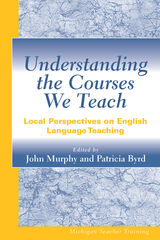 Understanding the Courses We Teach: Local Perspectives on English Language Teaching
John Murphy and Patricia Byrd, Editors
University of Michigan Press, 2001 Understanding the Courses We Teach is a collection of pieces by teachers about actual teaching situations. This volume provides current and prospective ESL teachers with the opportunity to examine experienced teachers' ways of addressing locally situated issues of teaching and learning within ESL and EFL classrooms. By focusing on individual teachers' discussions of instructional plans, decisions, and experiences in specific courses, this collection complements other training and development resources, such as methods-course textbooks.
Individual chapters are rich in descriptive details and resonate with the contributor-teachers' personal investment in teaching. John Murphy and Patricia Byrd have arranged these chapters in four thematic clusters, the first dealing with general purposes instruction, including workplace literacy, community-based ESL, and courses designed for rich recent immigrants; the second with the teaching of English as a foreign language; the third with university credit-bearing courses focused on the teaching of English for academic purposes; and the fourth with noncredit university-affiliated courses offered through intensive English programs.
The contributors represent a variety of educational settings and many different countries and include many of the most well-known researchers in the field.
.
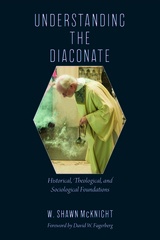 Understanding the Diaconate: Historical, Theological, and Sociological Foundations
W. Shawn McKnight
Catholic University of America Press, 2018 What is a deacon? More than fifty years since the restoration of the permanent diaconate by the Second Vatican Council, the office of deacon is still in need of greater specificity about its purpose and place within the mission and organizational structure of the Church. While the Church is more than a social reality, the Church nonetheless has a social reality. Our understanding of the diaconate therefore benefits from a theological discussion of the divine element of the Church and a sociological examination of the human element. Understanding the Diaconate adds the resources of sociology and anthropology to the theological sources of scripture, liturgy, patristic era texts, theologians, and magisterial teachings to conclude that the deacon can be understood as “social intermediary and symbol of communitas” who serves the participation of the laity in the life and mission of the Church. This research proposes the deacon as a servant of the bond of communion within the Church (facilitating the relationship between the bishop/priest and his people), and between the People of God and the individual in need. Thus authentic diaconal ministry includes a vast array of many concrete contexts of pastoral importance where one does more than simply serve at Mass.
Understanding the finance of welfare (Second edition): What welfare costs and how to pay for it
Howard Glennerster
Bristol University Press, 2009 The second edition of this textbook assesses the ways in which health care, personal social services, education, housing, pensions and social security are funded in the UK. In each case the UK is compared with other countries. The book considers how services are rationed and asks what future there is for the funding of Western welfare states.
Understanding the Infinite
Shaughan Lavine
Harvard University Press, 1998 How can the infinite, a subject so remote from our finite experience, be an everyday tool for the working mathematician? Blending history, philosophy, mathematics, and logic, Shaughan Lavine answers this question with exceptional clarity. Making use of the mathematical work of Jan Mycielski, he demonstrates that knowledge of the infinite is possible, even according to strict standards that require some intuitive basis for knowledge.
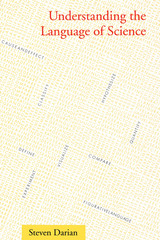 Understanding the Language of Science
By Steven Darian
University of Texas Press, 2003 2004 — A Choice Outstanding Academic Book
From astronomy to zoology, the practice of science proceeds from scientific ways of thinking. These patterns of thought, such as defining and classifying, hypothesizing and experimenting, form the building blocks of all scientific endeavor. Understanding how they work is therefore an essential foundation for everyone involved in scientific study or teaching, from elementary school students to classroom teachers and professional scientists.
In this book, Steven Darian examines the language of science in order to analyze the patterns of thinking that underlie scientific endeavor. He draws examples from university science textbooks in a variety of disciplines, since these offer a common, even canonical, language for scientific expression. Darian identifies and focuses in depth on nine patterns—defining, classifying, using figurative language, determining cause and effect, hypothesizing, experimenting, visualizing, quantifying, and comparing—and shows how they interact in practice. He also traces how these thought modes developed historically from Pythagoras through Newton.
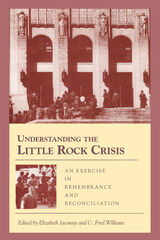 Understanding the Little Rock Crisis: An Exercise in Remembrance and Reconciliation
Elizabeth Jacoway
University of Arkansas Press, 1999 In the fall of 1957, Gov. Orval Faubus used the Arkansas National Guard to prohibit nine black children from entering Little Rock's Central High School. In the fall of 1997, the "Little Rock Nine" returned to Central High, this time escorted by President Bill Clinton. In the forty years that had intervened, the United States witnessed substantial changes in American race relations, but the city of Little Rock had not overcome its legacy of strife. The two-year crisis, once over, left behind confusion and misunderstanding. Racial and class-based mistrust lingers in the city of Little Rock, and, nationally and internationally, perceptions of Arkansas are still tied to the decades-old images of hatred and strife that marked the Little Rock crisis. In 1997, the University of Arkansas at Little Rock sponsored a gathering of scholars who traced the origins and addressed the legacy of the Central High crisis. Elizabeth Jacoway and C. Fred Williams commissioned a series of original and insightful papers that discussed economic, constitutional, historical, and personal aspects of the crisis and of segregation. Jacoway and Williams have collected the best of these papers, by such authors as Sheldon Hackney, Joel Williamson, and James Cobb and offer them here in the hope of enhancing understanding of, and creating a dialogue about, this defining moment in American history. This collection of accessible and provocative essays on a signal event in civil rights in this nation will resonate broadly and appeal to a diverse audience.
Understanding the Medieval Meditative Ascent: Augustine, Anselm, Boethius and Dante
Robert McMahon
Catholic University of America Press, 2006 Understanding the Medieval Meditative Ascent uses literary analysis to discover new philosophical meanings in these works. Clearly written in nontechnical language, its account of their literary structures and of the hidden meanings they generate will inform nonspecialist and specialist alike.
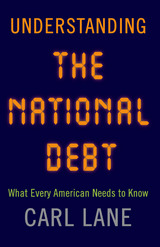 Understanding the National Debt: What Every American Needs to Know
Carl Lane
Westholme Publishing The staggering United States debt has a direct impact on every American, yet few are aware of where the debt came from and how it affects their lives
The United States has a debt problem—we owe more than $18 trillion while our gross domestic product, the value of all goods and services produced in America, is only $17.5 trillion. To pay down the debt, some recommend austerity, cutting federal expenditures. Others suggest increasing taxes, especially on the wealthiest Americans. In Understanding the National Debt: What Every American Needs to Know, economic historian Carl Lane urges that the national debt must be addressed in ways beyond program cuts or tax increase alternatives, but change can only occur when more Americans understand what constitutes our debt and the problems it causes. The gross national debt is composed of two elements: the public debt and “intragovernment holdings.” The public debt consists of bonds, bills, and notes purchased by individuals, banks, insurance companies, hedge and retirement funds, foreign governments, and university endowments. Intragovernment holdings refers to money that the U.S. Treasury borrows from other parts of the government, principally Social Security and Medicare. This accounts for approximately a quarter of the gross national debt, but that is money that we owe to ourselves, not another entity. The more the government borrows, the less is available for private sector investment, creating a “squeeze” effect that inhibits economic growth. The most burdensome problem is the interest due each year on the debt. Every dollar spent on interest is a dollar less for other purposes. Those elements of the federal budget which are termed “discretionary” suffer. The mandatory elements of the budget—Social Security, Medicare, Medicaid, and the interest on the debt—must be provided for, but defense and national security, education, energy, infrastructure repair and development, and other needs wind up with less. By understanding the national debt we have an opportunity to address our real debt challenge—its principal and interest.
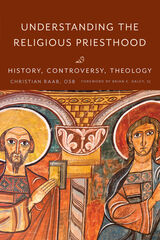 Understanding the Religious Priesthood: History, Controversy, Theology
Christian, OSB Raab
Catholic University of America Press, 2020 Most contemporary theologies of Holy Orders consider priesthood mainly in its diocesan context and most contemporary theologies of religious life do not consider how ordained ministry functions when it is internal rather than external to religious life. Understanding the Religious Priesthood provides a history and theology of religious priesthood that contributes to our understanding of this vocation’s identity and mission. It uncovers what religious priesthood shares with diocesan priesthood and non-ordained religious life and what makes it different from both those other vocations.
Christian Raab begins by tracing the history of religious priesthood from its origins in the early Church to the eve of the Second Vatican Council. He demonstrates that religious priests often faced questions about how to reconcile their two callings, but that they also provided answers in their theologies and spiritualities of priesthood and religious life. Meanwhile, they made key contributions to the Church’s life and mission. Raab then investigates the teachings of the Second Vatican Council on priesthood and religious life. Observing that the Council presented priesthood according to a diocesan typology and presented religious life without sacerdotal associations, he argues that the lack of imagery of religious priesthood contributed to a post-conciliar vocational identity crisis among religious priests. He then seeks to remedy this lacuna by appealing to the biblical images for religious priesthood Hans Urs von Balthasar offered in his theology of vocations. Raab argues that Balthasar’s imagery is a promising way forward for understanding the identity and mission of religious priesthood. In a final part, Raab provides a substantial theological articulation of religious priesthood which illuminates its liturgical signification, ecclesial mediation and mission, and ministerial identity. Here he draws not only from Balthasar but also from Pope John Paul II, Yves Congar, Jean-Marie Tillard, Brian Daley, and Guy Mansini to construct his profile.
|
|



